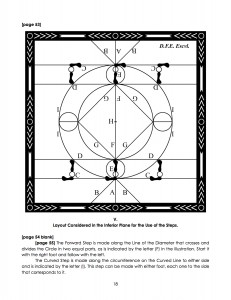
This post is password protected. To view it please enter your password below: Password: … [Read more...]
Mandirigma Research Organization

This post is password protected. To view it please enter your password below: Password: … [Read more...]
This post is password protected. To view it please enter your password below: Password: … [Read more...]
This post is password protected. To view it please enter your password below: Password: … [Read more...]
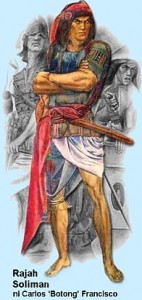
Rajah Suliman, Last Muslim King of Manila Rajah Sulaiman III (1558 - 1575) was the last native Muslim king of Manila, now the site of the capital of the Philippines, Manila. He was one of three chieftains, along with Rajah Rajah Lakandula and Adults, to have played a significant role in the Spanish conquests of the kingdoms of the Manila Bay-Pasig River area, first by Martín de Goiti, and Juan de Salcedo in 1570; and later by Miguel Lopez de Legazpi in 1571 The following biography of Rajah Soliman was written in Tagalog by Jose N. Sevilla and Tolentino in the early 1920s: TALAMBUHAY NI RAHA SOLIMAN Bago nagíng̃ Rahá si Solimán, ay nagíng̃ katulong̃ muna sa pang̃ang̃asiwà ng̃ mg̃a súliranin dito sa Maynilà, ni Raháng̃ Matandâ. Si Lakán Dulà na nanánahanan sa Tundó ay siyá niyáng̃ kasama. Itó ay nang̃ kapanáhunan ni Raháng̃ Matandâ nang̃ taóng̃ 1570. Noón ay isáng̃ pulutóng̃ nang̃ mg̃a sasakyáng̃ kastilà na pinamumunuan ni Martin de Goití at Juan de Salcedo ang̃ dumaong̃ sa luók ng̃ Maynilà. Niyaóng̃ unang̃ datíng̃ dito niná Goití ay dî sila nakalunsád pagdaka. Ang̃ Maynilà, ay may matitibay na mg̃a muóg at sila'y pinaputukán at sinagupà. Nabalitaan niláng isá sa mg̃a makapang̃yarihan doón ay si Solimán, kaya't nagpadalá sina Goití rito ng̃ sugò na nagsásaysáy na silá'y dî naparito upáng̃ makidigmâ kundî upáng̃ makipagkásundô, at ang̃ ganitó'y tinugón sa pamamagitan ng̃ sugò, na ang̃ Hari sa Maynilà ay nagnanasà ng̃ makipagkaibigan sa mg̃a kastilà. Pagtang̃gáp ni Goití ng̃ paklí ni Solimán ay nasók siyá at ang̃ kanyáng̃ mg̃a tao sa ilog ng̃ Pasig at silá'y lumunsád sa isáng̃ baybáy na itinakdâ ng̃ Harì. Sinalubong̃ silá ni Raháng Matandâ at nakipagkamáy sa kanilá, pagkaliban ng̃ iláng̃ sandali ay dumatíng si Rahá Solimán at nakipágkamáy din ng̃uni't nagpasubalì ng̃ gayari: «Kamí ay nagnánasang̃ makipagkaibigan sa mg̃a kastilà samantalang̃ silá'y mabuti sa amin; ng̃uni't mahíhirapan silá ng̃ gaya ng̃ hirap na tiniís na ng̃ ibá, kailán ma't nasain niláng̃ kami'y alisán ng̃ puri». Pagkaraán ng̃ iláng̃ araw si Goití ay nagkulang̃ sa pagkakáibigan sa pagpapaputók ng̃ kaniláng̃ kanyón, at si Rahá Solimán ay napilitang̃ magbago ng̃ kilos. Ipinawasák nitó ang̃ mg̃a sasakyán nina Goití at ipinapuksâ ang̃ kanyáng̃ mg̃a kawal. Nápakabuti ang̃ pagtatang̃gól sa mg̃a kutà at dî nagawâ nang̃ mg̃a kastilà ang̃ makapasok agád, ng̃uni't nang̃ mang̃asalantà ang̃ mg̃a tao ni Solimán at maubos na ang̃ mg̃a punlô ay napipilan din. At nang̃ makuha ng̃ mg̃a kastilà ang̃ Maynilà ay sinalakay ang̃ bahay ni Solimán at dito'y nátagpuán nilá ang̃ isáng̃ mainam na gusali, maiinam na kasang̃kapang̃ sigay, mg̃a damit na mariring̃al na nagkakahalagá ng̃ may 23.000 piso. Hindî nagtaksíl kailán man si Solimán, gaya ng̃ ipinararatang̃ sa kanyá ng̃ mg̃a kastilà. Siyá'y tumupád lamáng̃ sa kanyáng̃ dakilang̃ katung̃kulan na makibaka sa sino mang̃ magnánasang̃ sumirà ng̃ kanyáng̃ kapuriháng̃ pagkaharì, at yáyamang̃ ang̃ mg̃a kastilà ay siyáng̃ nagpasimulâ ng̃ pagbabaka, ay siyá ay nagtang̃gól lamang̃ at natalo, ng̃uni't hindî kailán man nagtaksíl. Ang̃ kanyáng̃ pagibig sa sariling̃ Lupà ay nagudyók sa kanyáng̃ makibaka at siyá ay nakibaka dahil doón. Kung̃ saán mákikitang̃ ang pagguhò ng̃ kaharian ni Solimàn ay utang̃ sa kagahaman ng̃ isáng̃ lahing̃ mang̃aalipin; sa isáng̃ pámahalaáng̃ pinagágaláw ng̃ lakás ng̃ lakás at di ng̃ lakás ng̃ katuwiran. Kawawang̃ bayang̃ maliliít na linúlupig at ginágahasà ng̃ malalakíng bansâ. Ang̃ daigdíg ay patung̃o sa pagunlád, at buhat niyaóng̃ 1914 na gahasain ang̃ Belhika, ang malalakíng̃ Bansâ ay nagsasapì at ipinagtang̃gól ang̃ katwiran ng̃ maliliít na bayan. Panibagong̃ kilos sa daigdíg na bung̃a ng̃ mayamang̃ diwà ng̃ dakilang̃ Wilson sa kaamerikahan. … [Read more...]
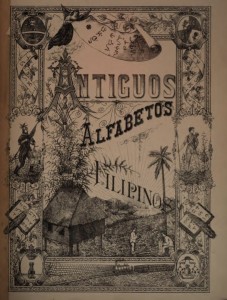
Estudio de los antiguos alfabetos filipinos (1895) Author: Cipriano Marcilla y Martín Publisher: Tipo-litografia del asilo de huérfanos Year: 1895 Language: Spanish … [Read more...]
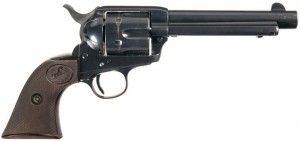
Colt Artillery Model 1873 Single Action Army(SAA) .45 - Barrel Length: 7" and 5½" - Weight: 2.3 lbs - Cartridge Caliber: .45 Long Colt (255 grain) - Muzzle Velocity: 830 fps - Service: 1873–1902 The Colt SAA .45 became the side arm issued to US Army in 1873. The Colt .45 revolver was considered cutting edge technology at the time. The large caliber was believed to quell conflicts and bring peace. It became known as the "Peacemaker". It would be the most popular revolver of the old west. Today it remains synonymous with the Cowboys of the western frontier. The original Colt SAA issued to troops had the 7" barrel. By early 1890s the US Army decided to downsize their force as well as find ways to save on spending. By 1893 many of the Colt SAA revolvers were replaced by the Colt DA .38. It should be noted the phasing out of the Colt SAA .45 was a long process and many still found use as the side arm of select few units. By 1898 the Colt revolvers were modified with a shorter 5½" and issued first to Artillery units. The altered Colts with 5½" barrels would be known and later called the "Artillery Model". The most popular unit to carry the old Colt .45 SAA would be Teddy Roosevelts Rough Riders during the Cuban Campaign. The Colt SAA .45 would truly shine just as the the Philippine-American War was coming to a close and the beginning of the pacification through out the Philippines; most particularly during patrols and expeditions in the Visayan and Moroland(Mindanao) regions. The Colt .38 revolvers provided to be insufficient in stopping and dropping frantically charged assailants. Few regulars and volunteers still carried the older Colt SAA .45 and noted the significant stopping and knock-down power the revolver had over the newer .38s. Officers soon requested an immediate re-issue of old Colt SAA .45s to the Philippine Islands. Because the Colt SAA .45 would still be used in service all the way up to the end of the Philippine-American War, it would be safe to say the Colt .45 was never truly retired in 1893. By the end of 1902 the Philippine-American War closed and the US volunteers began mustering out of service. As US troop presences began to drop in the Philippines, Tafts Philippine Commission would establish a native police force known as the Philippine Constabulary to fill the roll of bring law and order through out the islands. The Philippine Constabulary would be issued the old 1878 Colt Alaskan .45 revolver, which would be re-designated the Colt 1902 Philippine Model. Resulting from the effective use of the Colt Single Action Army .45. Researched and written by Dnvzs Zjzllg … [Read more...]
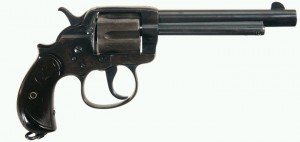
Colt 1902 Philippine Model Double Action .45LC Originally issued as: 1878 Colt Alaskan Revolver Barrel length: 6" Capacity: 6 round swing out cylinder Cartridge Caliber: .45 LC(Long Colt) Weight: 2 lbs Service: 1878-1892; 1902-1908 Adopted earlier in 1878 by US soldiers serving in Alaska, the pistol was nearly phased out by the new issued .38 revolvers. At the end of the Philippine-American War the Philippine Scouts, along with US military units, and the Philippine Constabulary(Native Police force) began expeditions and patrolling through Moroland and Visayan territory. There they found new adversaries waiting and lurking in the dense terrain of both regions, namely the Tad-Tad/Pulajanes of Samar/Leyte and the Juramentado Moros. The native police force were poorly equipped with Springfield Trapdoor "single shot" rifles, and a ill performing .38 Colt revolver side arm. Both proved to have insufficient stopping power of a hard charging swarm of combatants. A shot assailant does not necessarily make them incapacitated. Sword welding Moros and Filipinos were known to charge through heavy gun fire and still be capable of slashing and killing. Requests were quickly made for older issued .45 Colt revolvers, and the US government answered by reissuing out the older 1878 Alaskan Colt Revolvers to the Philippine Constabulary, re-designating them the 1902 Philippine Model. The .45 revolvers performed up to standard and as expected. The stopping power of the .45 cartridge against Filipinos during this era would result in the US government requesting their newly manufactured and issued sidearm to be chambered in .45. The end result is the M1911 Colt automatic pistol chambered in the newly engineered .45ACP cartridge. The Model 1902 revolver is unique by the enlarged trigger guard. At the time the new smokeless powder cartridges also required new primers, which took more effort to ignite; and with it required a stronger trigger spring. The trigger pull became immense. Colt modified the trigger group by use of the enlarged trigger guard, which gave more leverage to pull the trigger. Researched and written by Dnvzs Zjzllg … [Read more...]
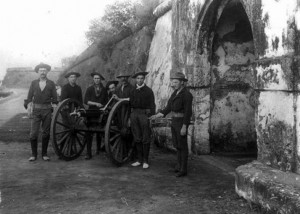
895 Gatling Gun Weight: 395 lbs Barrel length: 32" (6-10 barrels) Cartridge Caliber: .30 cal and 45-70 Range: +1000 yards Rate fire: 600-1000 per minute Service: 1873-1906 Invented by American Dr. Richard Jordan Gatling(neighbor of the Colt family in Hartford Connecticut), the Gatling gun is considered by many to be the first machine gun. It was first introduced during the Civil War in 1865. Several different models existed through out its advent. 6 to 10 barrels are positioned in a cylinder. Each barrel having its own chamber and firing mechanism. Ammunition is placed in a magazine canister and attached on top of the cylinder breech. A crank would be operated by the gunner, which would rotate the cylinder and barrels. The rotation loaded, cocked, fired, and ejected spent cartridges. The Gatling gun initially suffered many issues, as nearly all were hand built at the time and many parts were not uniform. By the 1890s, the Gatling gun had significantly improved, and in 1895 the US Army adopted the weapon. The Gatling gun saw much action during the Spanish American War. It gained fame in Cuba giving support fire while Theodore Roosevelt and the Rough Riders assaulted San Juan Hill. Several examples were later shipped and used in the war in the Philippines. Researched and written by Dnvzs Zjzllg … [Read more...]
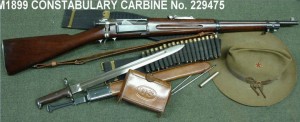
M1899 Philippine Constabulary Krag-Jørgensen Carbine Rifle - Bolt Action - Capacity: 5 round internal box magazine - Cartridge Caliber: .30-40 Krag (US Krags) Smokeless - Service: 1906-1917 The Philippine Constabulary were the native police established in 1902 by Tafts Philippine Commission which oversaw civil affairs of the Philippine Islands. It should be noted the PC's were not soldiers as many confused them to be; they were law enforcement officers paid the Civil Philippine Commission. The Philippine Constabulary were originally issued old US military stock Springfield Trapdoor single-shot 45 rifles from the Indian Wars. During the pacification of the islands after the Phil-Am War, the Trapdoor rifle proved to be inferior when fighting in the dense terrains of the Visayas and Mindanao regions where combatants would rush out in hoards. After the first initial shot, reloading another round became near impossible. As many PC inspectors complained: the Trapdoor rifle became a one shot club. The Springfield Trapdoors were later replaced by the Krag Carbines in early 1906. Unique to only the Philippines, the Krag full length rifles were modified and cut down to a shorter size at the POD(Philippine Ordnance Depot) in Intramurous. The Krag Carbine was also short lived, they would later be replaced by Springfield M1903 rifles by 1910(but Krags would still be in service until 1917). Less than a handful of these Philippine Constabulary Krag Carbines exist today. Making them the mostly highly sought after and prized rifle of all Krag models by gun collectors and Springfield Krag Jørgensen Rifle - Manufactured: Springfield Armory(under license by Krag Jørgensen) - Design: Norwegian - Weight: 8.6lb - Length: 49" - Barrel length: 30" - Cartridge Caliber: 30-40 Krag Smokeless - Capacity: 5 round internal box magazine - Service in US Army: 1892-1903 - Service in Philippine Constabulary: 1906-1917 The US Army adopted the Krag rifle in 1892. Springfield would produce several different variants of the Krag from 1892 to 1899 at their plant in Massachusetts. An estimated 500,000 rifles were produced at Springfield Armory. Production ceased in 1904. The Krag would be the rifle credited for winning the Spanish American War, as well as the Philippine American War. It still remains synonymous to the Span-Am War era. The Krag how ever was very short lived. It only saw two short wars and was already proven to be outclassed, out matched, and obsolete during the first war. The Spanish Mauser proved to be a better all around performer, as well as being a more robust war rifle than the Krag. Loading the Krag was also tedious, as it required loading one round at a time in to the box magazine, where as the Spanish Mauser took 5 round stripper clips that allowed for extremely fast reload. The Mauser was the superior rifle of the two wars, but the American soldiers outnumbered and out-gunned the Spanish and Filipino soldiers armed with Mausers. By 1901 Springfield had developed a new and improved battle rifle that incorporated features and characteristics of both the Spanish Mauser as well as the Krag. The US Army soon adopted Springfields new rifle and named it the M1903. The M1903 were quickly mass produced and outfitted to US Regulars. The Krags however would still find a niche in service. By 1905 the Krags would be re-issued to the Philippine Constabulary and other provincial police departments around the Philippines. Researched and written by Dnvzs Zjzllg … [Read more...]

Spanish Mauser Model 1893 Bolt Action Rifle - Manufactured: Loewe Berlin Germany - Weight: 8.6lb - Barrel length: 29" - Cartridge Caliber: 7mm (7x57mm) Smokeless - Service in Spanish Army: Since 1893 The 1893 Mauser bolt action rifle is considered by many to be one of the most revolutionary firearms in history and way ahead of it's era. Accuracy of the rifle being unmatched during its time. The Mauser rifle saw little improvements to its design through out its service. It would be used by nearly all countries up to and during the second world war. Even by todays standards it is considered extremely accurate next to modern firearms. Nearly all bolt action rifles produced today take some design from the Mauser rifle. The 7mm round created a distinctive sound when whizzing by, the American soldiers called it the "Spanish Hornet". Spain contracted Mauser in Loewe Berlin to produce these rifles for their entire military in the early 1890s. The Mauser were to replace outdated rifles like the Remington Rolling Block. The Mauser later shined and gained an infamous reputation during the Spanish American War at Cuba. The Battle of San Juan Hill would be the most famous battle of the Spanish-American War, as well as being the turning point of the war. 800 Spanish soldiers held the hill against an opposing force made up of nearly 20,000 armed men. 15,000 being made of US Soldiers armed with Krags and Springfield Trapdoor rifles. Although the fight lasted only 2 days and the US gained control of the hill, the end result was near disastrous for the Americans. 200 US soldiers lay dead with 1,100 being wounded. The Spanish resulted in only 58 deaths and 170 wounded. The Spanish Mauser rifle was quickly noted by the US military and the US government for its lethality and superiority in this one battle. At the same time in the Philippines, the 2nd phase of the Revolution was in motion and the Philippine Army trampled across the Spanish troops through out the islands. The Filipinos began to equip themselves with captured and left over Spanish firearms. They would also account for the superior performance in the Mauser. Each battalion would have a separate special unit of expert riflemen/snipers(known as Tiradors); and all were to be armed with nothing but Mauser rifles. The most popular Filipino riflemen unit being under the command of General Geronimo, whom he would name "Tiradores de la Muerte"(Shooters of Death). After the outbreak of the Philippine American War, the Tiradores de la Muerte would gain fame in Dec 1899 when the unit defended the town of San Mateo against 800 US troops under the command of Gen Henry Lawton. On the morning of the battle Lawton walked along the firing line in open field to gain a better view of his troops and the opposing force. The troops noted the distinct firing sound of the Mauser rifles and advised the general to take cover. The general ignored their warning and at that instant was struck in the chest by round fired by one of the tiradores Mauser rifle. Gen Lawton would die with in a few minutes. The rifle shot coming from a distance of 300 yards during a storm with rain. Also during the Spanish American War in the Philippines, in the town of Baler a small detachment of 50 Spanish soldiers barracked themselves inside the towns fortified church. Lt Col Teodorico Luna(relative of Juan and Antonio Luna) would lead the attack against the Spaniards and surrounded the church. The Spaniards would hold this position from July 1898 to June 1899. During their stand, the Spanish American War would end, America would purchase the islands, and Philippine American War was in full swing. The Spanish troops finally surrendered to the Philippine Army and were received as friendly allies. The dominance of the Mauser rifle was accredited for the 11 month long stand off. Due to the superiority and success of the Mauser rifle over the newly issued Krag rifles through out the Spanish American War, the US Government took captured Mausers and gave them to Springfield Armory for their own research and development. The US Government would give Springfield Armory the order to build their own Mauser type rifle. In 1900 Springfield had a prototype rifle with similar characteristics of both the Mauser and Krag rifle. The US Government approved the design, and the end result is the M1903 Springfield bolt action rifle in 30-06. It should be noted that Springfield Armory at the time was under government control, but in itself was still a separate entity as a firearms manufacturer. The US Government in a way did not purposely copy the designs, but being Springfield Armory fell under the control of the US Government, Mauser took action against the US government and not Springfield Armory. Both Mauser and the US Government realized the similar features and agreed it infringed on Mausers design patents. The US Government … [Read more...]
U.S. Army: 11 Infantry Regiment By The Institute of Heraldry Distinctive Unit Insignia Description A silver color metal and enamel device 1 1/8 inches (2.86cm) in height overall consisting of a shield blazoned: Azure, Satanta's arrow in fess Argent between in chief a castle Or in base a kampilan and bolo in saltire of the second hilted of the third. On a chief embattled of the second a cross Gules. Symbolism The symbolism is that of the coat of arms. Background The distinctive unit insignia was approved on 28 Mar 1923. Coat Of Arms Blazon Shield Azure, Satanta's arrow in fess Argent between in chief a castle Or in base a kampilan and bolo in saltire of the second hilted of the third. On a chief embattled of the second a cross Gules. Crest On a wreath of the colors a fusil Gules bearing a cross patée Argent charged with an acorn of the first. Motto SEMPER FIDELIS (Always Faithful). Symbolism The shield is blue for infantry. Service in the Spanish War is shown by the castle and in the Indian Wars by Satanta's "arrow." The most important Indian campaign of this regiment was against the Kiowas, Comanches and Cheyenne in 1874. Satanta was a noted Kiowa chief who died just previous to this campaign. His "arrow" was really a spear with feathers on the end and a handle. The kampilan and bolo represent engagements against the Moros of Mindanao and the Filipinos of the Visayas. Service in the World War is shown by the chief bearing the cross of the ancient Lords of Dun to commemorate the crossing of the Meuse at Dun. The embattled partition represents the siege of Chattanooga in 1863. The crest consists of the Civil War badges of the 1st Division, 14th Army Corps and 2d Division, 5th Army Corps, and the World War 5th Division shoulder sleeve insignia. Background The coat of arms was approved on 12 Oct 1920. … [Read more...]
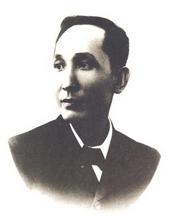
Apolinario Mabini Hero of the Philippine Revolution Conscience of the Philippine Revolution the Sublime Paralytic key adviser of Emilio Aguinaldo proposed the first constitution of the Philippine Republic born July 22, 1864 Barrio Talaga, Tanawan Batangas to Inocencio Mabini, Dionisia Maranan died May 13, 1903 It was immediately before the proclamation of independence that a young man was brought before Aguinaldo as his adviser. He was Apolinario Mabini. Born of very poor parents, Inocencio Mabini and Dionisia Maranan, in Talaga, Tanawan, Batangas. Mabini studied in a school in Tanawan, then conducted by a certain Simplicio Avelino. Much later, he transferred to a school conducted by the famous pedagogue, Father Valerio Malabanan. He continued his studies at the San Juan de Letran and at the University of Sto. Tomas where he received his law degree in 1894. His dream to defend the poor led him to forsake the priesthood, which his mother wanted him to take. Early in 1896, he contracted an illness, probably infantile paralysis, that led to the paralysis of his lower limbs. When the revolution broke out the same year, the Spanish authorities, suspecting that he was somehow involved in the disturbance, arrested him. The fact, however, that he could not move his lower limbs showed the Spaniards that they had made a mistake. He was released and sent to the San Juan de Dios Hospital. Mabini, it must be noted, was not entirely free from nationalistic association, for he was a member of Rizal's La Liga Filipina and worked secretly for the introduction of reforms in the administration of government. In 1898, while vacationing in Los Baños, Aguinaldo sent for him. It took hundreds of men taking turns at carrying the hammock he was in to bring Mabini to Kawit. Aguinaldo, upon seeing Mabini's physical condition, thought that he must have made a mistake in calling for him to help him in his work. What could a man in such a condition do to help him? But when Mabini spoke, Aguinaldo's doubts vanished. There was firmness in the sick man's voice, and Aguinaldo decided to make him his trusted adviser. From then on, it was Mabini who stood behind Aguinaldo. Envious enemies called him the "Dark Chamber of the President", but his admirers called him the "Brains of the Revolution". History of the Filipino People. Teodoro A. Agoncillo --- Apolinario Mabini Born of a poor family, Apolinario Mabini was always studious. He was always sad and silent and liked to sit alone to meditate. Mabini studied at San Juan de Letran where he got his Bachelor of Arts degree and Professor of Latin. He also finished Law. He was a spokesman of the Congress, and a notary public. In early 1896, he contracted a severe fever which paralyzed him for the rest of his life. He was later called the Sublime Paralytic. Mabini was most active in the revolution in 1898, when he became the chief adviser of Gen. Aguinaldo during the revolution. He drafted decrees and proposed a constitution for the Philippine Republic. He made the plans for the revolutionary government. In 1899, he was captured by the Americans but was later set free. In 1901, he was exiled to Guam but returned to the Philippines in 1903 after agreeing to take an oath of allegiance to the US. He took his oath on February 26, 1903 before the Collector of Customs. On May 13, 1903, he died of cholera in Manila. Excerpts from Talambuhay ng mga Bayani by Rene Alba --- Apolinario 'Lumpo' Mabini y Maranan (July 23, 1864 — May 13, 1903) Apolinario 'Lumpo' Mabini y Maranan (July 23, 1864 — May 13, 1903) was a Filipino political philosopher and revolutionary who wrote a constitutional plan for the first Philippine republic of 1899-1901, and served as its first prime minister in 1899. In Philippine history texts, he is often referred to as "the Sublime Paralytic", and as "the Brains of the Revolution." To his enemies and detractors, he is referred to as the "Dark Chamber of the President." Early life of Apolinario Mabini Mabini was born on July 23, 1864 in Barangay Talaga in Tanauan, Batangas. He was the second of eight children of Dionisia Maranan, a vendor in the Tanauan market, and Inocencio Mabini, an unlettered peasant. Mabini began informal studies under his maternal grandfather, who was the village teacher. Because he demonstrated uncommon intelligence, he was transferred to a regular school owned by Simplicio Avelino, where he worked as a houseboy, and also took odd jobs from a local tailor - all in exchange for free board and lodging. He later transferred to a school conducted by the Fray Valerio Malabanan, whose fame as an educator merited a mention in José Rizal's novel El Filibusterismo. In 1881 Mabini received a scholarship to go to the Colegio de San Juan de Letran in Manila. An anecdote about his stay there says that a professor there decided to pick on him because his shabby clothing … [Read more...]
15th Cavalry Regiment Distinctive Unit Insignia Description A Gold color metal and enamel device 1 1/8 inches (2.86 cm) in height overall consisting of a shield blazoned: Per fess Gules and Argent in chief a lion passant Or and in base a kris and kampilan saltirewise Sable fimbriated Or. Attached below and to the left of the shield a Gold turning scroll inscribed "TOUS POUR UN" in Red letters. And attached below and to the right of the shield a Gold turning scroll inscribed "UN POUR TOUS" in Red letters. Symbolism The red and white divided shield represents the old Cavalry guidon. The regiment saw good fighting in the Philippines as indicated by the crossed kris and kampilan of the Moro and Lake Lanao campaigns. In the war with Germany, the regiment was in France in the vicinity of Bordeaux and the golden lion is taken from the arms of that city. The translation of the motto "All for one, one for all" is indicative of the spirit , which has made the regiment. Background The distinctive unit insignia was originally approved for the 15th Cavalry on 6 April 1935. It was redesignated for the 15th Cavalry Reconnaissance Squadron, Mechanized on 10 November 1944. It was redesignated on 21 January 1948, for the 15th Constabulary Squadron. The insignia was redesignated for the 15th Cavalry on 28 November 1958. It was redesignated for the 15th Armor on 13 November 1963. The distinctive unit insignia was redesignated for the 15th Cavalry on 2 August 1968. The insignia was amended to correct the description on 4 October 2002. Coat Of Arms Blazon Shield Per fess Gules and Argent in chief a lion passant Or and in base a kris and kampilan saltirewise of the first hilted Sable. Crest On a wreath of the colors Argent and Gules a setting sun behind "the Golden Gate" all Proper. Motto TOUS POUR UN, UN POUR TOUS (All For One, One For All). Symbolism Shield The red and white divided shield represents the old Cavalry guidon. The regiment saw good fighting in the Philippines as indicated by the crossed kris and kampilan of the Moro and Lake Lanao campaigns. In the war with Germany, the regiment was in France in the vicinity of Bordeaux and the golden lion is taken from the arms of that city. The translation of the motto "All for one, one for all" is indicative of the spirit , which has made the regiment. Crest The "Golden Gate" is the portico called "through the portals of the past" which is now in Golden Gate Park, San Francisco. It was one of the few things left standing after the fire of 1906 and was removed and reerected as noted. The birthplace of the regiment is indicated by the crest. Background The coat of arms was originally approved for the 15th Cavalry on 2 November 1921. It was redesignated for the 15th Cavalry Reconnaissance Squadron on 10 November 1944. It was redesignated on 21 January 1948, for the 15th Constabulary Squadron. The insignia was redesignated for the 15th Cavalry on 28 November 1958. It was redesignated for the 15th Armor on 13 November 1963. The coat of arms was redesignated for the 15th Cavalry on 2 August 1968. … [Read more...]
112 Military Police Battalion Distinctive Unit Insignia Description A silver color metal and enamel device 1 1/8 inches (2.86 cm) in width consisting of a red and blue arrowhead surmounted by a spearhead of white affixed to a green shaft; overall two silver color metal Barongs in saltire. Attached below the device a silver metal scroll inscribed “GUARDIANS OF HONOUR” in black letters. Symbolism The arrowhead alludes to New Guinea, World War II. The spearhead, representative of the arrowhead on the campaign streamer, is indicative of the Battalion’s participation in the assault landing on New Guinea. The crossed Barongs refer to service in the Philippines, World War II. The colors red, white, and blue represent the Philippine Presidential Unit Citation awarded the unit for service in World War II. The blue area is also commemorative of the Distinguished Unit Citation awarded the Battalion. The green is the color of the Military Police Corps. The upright position of the spear further alludes to the capabilities of the Battalion in their current mission. Background The distinctive unit insignia was approved on 13 December 1968. Coat Of Arms Blazon Shield Or, an arrowhead point up per pale Gules and Azure surmounted by a spear, palewise point to chief Vert fimbriated Argent barb of the last, overall a pair of Barongs in saltire of the like, all within a bordure Green. Crest That for the regiments and separate battalions of the Mississippi Army National Guard: From a wreath Or and Vert, a slip of magnolia full flower with leaves Proper behind a trident Sable. Motto GUARDIANS OF HONOUR. Symbolism Shield The arrowhead and spear, representative of the arrowhead on the campaign streamer, is indicative of the Battalion’s participation in the assault landing on New Guinea during World War II. The crossed Barongs refer to service in the Philippines, World War II. The colors red, white, and blue represent the Philippine Presidential Unit Citation awarded the unit for service in World War II. The blue area is also commemorative of the Presidential Unit Citation awarded the Battalion. Green is the color of the Military Police Corps. The upright position of the spear further alludes to the capabilities of the Battalion in their current mission. Crest The crest is that of the Mississippi Army National Guard. Background The coat of arms was approved on 26 January 1998. The insignia was amended to correct the spelling of the motto on 29 January 2009. … [Read more...]
138 Signal Battalion Distinctive Unit Insignia Description A silver color metal and enamel device 1 1/8 inches (2.86cm) in height overall consisting of a shield emblazoned: Per pale Tenné and Sable, a pile between a mullet of eight points and three kampilans bendwise in pale Argent. Attached below the shield a silver motto scroll inscribed "SUCCESS OF COMMAND" in black letters. Symbolism Orange and white are the colors used by the Signal Corps. The three kampilans represent the unit’s campaign service in the Philippines and the star is for the award of the Philippine Presidential Unit Citation. The searchlight in center suggests one of the functions of the unit. Background The distinctive unit insignia was approved 20 Feb 1962. Coat Of Arms Blazon Shield Per pale Tenné and Sable, a pile between a mullet of eight points and three kampilans bendwise in pale Argent. Crest That for the regiments and separate battalion of the Indiana National Guard: On a wreath of the colors, Argent and Tenné, a demi-lion rampant Argent, holding in dexter paw a laurel branch Vert. Motto SUCCESS OF COMMAND Symbolism Orange and white are the colors used by the Signal Corps. The three kampilans represent the unit’s campaign service in the Philippines and the star is for the award of the Philippine Presidential Unit Citation. The searchlight in center suggests one of the functions of the unit. Background The coat of arms was approved on 20 Feb 1962. … [Read more...]
Philippine Command By The Institute of Heraldry Shoulder Sleeve Insignia Description On a blue oval 2 1/2 inches in length by 2 inches in width a white sea lion brandishing a sword in its right paw. Symbolism The sea lion is from the coat of arms of Spain (Aragon) and suggest the Spanish heritage as well as the maritime nature of the area where the command was operational. Background The insignia was originally approved for the Philippines Department on July 8, 1922. It was redesignated for the Philippines-Ryukyus Command on August 14, 1947 and redesignated for the Philippines Command on August 1, 1949. (TIOH Drawing Number A-1-54) … [Read more...]
U.S. Army: 11 Infantry Regiment Distinctive Unit Insignia Description A silver color metal and enamel device 1 1/8 inches (2.86cm) in height overall consisting of a shield blazoned: Azure, Satanta's arrow in fess Argent between in chief a castle Or in base a kampilan and bolo in saltire of the second hilted of the third. On a chief embattled of the second a cross Gules. Symbolism The symbolism is that of the coat of arms. Background The distinctive unit insignia was approved on 28 Mar 1923. Coat Of Arms Blazon Shield Azure, Satanta's arrow in fess Argent between in chief a castle Or in base a kampilan and bolo in saltire of the second hilted of the third. On a chief embattled of the second a cross Gules. Crest On a wreath of the colors a fusil Gules bearing a cross patée Argent charged with an acorn of the first. Motto SEMPER FIDELIS (Always Faithful). Symbolism The shield is blue for infantry. Service in the Spanish War is shown by the castle and in the Indian Wars by Satanta's "arrow." The most important Indian campaign of this regiment was against the Kiowas, Comanches and Cheyenne in 1874. Satanta was a noted Kiowa chief who died just previous to this campaign. His "arrow" was really a spear with feathers on the end and a handle. The kampilan and bolo represent engagements against the Moros of Mindanao and the Filipinos of the Visayas. Service in the World War is shown by the chief bearing the cross of the ancient Lords of Dun to commemorate the crossing of the Meuse at Dun. The embattled partition represents the siege of Chattanooga in 1863. The crest consists of the Civil War badges of the 1st Division, 14th Army Corps and 2d Division, 5th Army Corps, and the World War 5th Division shoulder sleeve insignia. Background The coat of arms was approved on 12 Oct 1920. … [Read more...]
Katipunero: Emilio Jacinto. Revolutionary and writer. Emilio Jacinto y Dizon was considered as one of the greatest military genius during his time. He was very close to Andres Bonifacio. Like Bonifacio, Emilio also comes from a poor family. He was born in Trozo, Manila on December 15,1875. His parents were Mariano Jacinto and Josefa Dizon. Despite being orphaned, he managed to send himself to Colegio de San Juan de Letran. He was also able to study law at the University of Santo Tomas although he was not able to finish it because his Spanish classmates often abused him. Emilio was only 19 when he joined the Katipunan. He was known as the brains of the Katipunan when it comes to military matters. His book entitled Kartilya was the one used by the Katipuneros as their guide in fighting the Spanish colonizers. It contained the constitution and by-laws ofthe Katipunan. Reading books was one of Emilio's greatest passions. One of his favorite books was the one about the French Revolution. He also has in his collection a book on how to make gunpowder and dynamite. He also learned quite a few things about the art of war, military strategies and ways of making weapons of war. --- Emilio Jacinto – Utak ng Katipunan Si Emilio Jacinto ay anak nila Mariano Jacinto at Josefa Dizon. Namatay agad ang kanyang ama ilang sandali lamang matapos na siya ay isilang na nagtulak sa kanyang ina na ipaampon si Emilio sa kanyang tiyuhin na si Don Jose Dizon upang magkaroon ng magandang buhay. Si Emilio ay bihasa sa pagsasalita ng Tagalog at Kastila pero mas gusto niya ang Kastila. Siya ay nag-aral sa Kolehiyo ng San Juan de Letran at nang maglaon ay lumipat sa Pamantasan ng Sto. Tomas para mag-aral ng batas. Hindi niya natapos ang kurso at sa edad na 20 ay sumapi siya sa isang sikretong samahan na ang pangalan ay Katipunan. Nang mamatay si Bonifacio, ipinagpatuloy ni Jacinto ang paglaban sa mga Kastila bagamat hindi siya sumali sa puwersa ni Aguinaldo. Namatay si Emilio Jacinto sa sakit na malaria noong Abril 16, 1899 sa Majayjay, Laguna sa edad na 23. Dr. Jose Rizal and Marcelo H. Del Pilar inspired him to be a good writer during his time. He used Dimes Haw as his pen name. He also wrote A la Patria, which he based from Dr. Jose Rizal's Mi Ultimo Adios. He was seriously injured in one bloody encounter that resulted to his death on April 16,1899 in Majayjay, Laguna at a young age of 24. Known as the "Brains of the Katipunan", Emilio Jacinto was born in Trozo, Tondo, Manila, on Dec 15,1875. He was the son of Mariano Jacinto and Josefa Dizon. He was fluent in both Spanish and Tagalog, but he spoke more in Spanish. He studied in the Universidad de Santo Tomas, but did not finish college and at 20 joined the Katipunan. Because he was very brilliant, he became the advisor on fiscal matters and secretary to Andres Bonifacio. He also edited and wrote for the Katipunan newspaper "Kalayaan"--Freedom in Tagalog. He wrote in the newspaper under the pen name Dimasilaw, and in the Katipunan he was called Pingkian. Emilio Jacinto was the author of the Kartilya ng Katipunan. After Andres Bonifacio's death, he continued fighting the Spaniards. The appointment paper of Emilio Jacinto as commander-in-chief of the revolutionary forces north of Manila, signed by Andres Bonifacio as “Pangulo ng Haring Bayang Katagalugan.” The letterhead cites Bonifacio as having founded the Katipunan and initiated the revolution. (ENE Collection) … [Read more...]

Watawat recalls the creation of the Philippine flag Also entered were actors James Blanco Carlos Morales and the appropriate-produced films. And not just ordinary this movie in terms of genre because it is a period movie titled Flag. Aside from being executive producers Carlos and James Flag, they also perform in the film as the Philippine national heroes. General Emilio Carlos plays Aguinaldao, while James also plays the role of Andres Bonifacio. From Ghalaxy Cinecilio Pictures and Film Productions, the film said the film debut of first-time director Dave Cecilio and two of them Deo Divinagracia the creation of stories. Features in this period film about the creation of the Philippine flag and how it became part of Philippine history. The other cast members of film were Chin-Chin Gutierrez, FAMAS awardee, Mercedes Cabral, Kisza Divinagracia. Those three women performing naghabi of the first flag of the Philippines. Among the cast as well as the flag were Monsour del Rosario, Justin Cuyugan, Mosang, Dan Fernnadez, Angie Ferro, Nathan Lopez, Maricar Madrid, Mara Lopez, Gigi Pirote, Dick Lindayag, Herminia Concpecion, and Fria Rivas. On December 12, 2009 had a trial screening at the University of the Philippines Baguio. Although the film is still raw pina preview it there, as requested. January 2010 now officially start actually present at screenings and walks of people in the movie production. Among the schools and universities is the Baguio Colleges Foundation, University of Baguio, UP Baguio, University of Cordillera, STI College, Colleges Data Center, St. Louis University, etc.. If you can not change the schedule, the target is screening this January 15-21 in Olongapo City area and also OCNHS Like the fourteen (14) public elementary and high schools in Sta.Rita and Subic, etc. Theater SUMVAC held it in Subic Freeport Zone. In February, it also targets to tour Bohol and Nueva Ecija, in March in Cebu and Davao and international screenings also plans soon. Synopsis: This is a journey in the past. The Flag (Flag) is pagsasapelikula a part in the history of the Philippines at the time made the symbol of freedom for the declaration of the First Republic the country. Symbol generated in an effort by Doña Marcela Agoncillo (Chin Chin Gutierrez) based on the request of General Emilio Aguinaldo (Carlos Morales) to create colors. They did it while they live in Hong Kong was caused by the occupation of Spain. There are five days Mrs. Marcela hinahabi also the standard, a partner with his son Enchang (Kisza Divinagracia) and Delfina Natividad (Mercedes Cabral). Obrang generated here represent a shape, color, and the image of courage and truth behind the efforts to achieve a desired freedom. Source of multicolor colors. Red, blue, black white and yellow. Taut the outbreak of the Association was against the repressive foreigners. Became the leader of the revolt were Dagohoy and Diego Silang until developed by Andres Bonifacio (James Blanco) the Katipunan. Also resulted in agreement by Aguinaldo Pakto of Biak-na-Bato the revolution. The eight rays of the sun in eight provinces also felt the first revolt. In Kawit, Cavite on June 12, 1898 was a historic wave of the official flag of the First Republic. This occurred in the middle window of the home of General Aguinaldo. It became the day of full independence. But more followed this revolution against the Spaniards, Americans and other war since switching Dr. Jose Rizal and the Supremo. Many of the historical truth and reveal it tumutulay present. Mute-witness piece of cloth on real events and was even now. Thy banner will continue to shine while gentle people continued to acknowledge its importance. Production staff: Story by Deo Divinagracia and Dave Cecilio Director of Photography: Marvin Reyes Music by Miguel Cortez Wild Sound Sound by AMI Edited by Thop Nazarene, wardrobe by Ronnie Martinez Assistant Directors were Danseco Cicero, Deo Divinagracia, Edmund Mijares, Alex Brin, Ricci Rono, and Carlos Morales. Production Manager: Christopher Manabal, Assistant Production Managers: Kemuel Nini Santos Cruz Executive Producers: Carlos Morales and James Blanco DIRECTOR'S PROFILE: The Director Dave Cecilio was born in Paranas, Samar on March 6, 1972. Native of Bacoor, Cavite City, he was a child and Nora by Cecilio Cecilio Domingo. Among his professional qualifications are as follows: Filmmaker and Writer at the International Academy of Film & Television, Big Foot Entertainment, Hollywood Boulevard (Mactan Lapu-lapu City, Cebu). He was also a TV commercial director, worked at the International Institute for Film & Arts (IIFA) in Makati City. He was also a registered nurse, became a product specialist, former teacher and professioanal medical representative, gained him many kunsaan honor in this field. Among its basic video editing … [Read more...]
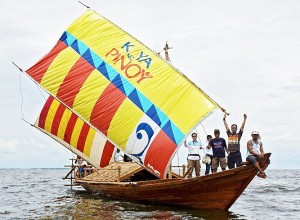
Thousands of years ago, the ancestors of the Filipino people, the Austronesian speaking people traveled from the Asian mainland by land bridges across the continental shelf to the South East Asian archipelago. They then sailed onward to as far East as Polynesia, and as far West as Madagascar, aboard the ancient vessel: the Balangay. The Kaya ng Pinoy Inc., launches an exciting, new undertaking that will retrace the migration of our ancestors across the oceans using only the native Balangay, built faithful to the craftsmanship and materials used during the ancient times. Navigation will also remain accurate to the method that was used by the earliest mariners - steering by the sun, the stars, the wind, cloud formations, wave patterns and bird migrations. What is the Balangay? Early Filipinos were a people of the sea, living in coastal villages or near rivers. Boats were linked to many aspects of Filipino life: fishing, trade, warfare, piracy (trade-raiding for goods and slaves), travel, communication, and dwelling. The Balanghai or Balangay or Butuan Boat is a plank boat adjoined by a carved-out plank edged through pins and dowels. It was first mentioned in the 16th Century in the Chronicles of Pigafetta, and is known as the oldest Pre-Hispanic watercraft found in the Philippines. The first wooden watercraft excavated in Southeast Asia, the Balangay is only found in the Philippines where a flotilla of such prehistoric wooden boat exists throughout the world. Nine specimens were discovered in 1976 in Butuan City, Agusan Del Norte, Mindanao and 3 of which have been excavated. Examination and extensive investigation reveals that the extant boats found in the excavation site date back to 320, 990 and 1250 AD. The finely built boat, made without the use of blueprints but was taught from one generation to another, uses a technique still used by boat makers of Sibutu Island. Made 15 meters long and 3 to 4 meters wide, the Balangay is propelled by sail of buri or nipa fiber or padding and is large enough to hold 60 to 90 people. With the Balangay's size, it was used for cargo and raiding purposes, giving proof that Butuan played a central role in trade. http://www.balangay-voyage.com/index.php … [Read more...]
Guro Arnold, Guro Bud and Guro Dino, along with members of the adult and youth class of the Kali Klub, performed a demonstration of the Warrior Arts of the Philippines at LA City Hall for this unprecendented and historic event. Monday, August 5th, 2002 City of Los Angeles dedicates Historic Filipinotown By Elson Trinidad The cathedral-like chambers of the Los Angeles City Council erupted in a chorus of "Mabuhay!"s on the morning of Friday, August 2nd as the city formally recognized the heart of its Filipino-American community, known as "Historic Filipinotown." Over 100 community leaders, city workers, war veterans, students and residents of Filipino descent - many dressed in bright, traditional barongs - gathered at City Hall in Downtown Los Angeles to witness the dedication of a designated Filipino community in the ever-diverse City of Angels, bordered by Hoover Street, the 101 Freeway, Glendale Boulevard and Beverly Boulevard, located just west of Downtown. Los Angeles city councilman Eric Garcetti, whose district includes Historic Filipinotown, briefly ran down the history of Filipinos in Southern California from the 1587 landing of Manilamen in Morro Bay to earlier incarnations of Filipino districts in L.A. since the turn of the 20th century. "We celebrate today the fact that Filipinos have a historic home, a heart for their community, a place where all Filipinos are welcome, and will continue to prosper and flourish," said Garcetti. Flanked by several members of the Filipino community, Garcetti unveiled an eight-foot long blue sign that bore the name of the newly-dedicated district, which prompted fellow councilman Tom LaBonge to quip, "This is the longest sign in the history of the city of Los Angeles!" The first sign will be installed on Thursday, August 8 at the intersection of Temple Street and Union Avenue during a 9 a.m. dedication ceremony. Garcettiís predecessor Jackie Goldberg, now a California state assemblywoman, vowed that she would use her influence to have signs placed on the 101 Freeway directing motorists to Historic Filipinotown. Garcettiís staff organized the year-long project to create a Filipinotown, which involved the cooperation of non-profit agencies such as Filipino-American Service Group, Inc. (FASGI), Search to Involve Pilipino Americans (SIPA) and local residents and businesses, both Filipino and non-Filipino. According to George Villanueva, a Filipino-American who works under Garcetti as a community organizer, one of the reasons for the formation of Historic Filipinotown was to help stimulate the development and vitality of Filipino-American businesses in the area. The dedication ceremony was not only a chance for civic officials to applaud the contributions of Filipinos to Los Angeles and America as a whole, but for the leaders of the cityís Filipino community to express pride for their newly-recognized district in front of L.A.ís top politicos. "A Filipina-Australian tourist visiting town once asked me where Temple Street was," said community leader Jocelyn Geaga-Rosenthal, "She said, ëYou know, where all the Filipinos are.í" Geaga-Rosenthal, a one-time candidate for the California state assembly, also noted that the occasion would have also been a proud moment for her late mother, Remedios Geaga, who herself was a community leader in L.A.ís Filipinotown. "I hope to one day see Filipino-Americans sit within those chairs," said Joe Abella, another community leader, who also co-founded SIPA, pointing to the dignified, horseshoe-shaped table where the members of the city council are seated. One such Filipino-American elected official in Southern California, Tony Cartagena, mayor of Walnut, said, "This is a very significant occasion, itís a special day for each and every Filipino and Filipino-American...we feel like we are part of [the city] now. A brief ceremony hosted by Ed Ramolete and Jing S.J. Vida soon followed in the city hall rotunda where Garcetti and Los Angeles mayor James Hahn addressed the crowd. "Filipinos are one of the strongest ethnic communities in Southern California," said the mayor, decked in a white barong Tagalog, "this is long overdue." The mayor also commended the valor and efforts of Filipino-American World War II veterans, which filled the dimly-lit tile halls with applause and cheers. After he spoke, several attendees used Hahnís presence as an opportunity to have their photo taken with the mayor. Garcetti added that disunity in the Filipino community was the primary reason why the road to a recognized Filipinotown district was long and hard. "This is the first step in creating unity. We have not arrived, we have only begun," said the councilman. An unprecedented display of unity was demonstrated at a town fiesta-like lunch reception outside in the city hall courtyard where nearly every local Filipino restaurant collectively donated food for the event. As members of the community munched on … [Read more...]
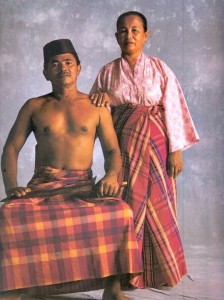
The Nikki Coseteng Filipiniana Series "Sinaunang Habi: Philippine Ancestral Weave" by Marian Pastor-Roces Photographs by Dick Baldovino and Wig Tysman Published by Anna Dominique "Nikki" Coseteng ABOUT THE BOOK "Sinaunang Habi's first edition was published in 1991, and reprinted in 2000. It has become a sought-after book in the international circuit of textile connoisseurs of indigenous traditions. This unique book gives us not only a rich collection of haberdashery imbued with artistry and beauty, but also a rich insight into the different ethnic groups in the Philippines. The extensive and informative essays provide a historical and anthropological background on the indigenous people inhabiting each region. The clothing silently but expressively speaks of a nation's unique cultures, customs, ceremonial life, rituals, and practical needs, lending beauty to handcrafted objects while continuing age-old traditions." … [Read more...]

Brisbane Stick fighting is a regular gathering of martial art practitioners interested in developing their stick fighting ability within a safe informal atmosphere. The current group is made up of a guys from different backgrounds each bringing their own different abilities and experiences into the sparing, with a variety of ages, nationalities and styles, the differences in fighting styles has proven to bring more out of us. We have previously discovered sparring with the same opponent over time can become predictable as each players learns instinctively the other players patterns of motions or tells. By bringing in new sparring partners we seek to avoid falling into the same old patterns, so that we can learn to flow or break the flow of our opponent, overcoming them no matter their size, strength or fighting ability. Visit the website @: http://www.brisbanestickfighting.com/index.html … [Read more...]
A finales de Junio 2011 Workshop con armas blancas con Guro Dino Flores - conocido como uno de los peleadores más técnicos y avanzados del grupo SOG de LAMECO y KALIS ILUSTRISIMO (Sulite Original Backyard Group) http://www.kali-jeetkunedo.com/6noticias.html Interested contact with Sifu Tim Fredianelli 615308348 Space must be reserved in advance for these courses, places are limited to ensure quality. Special rates and privileges for members only at our school … [Read more...]
Friday, July 1, 2011 at 7:00pm - July 2 at 6:00pm Lameco Arnis Club Königsberger Strasse 6, 1ter Stock Frankfurt am Main, Germany Mit Lameco Guro Dino Flores wird uns ein weiterer Lameco Sulite Orehenal Group Member in Frankfurt besuchen!! Zum ersten Mal in Deutschland wird Kali Ilustrisimo von einem langjährigen Schüler von Punong Guro Edgar G. Sulite und Master Christopher Ricketts vorgestellt. Punong Guro Edgar G. Sulite und Master Christopher Ricketts sind 2 der 5 Pfeiler des Kali Ilustrisimo (5 Pillars : Grandmaster Tony Diego, Master Yuli Romo, Master Christopher Ricketts, Master Rey Galang and the late Punong Guro Edgar Sulite) Eine Gelegenheit dieses einmalige klingenbasierte System in Deutschland zu lernen, die man sich nicht entgehen lassen sollte!!! Lameco - WORKSHOP DATUM: Freitag 01.07.2011 ZEIT: 19:00 bis 22:00 ORT: Lameco Arnis Club Frankfurt, Königsberger Strasse 6, 1ter Stock, 60487 Frankfurt/Main PREIS: 35€ Kali-Ilustrisimo -SEMINAR DATUM: 02.07.2011 ORT: Lameco Arnis Club Frankfurt, Königsberger Strasse 6, 1ter Stock, 60487 Frankfurt/Main ZEIT: 10:00 bis 13:00 & 14:00 bis 18:00 PREIS 65€ http://www.lameco-arnis.de/ … [Read more...]
Guro Dino Flores Ilustrisimo, Lameco Seminars May 14th and 15th Brisbane Australia Southside Arnis Escrima Club is honored to be hosting Guro Dino Flores Seminars in Brisbane, Australia. The seminar will be on the highly respected Filipino Martial Systems of Kalis Ilustrisimo and Lameco. Details as follows: 1st available session Friday the 14th of May at 6pm in the Martial Arts Hall of the Sports Centre at University of Queensland St.Lucia Brisbane. The building closes up at 9pm so plan to arrive at around 5:30pm so we get a full 3 hour session in. Saturday 15th May in the same building but a different room (Multi Purpose Room) starting at 10:30am going for 3 hours. The prebooked price will be $65 per person per day. At the door price it will be $70 per person per day. Please contact me via email on alan.mcfarlane.beae@hotmail.com or Mobile (In Australia) 0466 442 913 if you wish to attend or if you have any enquiries. Again please contact me via email on alan.mcfarlane.beae@hotmail.com or Mobile (In Australia) 0466 442 913 if you wish to attend or if you have any enquiries. Last edited by Alan McFarlane; 04-22-2010 at 12:07 AM. … [Read more...]
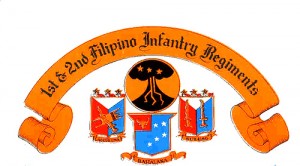
This article was brought to our attention by Guro Hospecio "Bud" Balani, Jr. As it turns out both his father, Hospecio Balbuena Balani, Sr., and his uncle, Martin D. Balbuena, were both members of the Regiment. He also had numerous uncles in the Regiment but to get their names, he'd have to dig deep into the darkest recesses of his mind, and it might get ugly in there. From what he understands, "The United States wanted to be at Regiment strength so they eventually merged the three Battalions into one unit and formed the 1st Filipino Regiment (keeping the First Unit's Patch). Regiments are two or more Battalions, Battalions are three or more Companies. Companies are three or more Platoons. Platoons are three or more Squads. Squads are nine strong. These are just rough estimates. Also, any unit with the spelling of "Philippines" were US Army units that were recruited in the homeland. There were many Philippine Scout units, all in the Philippine islands. Any unit with the spelling of "Filipino", was a unit formed in the United States, with the only units being Laging Una, Sulong and Bahala Na." Saturday, August 14th, 2004 The 1st and 2nd Filipino Infantry Regiments By David T. Vivit, 1LT, AUS (Ret) Laging Una - Sulung The 1st & 2nd (Laging Una - Sulung) Filipino Infantry Regiments were units of the Army of the United States (AUS) inducted into service during World War II. They were wholly manned by Filipino citizens in this country and Hawaii and officered by both Filipinos and Americans, the only non citizen units in the American Citizen Army. They were similar to the Philippine Scouts in that the latter were also wholly manned by Filipino citizens with both Filipino and American officers, but the similarities ended there. The Scouts were professional soldiers in the Philippine Department of the United States Regular Army (USA). Most of the men were married and enjoyed a high economic and social status in the Philippines in contrast to the mostly single discriminated against (in the U.S.) "laborers" and students of the Filipino Regiments. Each group of Filipino soldiers played important but different roles in World War II. After the Japanese sneak attack on Pearl Harbor and Clark Field, Filipinos in the U.S. and Hawaii rushed to Army Recruiting Stations to enlist only to be rejected because they were not (US) citizens (Filipinos were not eligible for U.S. citizenship before the war). As residents, however, they were registered under the Draft Law, and when the first Filipino Battalion was activated in San Luis Obispo, California in April 1942, they "volunteered" for the draft instead of waiting for their call. This unique unit was to spearhead MacArthur's liberation forces when he returned to the Philippines. But the military authorities made a great miscalculation! In three months the 1st Filipino Battalion became the 1st Filipino Regiment, activated in Salinas on July 13, 1942 and on October 14th of the same year the 2nd Regiment was activated at Ft. Ord, bringing together a fighting force of more than 7,000 men. If created earlier, the Battalion very well could have become a Division. By the time it was activated hundreds had already joined the Navy and Army Air Corps. With an average age of over 30, they more than made up this overage by their spirit and enthusiasm. In no other units of the AUS in WWII, including the much publicized 442nd Regimental Combat Team (NISEI), was the motivation greater and the morale higher than in the 1st & 2nd Filipino Regiments. About the end of 1942 and in early 1943, these Filipino soldiers became American citizens under a new U.S Naturalization Law in mass oath taking ceremonies which made headlines throughout the country. After two years of intensive training in California without a single Court Martial case, these units went to New Guinea to prepare for their landings in the Philippines. Here the 2nd Regiment was split up into the Counter-Intelligence Units (CIC), the Alamo Scouts and the Philippine Civil Affairs Unit (PCAU) all of which played important roles during the liberation. The 1st Regiment remained intact as a combat team but for some unknown reason was not with the initial landing forces in Leyte. Instead it was relegated to the minor (but more dangerous against a fanatical enemy) role of mopping-up operations in Samar and Leyte. In accomplishing this difficult mission with minimum casualties, it earned the reputation of being the "most decorated regiment in the Pacific". It remained for a "child" of the regiments, 1st Reconnaissance Battalion (Bahala Na) known only as "commandos" in the Philippines, whose operations during the occupation had been kept secret until recently, to really "spearhead MacArthur's return to the Islands." But this is a story in itself. More significant than their military feats was their accomplishments in the field of romance. These gallant soldiers literally chased the shy, coy and above … [Read more...]
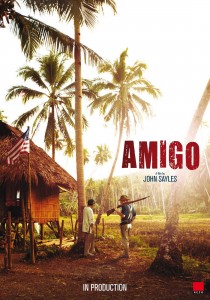
Movie: Amigo (2010) Amigo is a 2010 American drama film written and directed by John Sayles. The film takes place in the Philippines in 1900 during the Philippine–American War. It is one of only a small handful of films directed by an American to address the war. Plot Amigo centers on Rafael Dacanay, cabeza of the barrio of San Isidro in a rice-growing area of Luzon. His brother Simón, head of the local guerilla band, has forced the surrender of the Spanish guardia civil outpost and charged Rafael with the task of imprisoning the guardia Captain and the barrio’s Spanish friar, Padre Hidalgo, in the name of the revolutionary government. But when the American troops chasing General Aguinaldo arrive, the Spanish officer and Padre Hidalgo are freed, and a garrison under the command of Lieutenant Ike Compton is left to ‘protect’ the barrio. The American occupation policy now changes from ‘hearts and minds’ to ‘concentration’ (what was called ‘hamletting’ during the Vietnam war) and Rafael has to answer to both the Americans and the Filipino patriots, with deadly consequences. Cast • Chris Cooper as Col. Hardacre • Garret Dillahunt as Lt. Compton • DJ Qualls as Zeke • Yul Vàzquez as Padre Hidalgo • Joel Torre as Rafael • Lucas Neff as Shanker • James Parks as Sgt. Runnels • Dane DeHaan as Gill • Stephen Taylor as Pvt. Bates • Rio Locsin as Corazon • Jemi Paretas as Zuniga • Bill Tangradi as Dutch • Bembol Roco as Policarpio • Ronnie Lazaro as Simon • Irma Adlawan as Josefa Press Cinematical reports that the film was once titled Baryo, and that the idea for it came from a yet-to-be-published novel Some Time in the Sun, detailing U.S. imperialism in the Philippines. The book will actually be called A Moment in the Sun, though the unrealized screenplay which inspired it was called Some Time in the Sun. Distribution Amigo will show on September 14 at the 2010 Toronto International Film Festival. It will also screen at the San Sebastián International Film Festival and the Rio de Janeiro International Film Festival. In North America, the film will be released on August 20, 2011 by Variance Films. From Wikipedia … [Read more...]
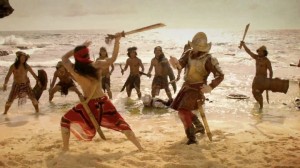
Guro Dino of the Mandirigma Research Organization met Professor Angel Postigo and his father on one of his many business trips to Los Angeles from Mexico. Professor Postigo is a person with a very impressive resume in the warrior arts and journalism, among other things, having written for Artes Marciales, Katana, Kung Fu Magazine, Legitima Defensa and National Sports Directory of Mexico. They found that they both have a passion for history and its relationship to the warrior arts. Some of the discussions they had concerned the connections between the Philippines and Mexico for hundreds of years. Professor Postigo felt that mandirigma.org would be an excellent venue to present his articles of this often overlooked relationship between the Philippines and Mexico in history. Quoting Professor Postigo, "The reason why I am interested in working with "mandirigma.org" is to showcase my work as a writer interested in disseminating and spreading the culture of the Martial Arts of the Philippines, work that I have done in several Mexican magazines." Friday, October 12th, 2007 The Two Conquests By Angel Postigo Suddenly, the ascent they had begun at the beach, finally ended. Thousands of miles behind, their guides had led them to cross between those two volcanoes, the Popocatepetl and the Iztacihuatl. Standing in the snow, those iron men and their heraldic horses had that spectacle at their feet: beyond this wooded spot of splendid beauty, far beyond, into those mountains, a wide green valley was extended, and in the center the lakes shined like silver, and above the islands and the banks, those citadels with plazas and wide roads, the high roofs of its temples upon splendid hand-painted pyramids, and the woods and great fields full of exotic plants that enlightened those magic days of autumn. For the first time, western men looked at that wonderful landscape, as if painted on the evening air, and their eyes glowed as they contemplated the plain and remembered the gold and sacred feathered presents they had been offered as a plead to retire, to stay away. Cortes and his soldiers had started the advance to that plain, to Tenochtitlan, and the battles were about to begin. The great lord of the empire, Moctezuma II, intelligent and educated man, though deeply superstitious as most of his people, knew that his kingdom had come to its end. The news had spread as a desperate scream: Quetzalcoatl has returned, the Serpent God that promised to return in the year one, Acatl (1519), the prophecies are fulfilled now, the white-skinned bearded God has returned. Moctezuma knows a battle against a God is impossible, he has to have the help of other gods in order to save his nation. Being Cortes an extremely skillful politician and warrior, he perceives the rivalries between the different towns, and above all, the exacerbated hate against the Mexicas and their Aztec empire. Cortes returned to Tenochtitlan, not before suffering a defeat known as the Sad Night, when fallen and surrounded he was spared as many soldiers thanks to the tradition of not killing the enemy, just defeating them to take some prisoners for the ritual sacrifices. According to the number of prisoners, those warriors, Eagle men and Jaguar men, ascended in their military ranges. They were true conquerors who went further their frontiers of Guatemala, but their conquest had seeded rancor against the Aztec empire. Their armies were the best armed and trained. They had a regular troop, Yaoquizquel, and a lower but considerable number of noble warriors, Pipiltin, who belonged to a society known as the Eagle men, Quauhtin, and Jaguar men, Ocelomeh. Their elegant clothing had the skins of those felines and the feathers of those sacred birds. They were the sons of nobles who went to the Calmecac to receive military and cultural education, they learned astronomy, rhetoric, poetry, but above all, religion, and their status was well established, and how they could ascent according to their bravery, but above all, to the number of prisoners caught in battle. The Tlamani were the ones in charged of guarding the prisoners. This noble warriors, elegantly dressed, had as their main weapons the Macuahuitl, a kind of long club with sharp obsidian points, a round shield made of leather named Chimalli, an arc known as Tlauitolli, and a throwing spear, Atlatl. As he walks through many different spots of this empire, Cortes realizes the situation. In some places he has battles, but in others he comes to agreements easily, accomplishing an alliance in the first year of his arrival, and after establishing the Villa Rica de la Vera Cruz. One of the alliances was with the Zapoteca people, and afterwards, with others oppressed by the Aztec empire, the Texcocanos, the Huejotzincas and the Totonacas. Cortes starts his first march towards Mexico, Tenochtitlan, on August 16th, 1519, towards the heart of the empire. He has only 400 Spanish soldiers, 15 horses, 3 canons, … [Read more...]
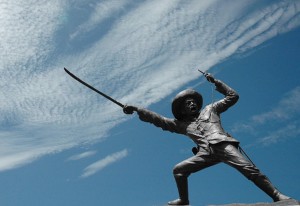
This post is password protected. To view it please enter your password below: Password: … [Read more...]
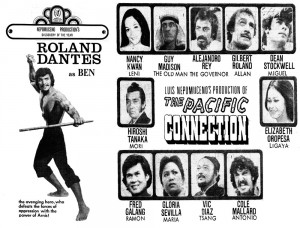
Roland Dantes plays an avenging hero, who defeats the forces of oppression with the power of Arnis! Roland Dantes plays Ben, a farm boy who comes into conflict with the Evil Spanish Governor and his two sons. One of the sons is played by a young Dean Stockwell. To assist in their oppression the Governor hires a Samurai played by Hiroshi Tanaka to teach his son the Japanese Katana sword. To counter this, Ben studies under a blind Franciscan monk to obtain some advanced fighting secrets and develop his warrior senses. Additionally Ben must search for the legendary "Iron Reed". A mystical stick so strong that grows in the lava of an active Volcano. One of the first full length movies featuring the Philippine Warrior Arts. A must see for any Filipino Martial Arts practitioner. Made in a similar spirit of the "Kung Fu" movies coming out of Hong Kong at the same time in the 1970's. The fight scenes were choreographed by Professor Remy Presas himself and is jam packed with Arnis inspired fight scenes. Dean Stockwell learned Arnis for his role and continued his Arnis practice long after the filming was over. The success of this movie led to a follow up film "Arnis: Sticks of Death" in 1984 also starring Roland Dantes. Director: Luis Nepomuceno Country: Philippines Language: English Release Date: 1974 (Philippines) Stars: Roland Dantes, Dean Stockwell, Hiroshi Tanaka, Nancy Kwan, Guy Madison, Alejandro Rey, Gilbert Roland, Elizabeth Oropesa, Fred Galang, Gloria Sevilla, Vic Diaz, Cole Mallard … [Read more...]
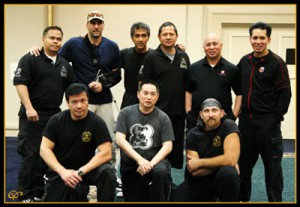
Los Angeles – Historic Filipinotown Chapter of Lameco SOG By Mandirigma.org Lameco SOG members including: Joel Adriatico, Roger Agbulos, Jason Ancheta, Hospecio "Bud" Balani Jr., Ron Balicki, Rem V. Cruz, Marc F. Denny, Mar Elepaño, Bryant Emerson, Choy Flores, Dino Flores, Dave Gould, Steven Grody, Elmer R. Hebia, Sung Han Kim, Eric Dupois Koh, Arnold A. Noche, Lowell Pueblos, Gary Quan, Phillip Rapagna, Pantaleon "Mang Leo" Revilles, Jr. (RIP), Hans Anton Tan, Steve Tarani, Pelix Velenciar and Rodney Wilson. The group occasionally gets together to train or collaborate. Many are busy with heading their own organizations. A good number of the Lameco SOG members have continued to train together regularly since their teacher's death in 1997. Besides continued training in the Lameco Backyard Method, the group also continued study in the Lameco primary root fighting systems of Ilustrisimo and De Campo Uno-Dos-Tres Orihinal. This group is sometimes reffered to as The Los Angeles – Historic Filipinotown Chapter of Lameco SOG. This includes Guros Joel Adriatico, Hospecio "Bud" Balani Jr., Mar Elepaño, Choy Flores, Dino Flores, Arnold Noche, Gary Quan, Hans Anton Tan and Pantaleon “Mang Leo” Revilles, Jr. (RIP). It is also this group that came up with the term “SOG” or Sulite Orehenal Group with the guidance and approval of the two highest-ranking Lameco Eskrima International members, Master Christopher N. Ricketts and Master Reynaldo S. Galang. A few of these members to teach the public, however most prefer to keep their knowledge a private matter. When Christopher N. Ricketts moved to California backyard members Hospecio "Bud" Balani Jr., Mar Elepaño, Bryant Emerson, Ron Baliki, Choy Flores, Dino Flores and Arnold Noche trained under Master Rickets in Ilustrisimo and recognized him as the highest ranking Lameco Eskrima Member. With the tragic passing of Master Ricketts, the highest ranking Lameco Eskrima Member is currently Master Rey Galang Above is the largest Filipino-American mural in the U.S.A. located in Historic Filipinotown, Los Angeles. Painted by Eliseo Art Silva. The mural measures 145 feet x 25 feet. The mural was created in commemoration of the Centennial of the Philippine Revolution against Spain … [Read more...]
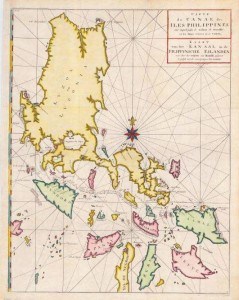
Who Discovered the Philippines? PerryScope Perry Diaz, Global Balita Philippine history books have been saying that Ferdinand Magellan discovered the Philippines. But was he really the one who discovered the Philippines? Long before Magellan landed in the Philippine archipelago, visitors and colonizers from other lands had come to our shores. The earliest evidence of the existence of modern man — homo sapiens sapiens — in the archipelago was discovered in 1962 when a National Museum team led by Dr. Robert Fox uncovered the remains of a 22,000-year old man in the Tabon Caves of Palawan. The team determined that the Tabon Caves were about 500,000 years old and had been inhabited for about 50,000 years. In the late 1990s, Jared Diamond, Professor of Geography at UCLA and winner of the Phi Beta Kappa Award in Science, and Peter Bellwood, Professor of Archaeology at the Australian National University, postulated that the Austronesians had their roots in Southern China. Diamond said that they migrated to Taiwan around 3,500 B.C. However, Bellwood believed that the Austronesian expansion started as early as 6,000 B.C. Around 3,000 B.C., the Malayo-Polynesians — a subfamily of the Austronesians — began their migration out of Taiwan. The first stop was northern Luzon. Over a span of 2,000 years, the Malayo-Polynesian expansion spread southward to the rest of the Philippine archipelago and crossed the ocean to Celebes, Borneo, Timor, Java, Sumatra, Malay Peninsula, and Vietnam; westward in the Indian Ocean to Madagascar; and eastward in the Pacific Ocean to New Guinea, New Zealand, Samoa, Fiji, Marquesas, Cook, Pitcairn, Easter, and Hawaii. Today, the Malayo-Polynesian speaking people have populated a vast area that covers a distance of about 11,000 miles from Madagascar to Hawaii, almost half the circumference of the world. In 2002, Bellwood and Dr. Eusebio Dizon of the Archaeology Division of the National Museum of the Philippines led a team that conducted an archaeological excavation in the Batanes Islands, which lie between Taiwan and Northern Luzon. The three-year archaeological project, financed by National Geographic, was done to prove — or disprove — the “Out of Taiwan” hypothesis for the Austronesian dispersal. The archaeological evidence that they gathered proved that the migration from Taiwan to Batanes and Luzon started about 4,000 years ago. For the next 500 years after the arrival of the Malayo-Polynesians in Batanes and Northern Luzon, native settlements flourished throughout the archipelago. The Philippine islands’ proximity to the Malay Archipelago, which includes the coveted Moluccas islands — known as the “Spice Islands” — had attracted Arab traders who had virtual monopoly of the Spice Trade until 1511. By the 9th century, Muslim traders from Malacca, Borneo, and Sumatra started coming to Sulu and Mindanao. In 1210 AD, Islam was introduced in Sulu. An Arab known as Tuan Mashaika founded the first Muslim community in Sulu. In 1450 AD, Shari’ful Hashem Syed Abu Bakr, a Jahore-born Arab, arrived in Sulu from Malacca. He married the daughter of the local chieftain and established the Sultanate of Sulu. In the early 16th century, Sharif Muhammad Kabungsuan, a Muslim preacher from Malacca arrived in Malabang in what is now Lanao del Sur and introduced Islam to the natives. In 1515 he married a local princess and founded the Sultanate of Maguindanao with Cotabato as its capital. By the end of the 18th century, more than 30 sultanates were established and flourished in Mindanao. The Sultanates of Maguindanao and Sulu were the most powerful in the region. Neither of them capitulated to Spanish dominion. Chinese traders — who were also involved in the Spice Trade — started coming to the Philippine archipelago in the 11th century. They went as far as Butuan and Sulu. However, most of their trade activities were in Luzon. In 1405, during the reign of the Ming Dynasty in China, Emperor Yung Lo claimed the island of Luzon and placed it under his empire. The Chinese called the island “Lusong” from the Chinese characters Lui Sung. The biggest settlement of Chinese was in Lingayen in Pangasinan. Lingayen also became the seat of the Chinese colonial government in Luzon. When Yung Lo died in 1424, the new Emperor Hongxi, Yung Lo’s son, lost interest in the colony and the colonial government was dissolved. However, the Chinese settlers in Lingayen — known as “sangleys” — remained and prospered. Our national hero Dr. Jose P. Rizal descended from the sangleys. The lucrative Spice Trade attracted the European powers. In 1511 a Portuguese armada led by Alfonso d’Albuquerque attacked Malacca and deposed the sultanate. Malacca’s strategic location made it the hub of the Spice Trade; and whoever controlled Malacca controlled the Spice Trade. At that time, Malacca had a population of 50,000 and 84 languages were spoken. It is interesting to note that in 1515, … [Read more...]
Grandmaster Christopher N. Ricketts (March 21, 1955 - October 5, 2010) 10/11/2010 October 11, 2010 Grandmaster Christopher N. Ricketts (March 21, 1955 - October 5, 2010) It is with sadness and joy that we announce the passing and rebirth to eternal life of Grandmaster Christopher N. Ricketts on October 5, 2010 at 3:02AM. May his soul and the souls of the faithful departed rest in peace. Amen. A loving husband, father, grandfather, son, brother and uncle, he is survived by his wife Beth Ricketts and sons Jason Ricketts, Bruce Ricketts, Brandon Ricketts and Christopher Ricketts, Jr.; daughter-in-law Jeanne, wife of Jason and grandkids Jacob, Jennell, Josh and Justin; parents Edith and Max Ricketts; younger brother and sister-in-law, Alex Ricketts and Maribeth and nephews Jamie and James; and youngest brother and sister-in-law, Ronnie Ricketts and Mariz and nieces Marella and Marie. Master Topher, known world wide as a consumate martial artist of Filipino decent, was loved by many but more importantly, respected by all. He was one of the founders and the Chief Instructor of Bakbakan International, a fraternal brotherhood of martial artists established in the Philippines in 1968 whose motto is “Matira Matibay” (The Best of the Best). Concerned with training and passing on his knowledge to students rather than collecting accolades and titles, Master Topher’s skills and credentials are impeccable and second to none. A senior disciple of the revered Grandmaster Antonio “Tatang” Ilustrisimo and one of the “Five Pillars of Kali Ilustrisimo”, he remained loyal to the memory and legacy of his teacher and was the highest ranked Ilustrisimo instructor in the United States. A close friend and training partner of the late Punong Guro Edgar G. Sulite who founded Lameco Eskrima, he was also the highest ranked Lameco instructor in the United States. With teaching credentials in several martial arts systems including Ngo Cho Kun (5 Ancestor Fist), Sagasa (Filipino Kickboxing System), as well as being a professional boxing trainer and fight choreographer, his was a life befitting a true warrior. A public viewing, requiem mass and farewell offering (Halad) will be held on Thursday, October 14, 2010 from 4:00PM to 8:00PM at the California Cremation and Burial Chapel, 5880 El Cajon Blvd, San Diego, California 92115. In lieu of flowers, donation to your favorite charity in the name of Grandmaster Christopher N. Ricketts will be greatly appreciated. All members of the warrior class are encouraged to come in uniform to pay their last respects to one of the best of the best. Sumasaiyo at Maraming Salamat (With Sincere Thanks), The Ricketts Family … [Read more...]
FMA DELEGATES GRACE CBF2008 Wednesday, March 12th, 2008 FMA DELEGATES GRACE CBF2008 (LOS ANGELES – March 12, 2008) Now entering its 7th year, the Martial Arts Arena at the Cherry Blossom Festival - Southern California continues to draw a steady crowd. Taking place on April 5th and 6th in the Little Tokyo district of downtown Los Angeles, this event is FREE and is produced by a 100% volunteer team and underwritten by private donations and sponsors. Volunteers Gary Endo, Arnold A. Noche and Gary Quan have been handling their business in the "arena" since the inception of the festival at the Pasadena Convention Center back in 2002. "My involvement with this festival was an honest attempt to introduce the Warrior Arts of the Philippines to yet another audience," said Noche, a guro from Lameco SOG. "We've been blessed to have so many FMA groups come through in the past (Doce Pares, Lameco Eskrima, Modern Arnis, Pakamut, San Miguel Eskrima) but this year, we're taking it up a notch with all the mainstream exposure that we've been getting." Perhaps a "notch" is an understatement as this year's FMA portion of the festival will feature delegates from the following disciplines of the Filipino Martial Arts. In alphabetical order: Master Rick Mitchell (Balintawak Eskrima - www.worldbalintawak.com) Master Christopher Ricketts (Kali Ilustrisimo - www.ilustrisimousa.com) Master Felix Roiles (Pakamut - www.pakamut.com) Master Jose Tan (Modified Tapado - www.modifiedmartialarts.com) Guro Arturo "Dino" Flores (Lameco SOG) Guro Pedro "Pete" Israel (Harbor Kickboxing / PI Kali) Guro Willie B. Laureano (Inosanto-Laureano Pag-Kali Kali) The Martial Arts Arena will feature non-stop action from open to close. The FMA portion of the festival will take place on Sunday, April 6th at 1:00pm. Other martial arts groups scheduled to perform are as follows: Aikido Institute of America Atemi Ryu Jujitsu California Sumo Association Capoiera Batuque Center for Practical Self Defense Goltz Judo Club Grappling / MMA - Villa Park Harmony Aikido IMB Academy Jinenkan Kage No Michi Ninjutsu Krav Maga Monterey Park Karate Club Monterey Park Wu Shu New Breed - Brazilian Jiu-Jitsu Northern Shoalim Ohana Academy of Martial Arts Paramount Karate Shindo Muso Ryu Shinkendo Sityodtong/Muay Thai South Bay Self Defense Westside Kendo Tell a friend. http://www.cherryblossomfestivalsocal.org … [Read more...]
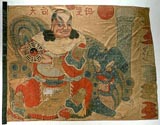
Limahong Limahong, Lim Hong or also called Lin Feng (simplified Chinese: 林风; traditional Chinese: 林風; pinyin: Lín Fēng; Pe̍h-ōe-jī: Lîm-Hong) was a notorious Chinese pirate and warlord who invaded the northern Philippine Islands in 1574. He built up a reputation for his constant raids to ports in Guangdong, Fujian and southern China. He is noted to have twice attempted, and failed, to overthrow the Spanish city of Manila in 1574. Birth and origins Born Dim Mhon to a parents with questionable morals in the city of Tru Cheo (Teochew) in the province of Cuy Tan (called Catim by the Portuguese during the middle of the 16th century). Known to be called Limahong. Exposed to vices, he resorted to criminal activities, including robbery, at an early age. He met and became a protege of an old pirate, Tial-lao. When Tial-lao died, Lim became his heir, inheriting the old pirate's fleet and around 2,000 pirates. His activities and attacks on ports and ships throughout southern China increased and a warrant was issued by the authorities to capture him alive and send him to the city of Tay Bin. He was married to Nataracy. He shifted his activities to piracy on the high seas and out of reach of China's power. He was able to accumulate up to 40 ships, whereupon he once again raided cities and ports in southern China. Limahong attacked a city occupied by Vinh To Quiam, another pirate, but Vinh was able to escape along with 5 of Limahong's ships. However, Limahong was able to capture 55 of Vinh's fleet and thus increased his own to 95 ships. He was now a veritable king of the high seas of southern China. In late 1573, he gathered an army of 3,000 Chinese warriors, renegades and vagabonds and fled to the island of Luzon. There, he and his band of outlaws sought refuge, established their own kingdom and waged war with the Spaniards. By this time, a force of 40,000 soldiers and 135 ships was sent by the Chinese to kill and capture Limahong. Limahong and his troops first arrived in Ilocos Sur in early 1574 where they quarrelled with the Spanish commander, Juan de Salcedo. After a brief struggle with the Spanish army, his troops were driven away from the city. The pirates then chanced upon merchant ships from Manila doing trade with the Chinese, and learned from 2 captured ships that Manila was a new and relatively unprotected Spanish settlement. From this information and the knowledge that China had a no-war policy with its neighbors during that time, he decided to capture Manila and establish himself as ruler of his would-be kingdom and stronghold. Limahong In Parañaque (Don Galo) It was November 29, 1574. The inhabitants of the town of Parañaque, a royal encomienda, was under heavy attack from the forces of the notorious Chinese pirate, Limahong, who were on their way to Intramuros, the seat of Spanish rule in the Philippines. Folk accounts have it that the inhabitants were at first disorganized, until a man from a barrio, by the name of Galo, came forward and took command. Under his able leadership, and with the arrival of Spanish forces led by Captain Juan de Salcedo from Ilocos, Limahong was repulsed and the occupation of the town was prevented. The stiff resistance of the barrio residents shocked the Chinese pirate, who thought that capturing Manila would be easy. What Limahong did not expect was that the defenders of the community, that would later be known as Dongalo, dispite being ill-equipped, would fight to the end, so much so that the sea in front of the barrio turned red with their blood. The battle became known as the "Red Sea Incident" The Paraqueños not only saved their town, but they contributed decisively to Limahong's abandoning his plans to conquer the area. In appreciation for Galo's leadership and heroic deeds, the Spanish authorities granted him the title of "Don". The barrio later on was named after him. Thus, Don Galo or Dongalo. Limahong In Pangasinan Foiled at Manila to establish a kingdom of his own, Limahong set sail for the Lingayen Gulf, to settle in Pangasinan province. As a rich place and far enough from the reach of the Spaniards and the Chinese emperor, Limahong resolved to stay here and to make himself master of the region. Near the mouth of the Agno River about four miles from the sea he built a fort consisting of an outer palisade of palm logs, and an inner enclosure of palm planks which sheltered his palace. He also built pagodas and dwelling places preparatory for permanent settlement. Limahong announced to the people that he had conquered the Spaniards and that he had come to rule over them as their king. They were commanded to pay tributes to him. Thereupon, great terror and fright filled all the neighboring villages, and all of them, with no exception, received Limahong as king, and they obeyed him and paid him tributes. To make matters worse for the natives, he seized their principal chiefs and held them as hostages. The Spaniards could … [Read more...]
Pinoy Martial Arts on Kababayan LA As if we weren't busy enough, Guro Dino took a short break to speak with Jannelle So, host of Kababayan LA on LA 18 KSCI-TV about the Warrior Arts of the Philippines. Guro Arnold was in town briefly from Washington, DC but was heads down getting ready for the 16th Annual Festival of Philippine Arts and Culture (FPAC). Friday, September 7th, 2007 Pinoy Martial Arts on Kababayan LA "Kababayan LA," is the first and only locally produced daily show here in LA that will talk about the Filipinos – the issues that concern them, the stories that affect them. Hosted by the popular TV personality and writer Jannelle So, "Kababayan LA" features a lively mix of news, information and entertainment designed exclusively for the Southern California's large and diverse Filipino community. Each day, Jannelle talks to the most interesting and exciting personalities making news around the Filipino community. A pioneer in this industry, "Kababayan LA" is the only daily program of its kind on the air in the United States that focuses exclusively on the Filipino American community. It is featured in LA's leading Asian language television station, LA 18 KSCI-TV. "Kababayan LA," which premiered last April 24, Monday, on LA 18 and airs during the weekdays at 4:45pm following the Filipino news program, TV Patrol. You can watch Kababayan LA weekdays for the latest local and Filipino news as well as the hottest entertainment, gossip and music. You can also see them online at http://www.la18.tv. http://www.filamarts.org http://www.la18.tv http://www.la18.tv/Video.aspx?vid=af28f5e2-0d64-4ac6-a143-a8474294fb84 http://www.la18.tv/Video.aspx?vid=d3473fce-850d-4ecd-bed7-099eb41bfadb … [Read more...]
Filipino Opera “Karim at Jasmin” to Stage in Southern California Karim at Jasmin is a groundbreaking first ever in history Filipino opera with Stage Director Jet Montelibano and Set Director Gerry Bautista, big supporters of our movement whom Guro Arnold and Guro Dino have worked with on countless occasions over the past five years filming commercials and concerts. Guro Dino was initially called to just work with the cameras, props, etc., but it evolved into being the fight coordinator for the production using authentic Filipino Martial Arts and then finally, assisted by Mark Rodriguez - one of our students from the Kali Klub, to act in the key battle where Guro Dino not only gets to kill one of the major bad guys but also Karim himself. All with just one days practice. Congrats to Jet on receiving his latest award. Friday, May 25th, 2007 Filipino Opera "Karim at Jasmin" to Stage in Southern California MRG Services, Incorporated, in cooperation with the Philippine Department of Tourism is bringing "Karim at Jasmin" to Long Beach California. This original Filipino opera is a timeless story of love and intrigue and of duty and passion. It is the first and only original Filipino musical opera, written and conceptualized by Dr. Ramon Sison-Geluz, who for the past 20 years has been writing, editing, revising and polishing each scene of the opera, composing the songs and writing the lyrics as well as creating and designing the costumes for the characters. Originally staged at the Cultural Center of the Philippines on 4 November 2006, "Karim and Jasmin" will debut in the United States on Saturday, 23 June 2007 at the Long Beach Convention Center Terrace Theater with a matinee at 2:00 pm and gala premiere at 8:00 pm. The cultural extravaganza will place the Filipino opera in the mainstream entertainment scene alongside classical productions such as "Madam Butterfly" and the like. World class talents breathing life to "Karim at Jasmin" are renowned performers Anthony "Gelo" Francisco, Maria Cristina "Kit" Navarro, Bones Deoso, Luningning Buan-Manahan, Everlita Rivera-David and a host of other talented actors. Award-winning director Jet Montelibano directs. Below is the synopsis. A Juramentado (amok) disrupts the wedding of Prince Karim to Rajita in an attempt to assassinate the neighboring Heneral who is a guest at the celebration. The King, Karim's father, perishes in the struggle and festivity quickly turns into mourning. The Heneral retaliates by poisoning the lake waters that sustain the villages. The villagers, including Karim fall sick. They seek the healing powers of the Ina ng Lawa (Mother Spirit) and the Diwatas (water spirits). Prince Karim, a mortal, falls in love and later marries Jasmin, the water spirit assigned to care him. The jilted Rajita connives with the Heneral in a bid to slay Jasmin and claim Karim for herself. The Ina ng Lawa reveals to the Heneral their past relationship and his cruelty to her people but was not able to convince the Heneral to abort his plan. Without remorse for his past evil acts, he attacks Karim's kingdom. It is only during the battle, where he learns that Jasmin, whom he planned to kill for his deal with Rajita is actually his own daughter, after the Ina ng Lawa reveals the truth to him. As the Heneral sought to ask forgiveness from Jasmin, Karim, thinking that his wife was in danger, engages the Heneral into a fight where they mortally wound each other. As the smoke of war clears, the Heneral and Karim lay dying. Over their bodies, Jasmin vows to pursue peace for the future of the baby she is carrying in her womb. Tickets to the opera are available at Ticketmaster at $50 and $65. For more information, visit the opera website at www.karimatjasmin.com. … [Read more...]
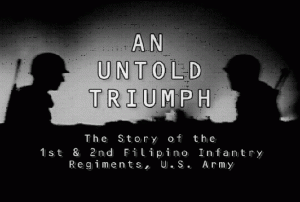
AN UNTOLD TRIUMPH AN UNTOLD TRIUMPH SELECTED FOR NATIONAL PRIMETIME BROADCAST ON PBS HONOLULU/WASHINGTON D.C. - The filmmakers of the award-winning documentary, AN UNTOLD TRIUMPH, which tells the story of the U.S. Army's 1st and 2nd Filipino Infantry Regiments, have just received word that PBS has accepted the film for its national primetime schedule. PBS has scheduled the documentary to air on Memorial Day, May 30, 2005 at 10:00 PM following a repeat broadcast of the American Experience program "Bataan Rescue." AN UNTOLD TRIUMPH includes a retelling of the Bataan Death March from the Filipino soldier's perspective. Major funding for AN UNTOLD TRIUMPH was provided by the National Asian American Telecommunications Association (NAATA). NAATA is funded by the Corporation for Public Broadcasting and presents stories that convey the richness and diversity of the Asian Pacific American experience. Getting on the national schedule in prime time is almost next to impossible, according to the film's director Noel Izon of Washington D.C. "Unless you have a great series, or your last name happens to be Burns or your program was produced by one of the major PBS stations, getting an independent documentary without those types of credentials into the system is truly a miracle. And I think that's what happened. "We have a lot of guys pulling for us up there. People are looking out for us. God is looking out for us. We have much to be thankful for and we give thanks!" said Izon, whose production credits with PBS go back more than 30 years. The film was co-written by Izon and Hawaii filmmaker Stephanie J. Castillo. Castillo also served as an associate producer on the project along with associate writer/humanities scholar Linda Revilla of Sacramento, California and project director Domingo Los Banos of Pearl City. Veteran Simeon Amor of Honolulu was the project's regiment historian. The film's director of photography was Academy Award-winning cinematographer Chris Li of Washington D.C. It will be presented on PBS by NAATA. AN UNTOLD TRIUMPH illuminates the most important period in the history of Filipinos in America when more than 7,000 immigrants and sons of immigrants rallied and joined the fight for freedom after the attack on Pearl Harbor and the immediate invasion of the Philippines by Japanese military forces. Most were trained as infantry troops in California; a select group was handpicked and given specialized training in Australia for reconnaissance and espionage. Together, they were General MacArthur's "secret weapon", an indispensable asset of Filipino soldiers and commandos to help him make good on his promise to return to the Philippines and rid it of the Japanese occupiers. For Los Banos, who was the project's chief fundraiser, this is a dream come true. He and the team struggled for eight years to get this film made. Los Banos was part of the 1st Regiment and part of a cadre of 50 "Hawaii boys" who helped do the dirty work of "mopping up" the Japanese soldiers holding out in the mountains of Samar and Leyte. "We are delighted with this news, because we wanted to produce a product worthy of public television. We are deeply grateful for the many organizations, institutions and individuals who through the eight years supported us with their donations, making it possible to complete this documentary," said Los Banos. Most of the $500,000 raised to make the film came from Hawaii. "And I would like to pay special tribute to the production team for their excellent efforts. This is a fitting tribute to each of the members of the 1st and 2nd regiments and their families, especially to those men who made the supreme sacrifice in the Philippine campaign," he said. Finishing the film also honors the memory of director Izon's father who on his deathbed made his son promise to finish the film. Esmeraldo Izon was a member of the Philippine guerillas officially recognized by the U.S. armed forces and served as a member of the Philippine underground press during the war. The film is narrated by actor Lou Diamond Phillips. Being half Filipino, Phillips saw this film as his story as well and has expressed his willingness to support the film's broadcast premiere. "It took a team of committed Filipino American filmmakers to care enough to persevere and finish this film," says Castillo. "With it, we hope that all Americans will feel a pride in our Filipino American soldiers who are indeed among what has been called 'the greatest generation'." PBS will broadcast a one-hour version of the film. The Director's cut along with an extended DVD version will be available later in the year. Castillo will join Izon in planning for the PBS broadcast. "On one evening in late May, AN UNTOLD TRIUMPH will enter the living rooms of America and present the heroism and sacrifices of the 1st and 2nd Filipino Infantry Regiments. What a great day that will be!" says Izon. "Now, our next job will be to … [Read more...]
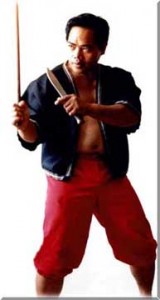
This article was reprinted from Masters of Arnis, Kali and Eskrima published by Bakbakan International. More information about the book can be obtained by sending an email to Mrs. Felisa Sulite at info@lamecoeskrima.com. Thursday, September 29th, 1994 What Makes A Grandmaster? By Punong Guro Edgar G. Sulite To be recognized as a Grandmaster or Master of combat arts in the Philippines, you must have made your reputation and show mental maturity and physical age. Grandmasters question the rankings of other grandmasters. Masters and grandmasters are criticized and questioned regarding their skills and abilities. Who bestowed their title? Do they have enough skills for the titles they carry? How many years have they been practicing the art? How old is he? How many followers and students does this man have? In other martial arts, the attainment of a certain level automatically designates the title Master or Grandmaster. In the Philippines, there are certain norms to be satisfied before one can be called and accepted as a Master or Grandmaster. A master of the art must be a master of himself. He must be in control. His daily life epitomizes a man in control of his life, his destiny. A master of the art must know his art, its origins, its history, its philosophy. He must know the techniques, the interplay of techniques, and the reversals of techniques. A master must know the basics, the intermediate forms and techniques, and the advance levels of the art. Mastery of the art does not only mean so many years in the art, but the amount of experience using the art, one's personal evolution within the art and personal dedication and contribution to the art. A master of the art must know how to teach and impart knowledge from the art. He must be able to communicate, elaborate and present the art in such a way that each student learns on a personal basis. Each instruction is adapted to the learning process and ability of the student. A master must be a real maestro, a real teacher. A master of the art must be of good character. He should epitomize the qualities of a leader, the majesty of a noble, and the courage and strength of a warrior. A master of the art is called and acknowledged a Master by other masters, never by himself. Punong Guro Edgar G. Sulite Lameco Eskrima (September 25, 1957 - April 10, 1997) … [Read more...]

INTERVIEW WITH GRANDMASTER “YULI” ROMO Interview conducted at: DAHIKAN WHITE BEACH RESORT, PILAR, CAMOTES, CEBU, PHILIPPINE ARCHIPELAGO, MAY 25TH, 2008 Q: How is Bahad Zubu different from other Martial Arts? YR: I have researched and restored the ancient Filipino Fighting arts of the Philippine Archipelago. “Fighting Arts” is different from “Martial Arts”. The Filipino warriors of ancient times didn’t know what was 1,2,3 or a,b,c but they knew how to fight like a cat knows how to be a cat. “Martial” to me means something rigid and prescriptive. Bahad Zubu is intuitive and natural. It is not a “Mixed” martial art that employs different “techniques” at different ranges. Nor does it have any un-natural stances just “Situational Footwork”. Step in, Step Out. Kompass 1 (right foot), compass 2 (left foot). That’s it. Q: How is it possible to teach the art of Bahad Zubu in just 20 sessions? YR: Generic basics and proper learning and understanding. All we need is forehand and backhand, Compass 1 and Compass 2, touch and un-touch. These simple basics. Of course, we need correct balance, posture and co-ordination. For example the 3 different levels upper (neck / chest), middle (hips) and bottom (legs, heels / toes) need to move as one. Before there were no gyms, clubs or instructors. “Proper Learning” is done by observation. “Proper Understanding” is having a friend to check you and practice with. Without “Proper Learning” you can not have “Proper Understanding” and vice versa. Bahad Zubu is a very natural fighting art. It is not taught like the common group era or by mass practice. It is taught 1 on 1 by intuitive interactive drills. Q: How can you learn to “Control the fight”? YR: With simple basics you can fight. Of course, you need tactics to be able to handle the fight. Bahad Zubu is a “Situational and multiple distractive tactics”. You must bait your opponent. Things like dis-arms are all just options. Everything that happens in the fight is unexpected and intuitive so you must practice the basics. Simple basics – most advanced! Q Why do you think many people practice “Un-Natural” Martial Arts? YR: I hink their minds are poisoned like the serpent in the garden of Eden. We are not tigers, snakes, cranes, etc, etc. We are the top animal. The most evolved. So their mind is confused. For me these arts are good for entertainment but not for the challenge of combat. Unfortunately these “un-natural” arts are the most common. Q : A student from another group invites one of your students to spar. How should your student re-act? YR: That is the time to test our individual skill. In Bahad Zubu we do not have padded sticks and helmets for sparring. We spar with live sticks. At the end of the 80’s and in the 90’s my Kali Parmatukan group competed in WEKAF tournaments and won a stack of medals. Now we just use padded sticks for practice. Obviously if we practice with live sticks we will not be able to train due to the injuries caused. Once you have all that padding on it stops being a “Fighting Art” and becomes a sport. Also, there are certain strikes you can not perform with a padded stick due to it not being rigid. So, if anybody wants to spar with “live” stick that is good for our group. From: www.bahadzubughq.com … [Read more...]
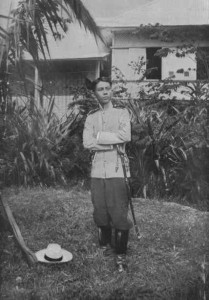
Gregorio del Pilar November 14, 1875(1875-11-14) – December 2, 1899(1899-12-02) (aged 24) Nickname:"Goyong", "Boy General" Place of birth: Bulacan, Bulacan, Philippines Place of death: Tirad Pass, Ilocos Sur, Philippines Allegiance: First Philippine Republic Service/Branch: Philippine Revolutionary Army Battles/Wars: Philippine Revolution, Philippine-American War Battle of Quingua, Battle of Tirad Pass Gregorio del Pilar y Sempio (November 14, 1875—December 2, 1899) was one of the youngest generals in the Philippine Revolutionary Forces during the Philippine Revolution and the Philippine-American War. He is most known for his role and death at the Battle of Tirad Pass. Because of his youth, he was called the "Boy General." Early life and education Born on November 14, 1875 to Fernando H. del Pilar and Felipa Sempio of Bulacan, Bulacan, del Pilar was the nephew of propagandist Marcelo H. del Pilar and Toribio H. del Pilar, who was exiled to Guam for his involvement in the 1872 Cavite Mutiny. "Goryo", as he was casually known, studied at the Ateneo Municipal de Manila, where he received his Bachelor’s degree in 1896, at the age of 20. When the Philippine Revolution against Spanish rule broke out in August under the leadership of Andres Bonifacio, del Pilar joined the insurgency. He distinguished himself as a field commander while fighting Spanish garrisons in Bulacan. Military career He later joined General Emilio Aguinaldo, who had gained control of the movement, in Hong Kong after the truce at Biak-na-Bato. During the Spanish American War, Aguinaldo returned to the Philippines and established the government of the First Philippine Republic. He appointed del Pilar section leader of the revolutionary forces in Bulacan and Nueva Ecija. On June 1, del Pilar landed in Bulacan with rifles purchased in Hong Kong, quickly laying siege on the Spanish forces in the province. When the Spaniards surrendered to del Pilar, he brought his men to Caloocan, Manila to support the other troops battling the Spaniards there. When the Philippine-American War broke-out on February 1899, del Pilar led his troops to a short victory over Major Franklin Bell in the first phase of the Battle of Quingua on April 23, 1899, in which his forces repelled a cavalry charge and killed the highly respected Colonel John M. Stotsenburg,[1] after whom Clark Air Base was originally named (Fort Stotsenburg).[2] Death Gregorio del Pilar circa 1899 Main article: Battle of Tirad Pass On December 2, 1899, del Pilar led 60 Filipino soldiers of Aguinaldo's rear guard in the Battle of Tirad Pass against the "Texas Regiment", the 33rd Infantry Regiment of the United States led by Peyton C. March. A delaying action to cover Aguinaldo's retreat, the five-hour standoff resulted in Del Pilar's death due to a shot to the neck (at the height or end of the fighting, depending on eyewitness accounts). Del Pilar's body was later despoiled and looted by the victorious American soldiers. Del Pilar's body lay unburied for days, exposed to the elements. While retracing the trail, an American officer, Lt. Dennis P. Quinlan, gave the body a traditional U.S. military burial. Upon del Pilar's tombstone, Quinlan inscribed, "An Officer and a Gentleman". In 1930, del Pilar's body was exhumed and was identified by the gold tooth and braces he had installed while in exile in Hong Kong. Documentary His life was shown in the Philippine TV news show Case Unclosed as its 13th episode. Memorials * Fort Del Pilar, home of the Philippine Military Academy in Baguio, is named after him. * In 1944, the Japanese-sponsored Philippine republic of President Jose P. Laurel issued the Tirad Pass Medal commemorating the battle and del Pilar's sacrifice. A bust of General del Pilar occupies the center of the obverse (front) side of the medal. The Tirad Pass Medal was the only award issued to recognize service to the Laurel government during the Japanese occupation. * In 1955, the municipality of Concepcion in Ilocos Sur was renamed in his honor. * In 1995, his life was featured in the movie "Tirad Pass: The Last Stand of General Gregorio del Pilar" starring Romnick Sarmienta. From Wikipedia … [Read more...]
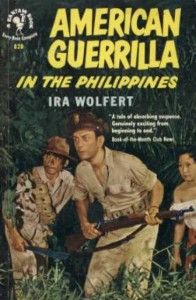
American Guerrilla in the Philippines Director: Fritz Lang Writers: Lamar Trotti (screenplay), Ira Wolfert (novel) Stars: Tyrone Power, Micheline Presle and Tom Ewell The year is 1942. Ensign Chuck Palmer (Tyrone Power) is stranded in the Japanese-occupied Philippines after his ship is torpedoed. Linking up with several other American refugees, Palmer helps the Filipinos organize a resistance movement against the enemy. They even manage to construct a few jerry-built radio stations to keep tabs on Japanese fleet movements. Hard to believe that Palmer finds romance under these trying circumstances, but he does, in the form of Jeanne Martinez (Micheline Presle), the wife of a Filipino war hero. Based on the novel by Ira Wolfert, American Guerilla in the Philippines is directed with unvarnished efficiency by Fritz Lang. Standouts in the supporting cast include Tom Ewell as Tyrone Power's wisecracking buddy and Robert Barrat as General Douglas MacArthur. After his PT boat is sunk, U.S. naval officer Tyrone Power joins a group of Americans helping Filipinos fight Japanese occupation forces. He also falls for the wife of a deceased local hero and even meets MacArthur in this rousing WWII saga, based on a true story and directed by Fritz Lang. With Micheline Presle, Bob Patten, Tom Ewell, Jack Elam. AKA: "I Shall Return." … [Read more...]
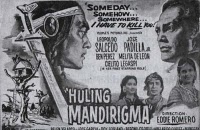
Huling Mandirigma Philippines, Shown in 1957 CREDITS Director: Eddie Romero Cast: Leopoldo Salcedo, José Padilla Jr., Ben Pérez, Melita de León People’s Pictures Inc. Huling Mandirigma (The Last Warrior), a film from the Philippines, is much different from its predecessors in the festival, designed obviously for an audience that wanted vitality, energy, violence and a long picture. Just as Pather Panchali is universal in its appeal, The Last Warrior is specialized. It is set on Mindanao. The time is about the turn of the century, but the native tribes were even then virtually untouched by contemporary developments, so that actually the action might have occurred centuries before. Two brothers, one choosing the traditional pattern of killing to make his way, the other a Christian concept, are set against each other. The details of how these proud jungle warriors lived is skillfully reflected through director Eddie Romero's film, and, while its interest may be primarily academic, it is a rich contribution to the variety of the festival. —Paine Knickerbocker, San Francisco Chronicle … [Read more...]
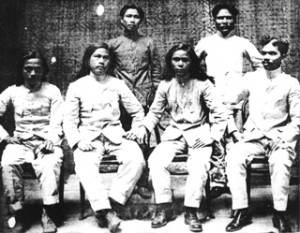
Macario Sakay: Tulisán or Patriot? by Paul Flores © 1996 by Paul Flores and PHGLA All rights reserved Contrary to popular belief, Philippine resistance to American rule did not end with the capture of Emilio Aguinaldo in 1901. There were numerous resistance forces fighting for Philippine independence until the year 1910. One of these forces was led by Macario Sakay who established the Tagalog Republic. Born in 1870 in Tondo, Macario Sakay had a working-class background. He started out as an apprentice in a calesa manufacturing shop. He was also a tailor, a barber, and an actor in comedias and moro-moros. His participation in Tagalog dramas exposed him to the world of love, courage, and discipline. In 1894, Sakay joined the Dapitan, Manila branch of the Katipunan. Due to his exemplary work, he became head of the branch. His nightly activities as an actor in comedias camouflaged his involvement with the Katipunan. Sakay assisted in the operation of the Katipunan press. During the early days of the Katipunan, Sakay worked with Andres Bonifacio and Emilio Jacinto. He fought side by side with Bonifacio in the hills of Morong (now Rizal) Province. During the initial stages of the Filipino-American war, Sakay was jailed for his seditious activities. He had been caught forming several Katipunan chapters and preaching its ideals from town to town. Republika ng Katagalugan Released in 1902 as the result of an amnesty, Sakay established with a group of other Katipuneros the Republika ng Katagalugan in the mountains of Southern Luzon. Sakay held the presidency and was also called "Generalisimo." Francisco Carreon was the vice-president and handled Sakay's correspondence. Julian Montalan was the overall supervisor for military operations. Cornelio Felizardo took charge of the northern part of Cavite (Pasay-Bacoor) while Lucio de Vega controlled the rest of the province. Aniceto Oruga operated in the lake towns of Batangas. Leon Villafuerte headed Bulacan while Benito Natividad patrolled Tanauan, Batangas. In April 1904, Sakay issued a manifesto stating that the Filipinos had a fundamental right to fight for Philippine independence. The American occupiers had already made support for independence, even through words, a crime. Sakay also declared that they were true revolutionaries and had their own constitution and an established government. They also had a flag. There were several other revolutionary manifestos written by the Tagalog Republic that would tend to disprove the U.S. government's claim that they were bandits. The Tagalog Republic's constitution was largely based on the early Katipunan creed of Bonifacio. For Sakay, the new Katipunan was simply a continuation of Bonifacio's revolutionary struggle for independence. Guerilla tactics In late 1904, Sakay and his men took military offensive against the enemy. They were successful in seizing ammunition and firearms in their raids in Cavite and Batangas. Disguised in Philippine Constabulary uniforms, they captured the U.S. military garrison in Parañaque and ran away with a large amount of revolvers, carbines, and ammunition. Sakay's men often employed these uniforms to confuse the enemy. Using guerrilla warfare, Sakay would look for a chance to use a large number of his men against a small band of the enemy. They usually attacked at night when most of the enemy was looking for relaxation. Sakay severely punished and often liquidated suspected collaborators. The Tagalog Republic enjoyed the support of the Filipino masses in the areas of Morong, Laguna, Batangas, and Cavite. Lower class people and those living in barrios contributed food, money, and other supplies to the movement. The people also helped Sakay's men evade military checkpoints. They collected information on the whereabouts of the American troops and passed them on. Muchachos working for the Americans stole ammunition and guns for the use of Sakay's men. Unable to suppress the growth of the Tagalog Republic, the Philippine Constabulary and the U.S. Army started to employ "hamletting" or reconcentration in areas where Sakay received strong assistance. The towns of Taal, Tanauan, Santo Tomas, and Nasugbu in the province of Batangas were reconcentrated. This cruel but effective counter-insurgency technique proved disastrous for the Filipino masses. The forced movement and reconcentration of a large number of people caused the outbreak of diseases such as cholera and dysentery. Food was scarce in the camps, resulting in numerous deaths. Meanwhile, search and destroy missions operated relentlessly in an attempt to suppress Sakay's forces. Muslims from Jolo were brought in to fight the guerrillas. Bloodhounds from California were imported to pursue them. The writ of habeas corpus was suspended in Cavite and Batangas to strengthen counter-insurgency efforts. With support cut off, the continuous American military offensive caused the Tagalog Republic to weaken. Fall of … [Read more...]
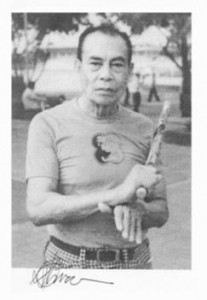
Interview With GM Antonio "Tatang" Illustrisimo and Master Tony Diego This interview was conducted with Antonio Tatang Illustrisimo and his senior student, Tony Diego, on July 29, 1997, in Manila, for Australasian Fighting Arts Magazine. It was the last interview the Granmaster ever gave. At the time of the interview, Grandmaster Illustrisimo had been ill for the previous two weeks, so he tired quickly and had some trouble talking. We were accompanied by a live-in companion, who helped serve as a translator for some of the Grandmasters answers. He passed away about a month after this interview was conducted. Grandmaster Illustrisimo lives in one of the toughest sections of Manila, near the docks. He was a merchant seaman for 35 years, and has spent his life in this same area. As an example of the respect these people give to this legend, the story is told of a gang fight between a local Manila-born gang and a gang of men who had come from the Visayan Islands for work. At the height of the melee, with many men fighting, Tatang walked through the middle of the place, and everyone stopped fighting until he had passed. He is one of those rare men whose reality justifies the legend. Australasian Fighting Arts Magazine: Erle Montaigue visited you in Manilla around 1981 and was impressed with what you were doing. He wrote an article for Australasian Fighting Arts magazine at that time. I am happy to see that you are still enjoying life and your students. And also happy to see that most of the students that you were teaching back then are still with you. Have your ideas on your training methods changed at all since 1981? GM Illustrisimo: The principles of the Art are still the same principles, so of course it is the same. AFM: When you began teaching your students, like Antonio Diego, you had certain ideas as to what they would learn by now. Have they reached your expectations? GM Illustrisimo: Yeah! Tony has been with me a long time, since 1975. If you want to train with me, you must learn the old way. When we train, I will hit your hands, many times, so you learn. You must take the pain to learn. AFM: Tony Diego, youve been with GM Illustrisimo for more than 20 years. Have you been satisfied with your training in the art, and with Tatang? Tony Diego: At first, he wouldnt teach me. He said that the Art was only for fighting. I kept asking and finally he accepted me. Ive been very satisfied. I have never felt that I wanted to change, or stop training. At one time, I was a little frustrated, though, and I asked Tatang why I couldnt be more like him. He simply answered that You are you, you are not me. Everyone learns in a different way, so you must be satisfied with the result that you get. It cant be the same as your teacher. AFM: Do you feel like you have mastered everything the grandmaster has to teach? Tony Diego: Once I asked Tatang if he had taught everything, if I had the complete system. He replied, When a guest comes to your house and you give him food, you give him the rice from the top of the pan. Its the best rice that everyone likes to eat, but you save for yourself the rice from the bottom of the pan, where it has become hard and crusty. I think that means that he taught everything he could teach, but that there are things that he still has that are not teachable. Things that come from an individuals experience in life. AFM: Tony, you will retire from your job in a few years. Do you think tht you will take on more students, expand the teaching? Tony Diego: No. I dont think so. I have several students who have been with me for many years. Probably they will take over the job of passing on Kali Illustrisimo. AFM: GM Illustrisimo, your style of Arnis impressed Erle Montaigue as one of the most natural for self defense. Are your views still the same in that this art should only be for self defence using straight forward methods rather than the more flowery ones? GM Illustrisimo: The fancy stuff in arnis, all the flowery movements, is only for stage shows, for demonstrations, not for real fighting. AFM: What is your advice to students who would wish to take up arnis nowadays in the Western world? It seems that today, the old ways of learning are fading, and many students want to learn the tournament styles. GM Illustrisimo: Arnis is simple, only one-two-three (demonstrating a 3-strike combination in the air). The tournament styles are different, not really arnis. AFM: How long do you feel a student needs to train to learn arnis, how many years? GM Illustrisimo: Only two weeks, you can master the techniques! Arnis is simple, only one-two-three! AFM: Two weeks!!? GM Illustrisimo: Study with me one hour every day and you can learn how to fight for tournaments. My pupils usually win in the tournaments. Remember, though, that training for tournaments is not training for real fighting. Wearing armor is bad for the art, students dont learn well. AFM: … [Read more...]
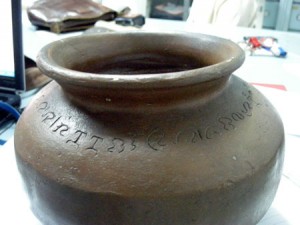
A new translation of the Calatangan Pot inscription The Calatangan Pot is a prehispanic (14th-16th century) artifact containing an inscription around the neck. It is said to be one of the earliest expressions of prehispanic writing in the Philippines, and there have been several attempts at translating the inscription. Rolando Borrinaga is the latest person to offer an translation of the script, based on old Bisayan and old Tagalog alphabets. An earlier attempt to decipher the Calatangan Pot incription was made by University of the Philippines’ Ramon Guillerm *** The mystery of the ancient inscription The Inquirer, 23 May 2009 AFTER 50 years of enigma, the text inscribed around the shoulder of the Calatagan Pot, the country’s oldest cultural artifact with pre-Hispanic writing, may have been deciphered as written in the old Bisayan language. Diggers discovered the pot in an archeological site in Calatagan, Batangas, in 1958. They sold it for P6 to a certain Alfredo Evangelista. Later, the Anthropological Foundation of the Philippines purchased the find and donated it in 1961 to the National Museum, where it is displayed to this day. The pot, measuring 12 centimeters high and 20.2 cm at its widest and weighing 872 grams, is considered one of the Philippines’ most valuable cultural and anthropological artifacts. It has been dated back to the 14th and 16th centuries. *** The Calatagan Pot by Hector Santos © 1996 by Hector Santos All rights reserved. http://www.bibingka.com/dahon/mystery/pot.htm In the early 1960's, an artifact was offered by treasure hunters to National Museum staff as they were working on a nearby excavation. It was the Calatagan pot, the first pre-Hispanic artifact with writing to be found. As such, it is the best known and written about among all artifacts with writing. Even at that, it is still undeciphered. Calatagan Pot The late Dr. Robert Fox brought the pot to the offices of the Manila Times to ask help from its editor, Chino Roces, in deciphering the writing around the mouth of the pot. The newspaper, as a result, commissioned the sculptor Guillermo Tolentino, an expert on Philippine syllabaries, to decipher the writing. Tolentino had a hard time with certain letters so he, as a spiritist, reportedly summoned his special powers to come up with a translation. The authenticity of the pot has been questioned since it first showed up. For one thing, no other pot has been found decorated with writing. Carbon dating was reportedly done on the pot but the results pointed to such an extremely early date that it had to be rejected. Dr. Fox wanted to do some thermoluminescence testing but didn't live to see it done. Nevertheless, the pot may still be authentic. It would have been very easy for a forger to write something decipherable on the pot, especially text which made sense. Anyone attempting to create a phony artifact would probably have done so. As it was, the strangeness of the characters and the direction of writing (or to be more precise, the direction in which the artisan wrote the letters) gives us something to think about. Juan Francisco, a respected Philippine paleographer, did some analysis of the letters in his 1973 book, Philippine Palaeography. He could not decipher the writing, however. His analysis mainly consisted of classifying the letters as curvilinear, lineo-angular, or a combination of the two. I cannot see the usefulness of such a classification because there is no benefit from its use, whether in trying to find the script's heritage or in classifying it among the known scripts of the world. His book contains good sketches of all the letters though, which makes the section on the Calatagan pot in his book not entirely useless. The writing on the pot goes around its mouth. The letters look similar to those of classic Philippine scripts (Tagalog, Tagbanwa, Buhid, and Hanunóo) but some appear to be oriented in strange ways. Some show a similarity to older scripts used in Indonesia, suggesting an earlier development of classic Philippine scripts. The symbols are divided by stop marks into six groups (which may be phrases), each consisting of five or seven symbols. Calatagan Writing What is strange and maybe significant about the writing is the apparent direction in which the artisan wrote it. A look at the pot will show that the artisan engraved the letters into the soft clay in a direction going to the left looking at the pot as it stands right side up. He apparently misjudged the length of the writing and ran out of space so that its last few letters go under the starting point. This gives us a clue as to the literacy of the artisan. We know that ALL Southeast Asian scripts share a common ancestor and were meant to be read and written from left to right. (Forget what others have said about having observed Tagbanwans writing on bamboo slats in a direction away from their body. You have seen classmates in … [Read more...]
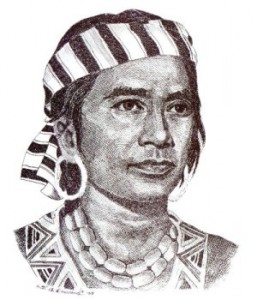
Datu Lapu-Lapu/Kolipulako (1491-1542) Lapu-Lapu is considered one of the greatest figures of ancient Philippine history. Although the first thing that usually comes to mind when the name of Lapu-Lapu is mentioned is the fact that his battle with Magellan led to Magellan's death, Lapu-Lapu was not honored because of that. Rather, he is honored because he was among the first to reject submission to a foreign power even though Raja Humabon, ruler of the neighboring island of Cebu, and other chiefs recognized the king of Spain as their ruler and agreed to pay tribute. Chief Lapu-Lapu's (1491-1542) other name is Kolipulako. The hero of Mactan and conqueror of Magellan, is described as stern, proud, intelligent, unyielding. He waged continuous war against the powerful ruler of Cebu, then a very much greater kingdom than his little island of Maktang. Of him, President Gullas of the University of the Visayas writes: Lapu-Lapu is a good example of determination and willingness to work well. He learned how to ride on a horseback and on carabao proficiently at the age of six years; knew how to read and write at seven; boxed well at nine; became a champion swimmer, boxer and wrestler at eighteen; beat the Bornean marauders and pirates twice at twenty'. In the lives of men who have almost become legendary one finds it diffucult to separate fact from fiction. This must be true in the case of the material quoted above. History has it that Mactan Island although small was a thriving community when the great Magellan was in Cebu. The brave Spanish navigator and soldier, upon learning that some inhabitants on this tiny island across Cebu refused to recognize the King of Spain, burned one of the villages. Lapu-Lapu was one of he native leaders who refused to acknowledge the sovereignty of Spain over the Islands. When Magellan, with three boatloads of Spaniards and twenty boatloads of Cebuanos, went to Mactan to help a friendly chief, Lapu-Lapu and his men armed with native fighting elements, wooden shields, bows and arrows, lances, met them. The invading Spaniards and Cebuanos were driven back to their boats, but their brace leader, Magellan, met death in the hands of Lapu-Lapu. On what is believed to be the exact spot where Magellan fell and died, now stands an imposing monument in honor of the gallant explorer. In the well-kept plaza of Opon, one of the two towns on Mactan Island, stands today an inspiring monument in honor of Lapu-Lapu, considered the first Filipino to have repelled European aggression. The battle between Mactan Island Chieftain Lapu-Lapu and the Foreign aggressor Ferdinand Magellan occurred in April 27, 1521. It depicts the hero holding a bolo in one hand and a pestle on the other. Said weapons were believed to have been used during his combat with Magellan. This monument stands as a reminder of Filipino bravery. The historic battle for Mactan (Kadaugan sa Mactan) is re-enacted each year on the beach at Magellan Bay by amateur actors, providing a sponsor can be found. The Tourist Office should be able to provide you with up-to-date information. Lapu Lapu Comic by Francisco V. Coching … [Read more...]
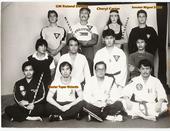
Bakbakan Philippines and Master Christopher Ricketts Bakbakan International is a martial arts association headquartered in Manila, Philippines and founded by Christopher Ricketts in 1964. It has chapters in Australia, Canada, and the United States. It also promoted the Masters of Arnis tour in Australia that featured Christopher Ricketts, Antonio Diego, Edgar Sulite, and Rey Galang. The school teaches the following methods: • Kali Ilustrisimo, which was developed by Antonio "Tatang" Ilustrisimo. • The Tulisan Knife-Fighting System, which works as an offshoot of Kali Ilustrisimo and is based on technique rather than drill. • The Sinawali Fighting System, which emphasizes ambidexterity and weapon mastery. • Lameco Eskrima, developed by Edgar Sulite. • The Sagasa Kickboxing System, which develops coordination, power, and reflexes. • The Hagibis Combat System of close-quarter combat, which primarily emphasizes grappling, throwing, and tripping as means of disabling individual opponents where multiple opponents exist. • Ngo Cho Kun Kung Fu, which emphasizes power, stamina, and concentration. Its notable members are Tony Diego, Edgar Sulite, Alexander Co, Christopher Ricketts, Rey Galang, Dodong Sta. Iglesia, Miguel Zubiri, Doran Sordo, Ding Binay, Ronnie Ricketts, Rolly Maximo, Ramon Tulfo, Rey Dizer, Edgar Aristorenas, and Leonard A. Anderson. The organization or its senior members have been featured in or written the following published works: • September 1997 issue of Exotic Martial Arts of Southeast Asia • Filipino Martial Culture by Mark V. Wiley • Five Ancestor Fist Kung Fu by Alexander Co • Premiere Issue of Martial Arts Illustrated Magazine • Masters of the Blade by Reynaldo S. Galang • Warrior Arts of the Philippines by Reynaldo S. Galang • Classic ARNIS - The Legacy of Placido Yambao by Reynaldo S. Galang • Complete Sinawali Filipino Double Weapon Fighting by Reynaldo S. Galang • The Secrets of Kalis Ilustrisimo: The Filipino Fighting Art Explained by Antonio Diego & Christopher Ricketts • Masters of Arnis Kali & Eskrima by Edgar G. Sulite • The Secerts of Arnis by Edgar G. Sulite • Advanced Balisong by Edgar G. Sulite • Inside Kung-Fu Magazine with Edgar G. Sulite • Cinturon Negro Magazine with Edgar G. Sulite Quote from a Master Ricketts interview: Q: Firstly what is the history and aim of Bakbakan? A: "Bakbakan means something along the lines of a free for all brawl. Bakbakan was founded in 1967 by a group of instructors from various styles of martial arts in the Philippines. Prior to the organization becoming a bastion of martial arts in the Philippines, the main objective of the original members was to elevate their fighting skills through constant full contact sparring. Originally there were only six of us: Ding Binay, Rolly Maximo, Christian Gloria, Eddie Ben Alicante, Rey Vizer and myself. We would meet at my house in San Miguel Village in Makati, where my bedroom was our original gym." … [Read more...]
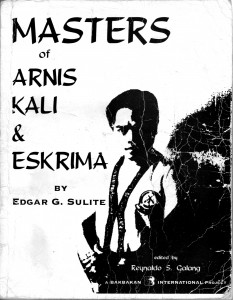
Lameco Sulite Orihinal Group Sulite Orihinal Group is comprised of dedicated Lameco Eskrima International practitioners who were handpicked by Punong Guro himself to be a part of his regular "backyard" training sessions. Many loyal Lameco practitioners have trained in the "backyard", yet there was and always will be a distinction between "Invitation Only" and "Open Invitation" students. The open invitation students were the selected few individuals who attended the rigorous, 3 days a week, 4-hour sessions and were frequently shown numerous techniques not shared with the general public. An important factor among the core members was that they held no administrative ties to other Filipino Martial Arts styles and systems. One of the primary reasons Punong Guro created the elite group was to create a first generation of practitioners that owed allegiance, first and foremost, to Lameco Eskrima. Because the sessions were conducted at his personal residence, Punong Guro was extremely selective about whom he allowed to participate. Punong Guro often mentioned that although many individuals were eager to train, very few actually allowed themselves to be trained. It is not a system, for it already exists, but a fraternity of dedicated practitioners with a common bond. One factor that is prevalent among the original core members is that they initially joined Lameco Eskrima International for reasons of pride, culture and heritage. The primary aim of the group is to keep the art of Lameco Eskrima alive through continued training in a combat realistic, non-commercial and non-political environment. Passion for the art was, and always will be, the prime motivator. As a sign of respect so that Punong Guro’s name shall always be remembered for many generations to come, the core members named themselves “Sulite Orihinal Group.” Sulite Orihinal Group considers their inherited knowledge more precious beyond any material compensation, just as much as the blood, sweat and tears that were spilled by our forefathers in order to obtain it, so we strive to be worthy of the generations of warriors before us. The desire of the brotherhood is to continue traveling upon the same path, which Punong Guro Edgar G. Sulite had started them on. They wish to keep his legacy, and the heritage, alive and pure and pursue it with a mind, body and sprit that is nothing short of being honorable. Sulite Orihinal Group will continue to uphold this tradition in order to maintain the spirit of brotherhood and unity amongst its members. Lameco Sulite Orihinal Group circa 1992 -1997 Lameco Sulite Orihinal Group circa 1992 -1997 Lowell Pueblos, Eric Koh, Ron Balicki Mar Elepano, Hospecio "Bud" Balani, jr., Rem V. Cruz, Dino Flores, Arnold Noche, Hans Anton Tan, Pelix Balencia, Dave Gould, Steve Grody Elmer "Bong" Hebia, Roger Agbulos, Jason Ancheta Marc F. Denny, Steve Tarani, Phil Rapagna , Choy Flores, Gary Quan Joel '"Jay" Adriatico, Bryant Emerson, Sung Han Kim, Rodney Wilson, Pantaleon " Mang Leo" Revilles, jr. ( R.I.P. ) … [Read more...]
SANDATA — THE EDGED WEAPONS OF THE PHILIPPINES Ian A. Greaves, Jose Albovias Jr. and Federico Malibago Collectively known as “sandata,” the edged weapons of the Philippines displayed in this exhibit are more than mere artifacts. They present a tangible living connection with a culture and history that would otherwise have been forgotten. Edged weapons have played a pivotal role in the cultural development and survival of the Philippine people. For many Philippine ethnic groups, bladed weapons exist as more than just a tool of war; they are a key part of a man’s identity and daily attire. While limited in its scope to general information, history, and a description of the types of weapons in this exhibit, this article in conjunction with the exhibited items provide a glimpse into the diverse world of Philippine weaponry. We start this discussion with the physical aspects of the Philippines within the greater context of the world. We then turn to the current population breakdown of the nation, illustrating the wide variety of ethnicities and cultures present throughout Philippine history. A brief discussion of Philippine history follows, focusing on general trends and events. Finally, we discuss the edged weapons displayed in this exhibit, with brief descriptions of the ethnic groups who developed these weapons. Origins According to archeological records, the Philippines was connected to mainland Asia during the last Ice Age. As glaciation lowered sea levels, newly exposed land in the China Sea created the Sunda Shelf, a land mass that covered an area of some 1,800,000 square kilometers. This land mass enabled the present day Philippines to act as a land bridge connecting mainland Asia to Borneo, Indonesia, New Guinea, and Australia. During this period the bulk of the flora and fauna of the Philippines were introduced. Approximately 250,000 years ago the glaciers melted, and the land bridges were submerged, creating the Philippine Archipelago. Geography and Climate The Philippine Archipelago consists of roughly 7,107 islands, many of volcanic origin. It is located between three major bodies of water: to the northwest the South China Sea, to the east the Pacific Ocean, and to the south the Celebes Sea. The archipelago lies between Southern China and North Borneo, in the latitudes of 4°23’N to 21°25’N and the longitudes of 116°E to 129°E. The total area of the Philippines has a total land area of about 300,000 square kilometers of which only 19% is arable. It has an extensive coastline of roughly 36,000 kilometers. Much of the terrain is mountainous, with narrow but extensive coastal lowlands. The highest point in the Philippines is Mt Apo, located on the southern island of Mindanao, rising 2,954 meters. The Philippines is divided into three geographic areas: Luzon in the north, the Visayas in the center, and Mindanao in the south. It is further divided into 17 regions and 79 provinces. The climate of the Philippines is tropical and subject to an abundance of rain. It has three primary seasons: a rainy season during the months of June to October, a cool dry season during the months of November to February, and a hot dry season during the months of March to May. The archipelago is located astride the typhoon belt, and is normally affected by about 15 major storms each year, and hit directly by five or six typhoons. Local flooding and mud slides are major problems in the wet season. Population According to a July 2005 estimate, the Philippines currently has a population of 87,857,473 people, making it the fourteenth most populous nation. About 96% of the population is under the age of 65, with a median age of 22.7 years. The ethnic breakdown of the Filipino population, according to the latest census data, is: Tagalog 28%, Cebuano 13%, Ilocano 9%, Bisaya/Binisaya 7.6%, Hiligaynon Ilonggo 7.5%, Bicolano 6%, Waray 3.4%, and 25% are listed as “Other.” Despite the seeming dominance of Christian groups, within the category of “Other” there exist about 100 non-Christian tribal groups. According to the 2000 census, the religious makeup of the Philippines breaks down as follows: Roman Catholic 81%, Evangelical 2.8%, Iglesia ni Kristo 2.3%, Aglipayan 2%, other Christian 4.5%, Muslim 5%, Other 1.8%, Unspecified 0.6%, and None 0.1%. For various reasons it is possible that the numbers of non-Christians in the Philippines were underestimated. Language is another source of diversity among the Philippine population. The Philippines has two official languages: Filipino (which is based on Tagalog) and English. Besides the official languages there are over 500 local dialects. The eight most common are Tagalog , Cebuano, Ilocano, Hiligaynon (Ilonggo), Bicolano, Waray, Pampango, and Pangasinan. Pre-Colonial Cultural Influences Cultural diffusion among the Filipino population has been due largely to effects of regional migration through trade and settlement. While there are currently no archaeological … [Read more...]
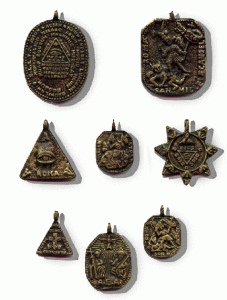
Anting Anting Shrouded in secrecy and mystery, the anting-anting is a subject close to the Filipino’s heart. It holds promise of invincibility, of victory and of heroic deeds. Legends have been born and men have died because of the lure of the mysterious and powerful anting-anting. The anting-anting made a resurgence into popularity in the early 70’s when the film Nardong Putik chronicling the life of the outlaw Leonardo Manecio made its debut. The hero of the film, a local Robin Hood, credited his ability to survive and escape numerous ambushes and gunfights to his anting-anting. There is much dispute as to what his anting-anting really was. Some claim it was a smooth pebble of rare and mysterious material that Nardong Putik kept under his tongue. While others say it is a 66-day old fetus that he kept in a small crystal container. Whatever his anting-anting was, Nardong Putik’s ability to elude the law and his enemies made him a legend and a hero to many people. Jikiri, the noted Muslim pirate, eluded the Philippine Constabulary and U. S. soldiers for over three years. Yet Jikiri boldly operated in broad daylight. The legendary source of his galing (gift) — an anting-anting, of course. These stories and more contribute to the growing number of legends and belief in the efficacy of the anting-anting. Combined with the equally mysterious Orascion (a special verse or prayer), warriors can be psyched to become confident and daring to undertake suicidal missions. There are many prescribed ways of acquiring an anting-anting. The easiest is to have an existing, sacred anting-anting bestowed to you as an inheritance or reward. This happens very rarely, for the agimat (amulet) is usually buried with its owner and master for continued protection against spirits from the nether world. Stealing an anting-anting makes it lose its power and is therefore a useless alternative. An anting-anting loses its power when it leaves its master’s possession without his knowledge or blessing. Various types of anting-anting can be bought at holy places but these are patay (dead/blanks) with no power whatsoever. These blanks have to undergo sacred and secret rituals to become empowered and effective. There are many different methods to make an anting-anting sagrado (sacred). The most popular day for the anting-anting to have birtud (power) is on Good Friday. This, according to legend, is when God abandons His creation and the spirits roam freely and can be lured, captured, harnessed and enslaved by the brave and mighty. Another popular occasion is at midnight during a full moon with the ritual taking place at a cross road or a cemetery with a sacrificial black cat as a bait or offering. Another kind of anting-anting, known as Mutya, comes from plants, such as a banana or a palm tree. This requires a lot of patience and diligence for one has to wait until the heart of the banana discharges its essence, a crystal clear solid drop that must not be allowed to touch the ground and must be swallowed immediately. With this captive prize, legends say that a successful and prosperous life is guaranteed. Some types of anting-anting or orascion are meant as love charms. Most are for protection — against the forces of darkness, against one’s enemies, and even against sickness. Others are for special gifts, such as the mysterious and esoteric art of Hilot (massage and healing), Hula (fortune telling) and Kulam (spells and witchcraft). However, every anting-anting and every orascion carries with it an immutable commitment. One must be prepared to perform the required rituals, the mandated daily devotion, the annual pilgrimage, to keep the birtud of the anting-anting. Man will always be fascinated with this mysterious harbinger of success, victory and protection. Many, though not all, of the Philippine Grand Masters and Masters of martial arts believe in the power and protection of the anting-anting and orascion. And everyone of these believers, without exception, recognize the value and worth of diligence, dedication and discipline in martial arts training. Like the anting-anting, the easiest way to learn a martial art is to find a good teacher, a worthy master. Someone who, like the anting-anting’s master, will pass on to you, the secret and power of his own knowledge and skills. Again, like the anting-anting, this knowledge and skill must be nurtured with diligent practice, with moral righteousness, discipline, devotion and dedication. Written by Reynaldo S. Galang Copyright © 1994, 1997 Bakbakan International … [Read more...]
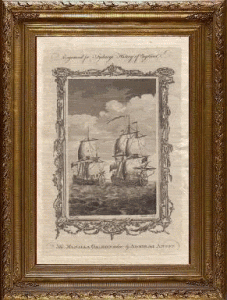
Manila galleon The Manila galleons or Manila-Acapulco galleons (Spanish: Galeones de Manila-Acapulco) were Spanish trading ships that sailed once or twice per year across the Pacific Ocean between Manila in the Philippines, and Acapulco, New Spain (present-day Mexico). The name changed reflecting the city that the ship was sailing from. Service was inaugurated in 1565 with the discovery of the ocean passage by Andrés de Urdaneta, and continued until 1815 when the Mexican War of Independence put a permanent stop to the galleon trade route. Though service was not inaugurated until almost 50 years after the death of Christopher Columbus, the Manila galleons constitute the fulfillment of Columbus' dream of sailing west to go east to bring the riches of the Indies to Spain, and the rest of Europe. Contents Discovery of the route The Manila-Acapulco galleon trade began when Andrés de Urdaneta, sailing in convoy under Miguel López de Legazpi, discovered a return route from Cebu City to Mexico in 1565. Attempting the return the fleet split up, some heading south. Urdaneta reasoned that the trade winds of the Pacific might move in a gyre as the Atlantic winds did. If in the Atlantic ships made a wide swing (the "volta") to the west to pick up winds that would bring them back from Madeira, then, he reasoned, by sailing far to the north before heading east he would pick up trade winds to bring him back to the west coast of North America. Though he sailed to 38 degrees North before turning east, his hunch paid off, and he hit the coast near Cape Mendocino, California, then followed the coast south to San Blas and later to Acapulco. Most of his crew died on the long initial voyage, for which they had not sufficiently provisioned. By the 18th century it was understood that a less northerly track was sufficient, but galleon navigators steered well clear of the forbidding and rugged fogbound California coast; According to historian William Lytle Schurz, "They generally made their landfall well down the coast, somewhere between Point Conception and Cape San Lucas...After all, these were preeminently merchant ships, and the business of exploration lay outside their field, though chance discoveries were welcomed". The first motivation for exploration of Alta California was to scout out possible way-stations for the seaworn Manila galleons on the last leg of their journey. Early proposals came to little, but in the later 18th century The Manila-Acapulco trade route started in 1568 and Spanish treasure fleets and its eastwards rivals, the Portuguese India Armadas routes of 1498-1640. Trade served as the fundamental source of income for Spanish colonists in the Philippine Islands. A total of 110 Manila galleons set sail in the 250 years of the Manila-Acapulco galleon trade (1565 to 1815). Until 1593, three or more ships would set sail annually from each port. The Manila trade was becoming so lucrative that Seville merchants petitioned king Philip II of Spain to protect the monopoly of the Casa de Contratación based in Seville. This led to the passing of a decree in 1593 that set a limit of two ships sailing each year from either port, with one kept in reserve in Acapulco and one in Manila. An "armada" or armed escort of galleons, was also approved. With such limitations it was essential to build the largest possible galleons, which were the largest class of ships known to have been built anywhere up to that time. In the 16th century, they averaged from 1,700 to 2,000 tons, were built of Philippine hardwoods and could carry a thousand passengers. The Concepción, wrecked in 1638, was 43 to 49 m (140–160 feet) long and displacing some 2,000 tons. The Santísima Trinidad was 51.5 m long. Most of the ships were built in the Philippines and only eight in Mexico. The Manila-Acapulco galleon trade ended in 1815, a few years before Mexico gained independence from Spain in 1821. After this, the Spanish Crown took direct control of the Philippines, and was governed directly from Madrid. This became manageable in the mid-19th century upon the invention of steam power ships and the opening of the Suez Canal, which reduced the travel time from Spain to the Philippines to 40 days. The galleons carried spices, porcelain, ivory, lacquerware, processed silk cloth gathered from both the Spice Islands, and Asia-Pacific, to be sold in the Americas, namely New Spain and Peru as well as in European markets. East Asia trading was primarily on a silver standard; the goods were mostly bought by Mexican silver. The cargoes were transported by land across Mexico to the port of Veracruz on the Gulf of Mexico, where they were loaded onto the Spanish treasure fleet bound for Spain. This route was the alternative to the trip west across the Indian Ocean, and around the Cape of Good Hope, which was reserved to Portugal according to the Treaty of Tordesillas. It also avoided stopping over at ports controlled by competing powers, … [Read more...]
Punong Guro Edgar G. Sulite and Lameco Eskrima Lameco Eskrima is a highly combative form of martial arts originating from the Philippines. The ancient warrior arts of the Philippines are generally known as Arnis, Kali or Eskrima. The founder of Lameco Eskrima, the late Punong Guro Edgar G. Sulite, learned these techniques from several prominent grandmasters in the Philippines. The quest for knowledge led him on an adventure that took him throughout the Philippine islands. The result of his journey resulted in Lameco Eskrima. The word “LAMECO” reflects the three ranges of combat. “LA” for largo or long range of combat, “ME” for medio or medium range of combat and “CO” for corto or close range of combat. The Lameco insignia represents the following: The Triangle represents the integration of the mind, body and spirit and the unity of these three elements. The Kris sword, the Balisong and the Bastons represent the Warriors of the Philippines. The Kris sword represents the island of Mindanao (Southern Philippines) where it is still used by the Muslims. The Balisong knife (butterfly knife) represents the island of Luzon (Northern Philippines) where it originated. The Baston (rattan stick) represents the islands of the Visayas (Central Philippines). The Arrows represent the flow of nature and the concept of going with the force, blending, not contradicting the laws of nature. Lameco Eskrima teaches the following Filipino weapons: Solo baston (Single stick), Doble baston (Double Stick), Espada y daga (Sword and Dagger), Solo daga (Single dagger), Doble daga (Double Dagger), Centro baston (Center stick Grip), Susi (Stick with Key Grip), Itak (Sword), Doble Itak (Double Sword), Panyo (Hankerchief), Mano y Mano and Dumog (Empty Hands). Punong Guro Sulite was also an innovator and inventor. He invented the sparring arm guard and hand guard with the assistance of master Yuli Romo. With the input of the Five Pillars of Ilustrisimo they introduced the world to hand sparring to develop accuracy, range and timing. This method has now become standard practice in numerous Eskrima Systems. Punong Guro and his fellow Pillars of Ilustrisimo initially only sparred with live rattan sticks only. Unfortunately this led to many injuries that took them out of the training that they lived for. They sought a safer alternative to spar without losing respect for the weapon by wearing too much protection. This led to the development of real rattan sticks with light padding or the padded stick used in conjunction with minimal protective gear. Thus the Backyard Curriculum consisted of Light Sparring or Hand Sparring, mid level intensity with padded sticks and minimal gear and finally Live Stick with minimal gear. It was Master Christopher Rickets that implementing sparring into the regular LAMECO curricul um. Punong Guro is the author of three books, including “Secrets of Arnis”, “Advanced Balisong” and “Masters of Arnis, Kali and Eskrima”. Punong Guro has been featured in numerous magazines such as “Inside Kung-Fu” and “Cinturon Negro” in Europe. Punong Guro is the featured instructor in several videos including “Lameco Eskrima at the Vortex”, “Laban Laro 1 & 2” and a whole series by Unique Publications. His book, “Masters of Arnis, Kali and Eskrima” was a landmark publication as it was the first time a researcher traveled and trained throughout the Philippine islands and compiled the findings in a book. This book opened up numerous Masters and Systems to the rest of the world outside of their province of origin and influenced the majority of books that came after it. Many of the photographs that Punong Guro Sulite took for his book also appear in the the books of Master Rey Galang and Mark Wiley. Guro Dino Flores can be contacted for Classes or Seminars at mandirigma.org@gmail.com. … [Read more...]
What Makes A Grandmaster? By Punong Guro Edgar G. Sulite To be recognized as a Grandmaster or Master of combat arts in the Philippines, you must have made your reputation and show mental maturity and physical age. Grandmasters question the rankings of other grandmasters. Masters and grandmasters are criticized and questioned regarding their skills and abilities. Who bestowed their title? Do they have enough skills for the titles they carry? How many years have they been practicing the art? How old is he? How many followers and students does this man have? In other martial arts, the attainment of a certain level automatically designates the title Master or Grandmaster. In the Philippines, there are certain norms to be satisfied before one can be called and accepted as a Master or Grandmaster. A master of the art must be a master of himself. He must be in control. His daily life epitomizes a man in control of his life, his destiny. A master of the art must know his art, its origins, its history, its philosophy. He must know the techniques, the interplay of techniques, and the reversals of techniques. A master must know the basics, the intermediate forms and techniques, and the advance levels of the art. Mastery of the art does not only mean so many years in the art, but the amount of experience using the art, one's personal evolution within the art and personal dedication and contribution to the art. A master of the art must know how to teach and impart knowledge from the art. He must be able to communicate, elaborate and present the art in such a way that each student learns on a personal basis. Each instruction is adapted to the learning process and ability of the student. A master must be a real maestro, a real teacher. A master of the art must be of good character. He should epitomize the qualities of a leader, the majesty of a noble, and the courage and strength of a warrior. A master of the art is called and acknowledged a Master by other masters, never by himself. … [Read more...]
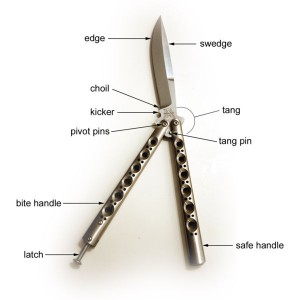
Balisong A butterfly knife, called a balisong in the Philippines, and sometimes known as a Batangas knife, is a folding pocket knife with two handles counter-rotating around the tang such that, when closed, the blade is concealed within grooves in the handles. In the hands of a trained user, the knife blade can be brought to bear quickly using one hand. Manipulations, called flipping, are performed for art or amusement. Contents Balisong While the meaning of the term "balisong" is not entirely clear, a popular belief is that it is derived from the Tagalog Language words baling sungay (literally, "broken horn"as the original balisongs were made from carved animal horns. These knives are also referred to as "fan knives" or "click clacks." The use of the balisong is so popular in the Philippines that an urban legend exists about every Batangueño carrying it everywhere he goes. They are a pocket utility knife used by people of Filipino society. They have also been used to fight duels over matters of honor, although such practices have been discontinued decades ago. History The butterfly knife appears first documented in a 1710 French book, "Le Perret", where an intricate and precise depiction of a butterfly knife is outlaid, explaining that the device was developed in the late 1600's as a utility knife. It then most likely came into popular use in the Phillipines through transference intercontinentally to Spain, which coincides with the Spanish governance of the Phillipines during that period. There is, however, myth and legend attending to the butterfly knife being an 'ancient Filipino invention dating back to 800 AD', stating it to be the most ancient of weapons of the Filipino fighting system of Eskrima but this is believed by academics and historians to be purely conjecture or urban legend. Construction There are two main types of butterfly knife construction: sandwich construction and channel construction. Sandwich constructed butterfly knives are assembled in layers that are generally pinned or screwed together. They allow the pivot pins to be adjusted tighter without binding. When the knife is closed, the blade rests between the layers. For a channel constructed butterfly knife, the main part of each handle is formed from one piece of material. In this handle, a groove is created (either by folding, milling, or being integrally cast) in which the blade rests when the knife is closed. This style is regarded as being stronger than sandwich construction. Parts Bite Handle The handle that closes on the sharp edge of the blade. Kicker (or Kick) Area on the blade that prevents the sharp edge from contacting the inside of the handle and suffering damage. Latch The standard locking system, which holds the balisong closed. Magnets are occasionally used instead. Latch, Batangas A latch that is attached to the bite handle. Latch, Manila A latch that is attached to the safe handle. Latch, Spring A latch that utilizes a spring to propel the latch open when the handles are squeezed. Safe Handle The handle that closes on the non-sharpened edge of the blade. Latch gate A block inside the channel of the handles stopping the latch from impacting the blade Tang The base of the blade where the handles are attached with pivot pins. Choil Small curve found on some balisongs just above the kicker, that allows you to sharpen the blade more easily. Swedge Unsharpened spine of the blade that is angled to appear as if it were sharpened. (many spear point balis actually have an edged side and a swedge side instead of two sharpened sides) Antique dueling balisong Balisongs are still handmade in the traditional manner in the Philippines. Such knives are referred to as "Filipino handmade" (FHM), and their quality varies greatly. The typical FHM is a sandwich style balisong made from layers of brass or aluminum sheet assembled with pins. Frequently, the handles are inlayed with scales fashioned from rosewood, bone, horn, stag, or synthetic materials. Balisongs made for the tourist trade are typically of passable quality, but are mass-produced by semi-skilled workers and lack the durability and aesthetics of a knife fashioned by an apprentice to a master craftsman. Balisongs are also called "vente nueve" (twenty-nine) for the standard twenty-nine-inch balisong. Legal status Because of its potential usage as a weapon, and possibly due to its intimidating nature and rapid deployment, it has been outlawed in several Western countries. The importation ban and widespread criminalization of the butterfly knife occurred shortly after the popular film, The Outsiders (film) (which prominently featured butterfly knives in the same manner that Rebel Without A Cause featured switchblades -- coincidentally resulting in their rapid criminalization) was released. * In Canada, the possession of a butterfly knife is illegal. * In Scotland, England & Wales, The … [Read more...]
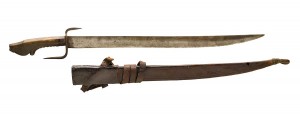
The Sansibar Sword, sometimes mistakenly known as the Zanzibar Sword. The Zanzibar sword, which is an African sword, mainly from around the Saudi Arabian/African border line area. If there is a historical connection between the Filipino version of the Sansibar and the Zanzibar, it is presently unknown! The Sansibar was officially born in Leyte in 1881 before Spain sold the Philippines to America through a treaty. Mainly the sansibar was and still is used by the river men who cut bamboos and use it as floaters for their "bangka" or boats for local traveling. These same boatmen also travel the seas to cross to the other islands in the Philippines. That is the reason why the Sansibar design reached other islands within the Philippines. You will see various popular designs of the Sansibar sword...approximately 5 different designs in the various islands where the Sansibar had found a home. The name Sansibar was first called "pang sibak", which "pang" means "for" and "sibak" means "chop" in Filipino term. So pang sibak means "for chopping," later the term evolved into "pang sibar" which means the same in Tagalog. Other explanations are "san sibak," meaning "one" (san or isan or isang) and "chop" (sibak) so to put them two words together "san-sibak" means "one chop!" Then much later on the name sansibar was adopted even though every Filipino dialect differs in almost every island. The hearing and the pronunciation of the word "Sansibar" changed until the occupation of America began...and then the word Sansibar was used as the standard name for this particular sword design. This history is one strong theory supported by strong beliefs of the Filipino people. Any other history of this sword is not well known because a more popular swords like the "Katipunan" and "Pinute" were used by the katipuneros. Those swords are widely used in everyday tasks as tools of survival, and the Sansibar whose image, shape and style was temporality put aside. But then again, the Sansibar was also used by many of the katipuneros for all out combat purposes due to its perfectly engineered balance. According to Punong Guro Edgar Sulite the Sansibar and Barong swords were the favorites of his teacher, the legendary Master Antonio Ilustrisimo. … [Read more...]
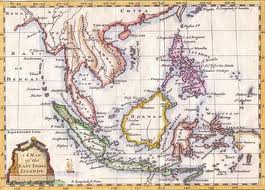
Majapahit Empire The Majapahit Empire was an Indianized kingdom based in eastern Java from 1293 to around 1500. Its greatest ruler was Hayam Wuruk, whose reign from 1350 to 1389 marked the empire's peak when it dominated other kingdoms in the southern Malay Peninsula, Borneo, Sumatra, Bali, and the Philippines. The Majapahit empire was the last of the major Hindu empires of the Malay archipelago and is considered one of the greatest states in Indonesian history. Its influence extended to states on Sumatra, the Malay Peninsula, Kalimantan and eastern Indonesia. Historiography The detailed history of Majapahit is not very clear. he main sources that are used by historians are: the Pararaton ('Book of Kings') written in Kawi language and Nagarakertagama in Old Javanese. Pararaton is mostly about Ken Arok (the founder of Singhasari) but includes a number of shorter narrative fragments about the formation of Majapahit. Nagarakertagama, on the other hand, is an old Javanese epic poem written during the Majapahit golden age under the reign of Hayam Wuruk after which events are not so clear. In addition, there are some inscriptions in Old Javanese and Chinese records. The accuracy of all of the Javanese sources is in dispute. There is no doubt that they incorporate some non-historical, mythological elements, and some scholars such as C. C. Berg consider the entire corpus to be not a record of the past, but a supernatural means by which the future can be determined.However, most scholars do not accept this view, as the basic outline corresponds with Chinese records that could not share this intention. The list of rulers and the nature of the state, in particular, seem rather certain. After defeating Srivijaya in Java in 1290, Singhasari became the most powerful kingdom in the area. Kublai Khan, the ruler of the Chinese Yuan Dynasty, challenged Singhasari by sending emissaries demanding tribute. Kertanegara, the last ruler of Singhasari, refused to pay the tribute. In 1293, Kublai Khan sent a massive expedition of 1,000 ships to Java. By that time, a rebel from Kediri, Jayakatwang, had usurped and killed Kertanagara. Raden Wijaya, Kertanegara's son-in-law, allied himself with Yuan's army to fight against Jayakatwang. Once Jayakatwang was destroyed, Raden Wijaya forced his allies to withdraw from Java by launching a surprise attack. Yuan's army had to withdraw in confusion as they were in hostile territory. It was also their last chance to catch the monsoon winds home; otherwise, they would have had to wait for another six months on a hostile island. In AD 1293, Raden Wijaya founded a stronghold. The capital was named Majapahit, from maja (a fruit name) and pahit (or bitter). His formal name was Kerjarajasa Jayawarddhana. The new kingdom faced challenges. Some of Kertarajasa's most trusted men, including Ranggalawe, Sora, and Nambi rebelled against him, though unsuccessfully. It was suspected that the mahapati (equal with prime minister) Halayudha set the conspiracy to overthrow all of the king's opponents, to gain the highest position in the government. However, after following the death of the last rebel Kuti, Halayudha was captured and jailed for his tricks, and then sentenced to death. Wijaya himself died in AD 1309. Wijaya's son and successor, Jayanegara was notorious for immorality. One of his sinful acts was taking his own step-sisters as wives. He was entitled Kala Gemet, or "weak villain". In AD 1328, Jayanegara was murdered by his doctor. His stepmother, Rajapatni, was supposed to replace him, but Rajapatni retired from court to become a bhiksuni (a female Buddhist monk) in a monastery. Rajapatni appointed her daughter, Tribhuwana Wijayatunggadewi, as the queen of Majapahit under Rajapatni's auspices. During Tribhuwana’s rule, the Majapahit kingdom grew much larger and became famous in the area. Tribhuwana ruled Majapahit until the death of her mother in AD 1350. She was succeeded by her son, Hayam Wuruk. Golden age Hayam Wuruk, also known as Rajasanagara, ruled Majapahit in AD 1350–1389. During his period, Majapahit attained its peak with the help of his prime minister, Gajah Mada. Under Gajah Mada's command (AD 1313–1364), Majapahit conquered more territories. In 1377, a few years after Gajah Mada's death, Majapahit sent a punitive naval attack against Palembang, contributing to the end of the Srivijayan kingdom. Gajah Mada's other renowned general was Adityawarman, known for his conquest in Minangkabau. The nature of the Majapahit empire and its extent is subject to debate.[citation needed] It may have had limited or entirely notional influence over some of the tributary states in included Sumatra, the Malay Peninsula, Kalimantan and eastern Indonesia over which of authority was claimed in the Nagarakertagama. Geographical and economic constraints suggest that rather than a regular centralised authority, the outer states were most likely to have been connected mainly by trade … [Read more...]
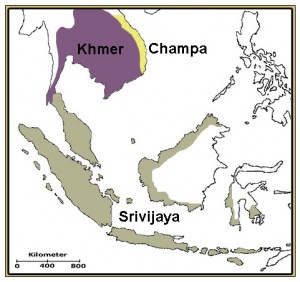
Srivijaya: A Primer - Part 1 by The Southeast Asian Archaeology newsblog Victorious is the king of Srivijaya, whose Sri has its seat warmed by the rays emanating from neighbouring kings, and which was diligently created by Brahma, as if this God has in view only the duration of the famous Dharma. - The Wiang Sa Inscription (Thai Peninsula) dated 775 AD. With a reach spanning from Sumatra and Java to as far north as the Thai peninsula and a reign of some 600 years, it’s remarkable that what is now known as the Srivijaya empire was only unearthed relatively recently. The first hint of a Sumatran-based polity was first alluded to by the eminent French scholar George Coedes 1918, based on inscriptions found in Sumatra and the Malay Peninsula. In this primer, we’ll talk about the Srivijayan empire, the extent of its influence and its eventual fall. The kingdom of Srivijaya, a name which translates to “shining victory”, was a Malay polity centred in Palembang in south Sumatra. At its height, its area of influence included neighbouring Jambi, to the north the kingdoms of the Malay Peninsula: Chitu, Pan-pan, Langkasuka and Kataha, as well as eastwards in Java, where links with the Sailendra dynasty and Srivijaya are implied. The same Sailendra dynasty was responsible for the construction of the massive Buddhist stupa of Borobudur between 780 and 825 AD. Indeed, Srivijaya was considered to be one of the major centres of learning for the Buddhist world. In the 7th century, Yijing, a Buddhist monk who travelled between China and India to copy sacred texts mentioned the high quality of Sanskrit education in Palembang, and recommended that anyone who wanted to go to the university at Nalanda (north India) should stay in Palembang for a year or two to learn “how to behave properly”. Srivijaya’s prominent role in the Buddhist world can be found in several inscriptions around Asia: an inscription in Nalanda dated 850-860 AD described how a temple was built in Nalanda at the request of a king of Srivijaya. In the 11th century, a temple in Guangzhou in China received a donation from Srivijaya to help with the upkeep. The Wiang Sa inscription quoted above recounts how a Srivijayan king ordered the construction of three stupas in Chaiya, also in the Thai peninsula. The Srivijayan empire controlled the important Strait of Melaka (Malacca) which facilitated trade between China and India. With its naval power, the empire managed to suppress piracy along the Malacca strait, making Srivjayan entrepots the port of choice for traders. Despite its apparent hegemony, the empire did not destroy the other non-Srivijayan competitors but used them as secondary sources of maritime trade. Srivijaya’s wide influence in the region was a mixture of diplomacy and conquest, but ultimately operated like a federation of port-city kingdoms. Besides the southern centre of power in Palembang, Arab, Chinese and Indian sources also imply that Srivijaya had a northern power centre, most probably Kataha, what is now known as Kedah on the western side of the Malay peninsula. Kedah is now known for remains of Indian architecture at the Bujang Valley. This was due to the invasion by the Chola kingdom from South India – an invasion which ultimately led to the fall of Srivijaya. How did this happen? Srivijaya: A Primer - Part 2 by The Southeast Asian Archaeology newsblog In the first part of Srivijaya: A Primer, we learnt about the empire’s role in controlling trade between China and India and as a Buddhist centre of learning. In this segment we learn about the fall of this once-great maritime kingdom. In the 11th century, the south Indian Tamil kingdom of Chola launched an attack on Srivijaya, systematically plundering the Srivijayan ports along the Straits of Malacca, and even captured the Srivijayan king in Palembang. The reasons for this change in relations between Srivijaya and the Cholas are unknown, although it is theorised that plunder made up an essential part of the Chola political economy. While it seemed that the Cholas only intended to plunder Srivijaya, they left a lasting presence on Kataha, the remains of which are still visible at the Bujang Valley archaeological museum. The successful sack and plunder of Srivijaya had left it in a severely weakened state that marked the beginning of the end of Srivijaya. Having lost its wealth and prestige from the Chola attack, the port cities of the region started to initiate direct trade with China, shrugging off the exclusive influence Srivijaya once held over them. Towards the end of Srivijaya’s influence, the power centre of Srivijaya began to oscillate between Palembang and neighbouring Jambi, further fragmenting the once-great empire. Other factors included Javanese invasion westwards toward Sumatra in 1275, invading the Malayu kingdoms. Later towards the end of the 13th century, the Thai polities from the north came down the peninsula and conquered the last of the … [Read more...]
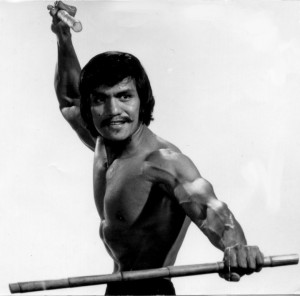
Rolando Pintoy Dantes (June 15, 1944-March 16, 2009) A Filipino martial artist who trained with Remy Presas for over 30 years. He has also trained with other martial arts masters, such as Cacoy Canete and Edgar Sulite. He was deeply loved and respected by the martial arts world! Born in Cotabato, the 5’10” movie actor’s real name was Rolando Tangco Pintoy. His father, Brigadier General Climaco Pintoy, was the Military Zone Commander of the 4th Military Area, which includes Mindanao and the southern islands of Sulu and Palawan. Dantes’ father was his first instructor in art of Arnis de Mano. After his father’s death, Dantes studied Shotokan and Tang Soo do, and earned black belt ranks in both arts, and later he studied Arnis de Mano from Professor Remy Presas and other FMA (Filipino Martial Arts) grandmasters and masters. A dedicated bodybuilder, Dantes won the “Mr. Philippines” title five times: 1969, 1973, 1974, 1976 and 1980. He also placed several times in the “Mr. Universe” contest and took fifth place in the 1970 “Mr. World” contest. In 1980, he placed fifth in the World Games for Bodybuilding, and in 1982 received a Certificate of Merit from the International Federation of Bodybuilders. In the same year, Dantes received the President Marcos Gold Medal Award for Bodybuilding. This extraordinary man was one of the best-known Philippine actors who had leading roles in American films, like the internationally released movie “The Pacific Connection” which featured Nancy Kwan, Guy Madison, Alejandro Rey and Dean Stockwell, and “Delta Force 2: The Colombian Connection” with Chuck Norris. He also starred in dozens of Philippine movies such as “Arnis: The Sticks of Death”, ”Trojan Warrior”, “Tumbador”, “Under the Gun”, “Live by the Fist”, “Tiger Shark”, “Angelfist”, “Uhaw na Dagat”, “Durugin si Totoy Bato”, “Banta ng Kahapon” and several other movies made in Australia, where he later established his residence. Before becoming a movie star, Dantes was a police officer for several years in Manila. It was while majoring in Physical Education in college when he met Professor Presas, the founder of Modern Arnis. His passion for Arnis was rekindled, and Dantes became one of Presas’ top students and closest friend. Presas even choreographed his Arnis moves in most of his movies. After Dantes immigrated to America, he continued his Filipino martial arts training with the late FMA Grandmasters: Antonio Ilustresimo, Leo Gaje, Ben Lima, Johnny Chiuten , Edgar Sulite and others; and with the 88-year old living legend, Grandmaster Cacoy Canete, founder of the Doce Partes Eskrido/Eskrima system of martial arts. With his extensive martial arts and bodybuilding expertise and experience, Dantes was listed in the Philippine Martial Arts Grandmasters Hall of Fame in Florida, Martial Arts Hall of Fane in El Paso, Texas, and the Philippine Bodybuilding Hall of Fame. He held the position of Chairman of the International Affairs of Arnis Philippines and the International Arnis Federation, the officially-recognized governing body for Arnis by the Philippine government. … [Read more...]

Guro Dino Guro Dino Flores – Mandirigma Research Organization Director Guro Dino Flores was born in Honolulu, Hawaii . He has lived in various places including Fiji, Papua New Guinea, Australia as well as Manila and Laguna – Philippines. A glimpse into Guro Dino’s family tree finds a lineage as diverse as the Philippines itself. Ancestors ranging from Katipuneros in Bicol serving under General Simeón Ola y Arboleda the last general to surrender to American forces during the Philippine-American War, “Tulisan” in Luzon who never surrendered, Datus in Tanawan Batangas, Traditional Healers using methods such as Orasyon and Anting-Anting in Laguna, Filipino-Spanish Hacienda owners settling at the foot of Mayon Volcano in the early 1900′s after migrating from the Visayas, World War Two American Colonial Army officers fighting under General Douglas Macarthur in Bataan and Corregidor and surviving the infamous “death march” as well as Globetrotting Modern U.P. Scholars in the 1970′s reluctantly leaving the country to escape Martial Law and the possibility of being “Salvaged”. Guro Dino was first introduced to the concept of “Arnis” and Philippine Warrior history by his father Dr. A. S. Flores in the mid 1970′s. This was done through the oral tradition, Pilipino Komiks and hard to find publications during Martial Law. His first exposure to physical training was in the early 1980′s in Laguna Province, Philippines. Older relatives and neighbors to family ancestral lands of many generations, introduced him in backyard sessions to basic street applications and strategy of the balisong blade during stays in the Philippines. Many of these early instructors had experienced real blade situations with the scars to prove it. The first lessons were avoidance, environmental awareness and proper behavior to avoid conflict. The sad irony is that a member of this early group and a close friend has since passed away after a knife ambush by two attackers due to improper behavior. Guro Dino trained for many years with Grandmaster Conrad A. Manaois in Ninoy Cinco Teros Arnis and Master Henry Bio in Sikaran Arnis in the 1980′s along with his cousins Ariel Flores Mosses and Choy Flores. In the early 1990′s he was accepted as an initial member of Punong Guro Edgar Sulites’ newly forming Backyard Group AKA the Sulite Oriehenal Group. During the constant sparring in the Backyard he evolved from being an aggressive fighter to one who now more calm and precise. His fighting style in the early days of the the Backyard Group earned him the nickname “Aso’ng Gulo” from his fellow peers and was considered Punong Guro Sulites’ favorite backyard fighter due to the clear usage of curriculum during fighting. At the recommendation of Punong Guro Sulite, Guro Dino first visited Master Christopher Ricketts in the Philippines in 1995 and was introduced to his perspective on the Warrior Arts. Since the passing of Punong Guro Sulite, he has continuously train in Kali Ilustrisimo Under Master Christopher Ricketts, who gave Guro Dino permission to teach his method before his passing. Guro Dino was the Lameco representative for Master Ricketts and a member of Bakbakan Philippines sponsored by Master Ricketts. Guro Dino continues his training in Master Ricketts method of training with his two sons, the young Masters Bruce and Guro Brandon Ricketts. Additionally at Master Ricketts suggestion before his passing, Guro Dino also continues his studies in Ilustrisimo under Grandmaster Antonio Diego. Guro Dino additionally had good fortune to experience training in Kali Ilustrisimo with Dodong Sta. Iglesia, Guro Arnold Narzo, Guro Peachie Baron, Master Rey Galang, Master Yuli Romo and Master Tony Diego. He also trained in Kali Ilustrisimo with one of his training partners and fellow Lameco Backyard member Guro Hans Tan, who was certified to teach Kali Ilustrsimo under Master Tony Diego. Additionally Guro Dino trained privately for several years in California and the Philippines with Professor Ireneo L. Olavides in Eskrima De Campo JDC-IO. Guro Dino also cites the importance of his training partners in Lameco SOG and Kapisanang Mandirigma in his growth. After the passing of Punong Guro Edgar Sulite in 1997, certain members of the Lameco Backyard group reformed also became know as Kapisanang Mandirigma. Together the group regularly continued training, sparring, experimenting and seeking the deeper roots of their chosen arts. This group includes Guros Joel Adriatico, Hospecio “Bud” Balani Jr., Mar Elepaño, Choy Flores, Arnold Noche, Gary Quan, Hans Anton Tan and Pantaleon “Mang Leo” Revilles, Jr. (RIP). With frequent visits by Guro Lowell Pueblos, Bong Hebia and honorary member Ariel Flores Mosses. Guro Dino has taught numerous seminars and classes over the years. He has appeared on Television, Instructional Videos, Independent Film and Radio Shows promoting the arts. He has contributed to magazine article for publications such as … [Read more...]
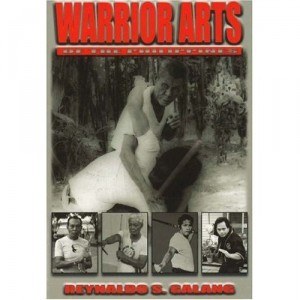
Guro Dino Flores reflects upon his experience training under his teacher Punong Guro Edgar Sulite. Excerpts taken from Master Reynaldo S. Galangs book "Warrior arts of the Philippines", published on April 1, 2005 After much scrutiny by Punong Guro Edgar G. Sulite, Guro Lowell Pueblos and senior members of the Los Angeles Chapter of Lameco Eskrima International, I was finally accepted into the forming backyard group. On the first day of class, my first intimidating task was to fight a senior member - full blast. In my case it was Guro Mar Elepaño. Although it was a scary at first, it was definitely a refreshing rush to release unhindered. I gave a good pounding, but got an even better one back. Regardless of the outcome, I was hooked. What a welcome that was and what a lesson indeed. Lesson # 1: Abundant knowledge of theory and history does not necessarily equate to knowledge of actual application. Punong Guro had a habit of giving you relatively short lessons that would completely change your perception. Just when I would think I knew what was going on, he would initiate upon me an unexpected lesson that would thrust me to another level of understanding. He would never ram knowledge down your throat, or impose his opinions. He preferred to put you through an experience that would support a theory and allow you to come up with a more personalized understanding.>Punong Guro had a love for reading books and learning new things. We were both always reading something we found mutually interesting. It was usually on topics such as martial arts, spiritual, health or Filipino history and culture. So we started doing a book reading exchange. “Little Brown Brother” for “A Spaniard in Aguinaldo's army: The military journal of Telesforo Carrasco y Pérez”, “Filipinos at War” for “Iron Shirt Qi-Gong”, “Jail House Knife Techniques” for “The Fall of Sriwijaya in Malay History” and so on. Punong Guro was an intelligent person and I appreciated the fact that he considered the cerebral and spiritual side of training just as important as the physical part. My favorite memories are of his personal stories, which, to my mind, are real adventures. His love affair with the Warrior Arts of the Philippines. How he traveled throughout the Philippine islands to research the arts. He was the first person to go throughout Luzon, Visays and Mindanao and publish his research in a book, the Masters of Arnis, Kali and Eskrima. This research has influenced much of the literature on the arts that has been released since his own books came out. Many systems became known because of this landmark book and it served as an early guide for people seeking the art in the Philippines. Punong Guro was also an innovator. He introduced the concept of "hand sparring" for accuracy. Assisted by Master Yuli Romo they invented the hand and forearm guard for hand sparring. Sadly I have been seeing copies of thier invention surfacing. Recently a person from another style bragged to me that in their style they do hand sparring for accuracy. He had no clue of it's origins. Through his lessons and the example of how he lived his life, Punong Guro has had a tremendous influence on my own journey. Looking back, I see him now as one who put great energy into the path of balancing the mind, the body and the spirit. He appreciated the highest capabilities of the physical self – while accepting it's limitation. While he expanded his mind with worldly and universal knowledge, he consciously worked on decreasing his ego with humility. By being a person of well-balanced body and mind, it allowed his true self – his spirit and not his ego – to shine a bit more than average person. It was Punong Guro and all my teachers examples that inspired me to use the ancestral knowlege for positive purposes. To give back to the community and make an effort to improve myself along the way. Guro Dino Flores can be contacted for Classes or Seminars at mandirigma.org@gmail.com. … [Read more...]
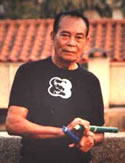
Grandmaster Antonio Ilustrisimo, Courtesy of Bakbakan International and GM Tony Diego Grandmaster Antonio Ilustrisimo (1902 - 1997) originally came from Santa Fe in Bantayan Island. He came from a family that has a very long history of martials and mystical tradition. His cousin, Floro Villabrialle, was the most famous Arnis master of Hawaii. His youngest uncle, Regino Ellustrisimo, was an Arnis master in Stockton, USA. Both men were mentioned in Dan Inosanto's book on Filipino martial arts. However, the most famous of his 4 direct paternal uncles, and the most powerful fighter of the 5 brothers (some say he has more than 7 uncles) was Melecio Ilustrisimo, one of the most famous Kali masters of the Philippines of the early 20th Century, being influential in northern Cebu - Bantayan and Bohol islands. All his forbears were expert warriors and were known to posses strange mystical powers. Grandmaster Ilustrisimo's students, fondly call him "Tatang" which means "grandfather". Tatang learnt Arnis under the tutelage of his father (Isidro Illustrisimo) and uncles (especially the famous Melecio Ilustrisimo) in the old way. There were 3 famous Eskrima families in Cebu at that time:- the Ilustrisimos, the Saavedras, and the Romos. Footwork was one of the first things he had to master. As a tiny boy, he was put on a small table and his teachers would use sticks to beat his legs. He had to learn how to avoid the blows. He was also put on 3 half coconut shells in a triangular pattern and given the same harsh treatment. This footwork is known as Tatlong Bao in the Ilustrisimo family. As a result he has mastered evasion and dodging at an early age. This is a training that Melecio Ilustrisimo himself thoroughly mastered as he was said to have nailed one foot to the ground and challenge all and sundry to defeat him. No one could, and that footwork is called "Walong Apak" (Nail Footwork) in Kalis Ilustrisimo. These skills of evasive footwork have all been mastered by Grandmaster Antonio Illustrisimo. He learnt the solo and double baston, espada daga, daga, bolo (sword), dos manos (a long stick/sword - roughly equivalent to the Samurai's sword) and various "weapons of convenience". In particular, as a speciality, Grandmaster Ilustrisimo is noted for is his expertise in bladed weapons - something which many modern Grandmasters of Arnis can not lay proper claim to since their real practical experience concentrated on the rattan sticks. (Claims by most systems that they can use swords are disputable and only partially true). This expertise as a swordman is not merely from personal experience and practice, but is the legacy of his family art of Ilustrisimo Kali which is a bladed art that stretches so far back in the family line that nobody could remember when it started. As a boy, the young Ilustrisimo had a very tough, stubborn, determined and indominatable spirit. When he heard of a far country called 'America', he decided to go there - at the age of 9 years old! When his parents would not listen to his panderings, he 'took' some family money and a machete, and again, 'took' a small rowing boat and paddled out to the sea to what he thought would be America, not realising how far America really is. He fortunately chance across a ship. The sailors aboard were surprised to see a young boy rowing out in the sea. Out of curiousity, perhaps concern as well, there approached him and asked him where he was going. "I am going to America in this boat!" was the confident answer. The sailors rocked in laughter. They somehow persuaded him to come with them. Of course, he did not get to America. But he did sail to a few ports, still not quite realising that America is still very, very far away.......... At a port, he chance on a family friend who recognised him, but not wishing to betray the high ideals of this young boy, he took him to the south as that friend was a Muslim. There the young boy grew up - strong, determined, proud and skillful in combat as ever. He was adopted into a the royal court as an adopted son of the Sultan of Sulu. (This was Hadji Butu who ascended to become HH Hadji Mohammad Jamalul Kiram II, the Sultan of Sulu) While in the South, he was priviledged to train in the the best of teachers that the royal court could have. He also trained with Pedro Cortes, another very famous master in the Mindanao region, who was used by the government to control the 'Rebelious South'. Pedro Cortes was a close friend a sparring partner of his father Isidro Ilustrisimo. Then one day, he was drinking at a beer house, he got into dispute with another man. The man drew his sword to kill Tatang, but the defty young boy beat him to the draw and, with one stroke of his own barong (Tatang's favourite type of sword), he cut off the enemy's head. The victim was left a headless man running … [Read more...]

A rare look at the Warrior Arts of the Philippines in the Nineteen Fifties. Filmed in black and white in French with English subtitles. View it on the Mandirigma Research Organization Youtube Channel. http://www.youtube.com/watch?v=HZg2i6Yq9rc … [Read more...]
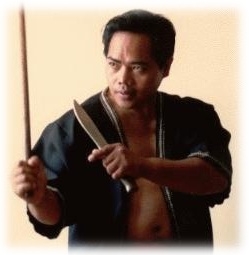
Lameco Eskrima is the system of Filipino martial arts founded by the late Punong Guro Edgar Sulite based on his training and experience with various Philippine Martial Arts masters, with heavy influence from Jose Caballero and Antonio Ilustrisimo. The word Lameco is actually a combination of words which are the three basic ranges of combat involved in the study and practice of Lameco Eskrima - Largo, Medio and Corto (Long, Middle, close). Contents One of the characteristics of Filipino martial arts is the use of weapons from the very beginning of training. Lameco uses Double and single Stick, Double and single Dagger, Stick and Dagger, Sword, Staff, Handkerchief, and Empty Hands. Lameco Eskrima is a synthesis of five major and six minor systems of Eskrima. Lameco training includes drills called Laban Laro (Play Fighting). Laban Laro allows the escrimador to come as close to real combat as possible without injury. It is also designed to get an uncountable number of repetitions in a short period of time. Through his constant efforts for developing new training innovations, Edgar invented unique armor for the hands and forearms that allowed practitioners to safely train more realistically. History At a young age Edgar Sulite's father exposed him to the Filipino Martial Arts, himself being a boxer and Arnisador. Growing up in the Barrios of the Philippines, Edgar witnessed many skirmishes settled blade against blade. Edgar trained with martial arts masters who included Leo Gaje of Pekiti-Tirsia, Jose Cabellero of De Campo Uno-Dos-Tres Orehenal, Jesus Abella of Modern Largos, Antonio Illustrisimo of Kali Illustrisimo and many others. In 1981, he moved to Manila to train under Grandmaster Antonio Ilustrisimo. After relocating to the United States on June 30, 1989. More on Punong Guro Edgart Sulite the founder of Lameco Eskrima at: http://backyardeskrima.com/?cat=11 … [Read more...]
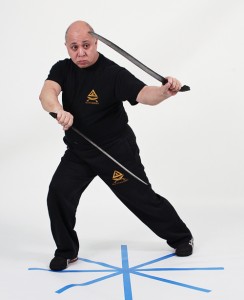
Grandmaster Christopher ’Topher’ Ricketts Interview Research & questions by David Foggie Interviewed by Dino Flores. Answers by Master Ricketts given in Tagalog, Translation by Dino Flores. Interview commenced 12 th February 2006 and conducted over a span of three months by Dino Flores in Los Angeles, California U.S.A. Grandmaster Christopher N. Ricketts or 'Master Topher 'is Chief Instructor of Bakbakan International whose motto is "Matira Matibay" (The Best of the Best). Concerned with training and passing on his knowledge to students rather than collecting accolades and titles, Master Topher's skills and credentials are impeccable and second to none; he is one of the best of the best. A senior disciple of the revered Grandmaster Antonio Ilustrisimo and one of the 5 Pillars of Kali Ilustrisimo, he is the highest ranking living instructor in Lameco Eskrima, having trained personally with Grandmaster Edgar Sulite. With teaching credentials in several martial arts systems including Ngo Cho Kuen (5 Ancestor Fist), Sagasa Filipino Kickboxing as well as being a professional boxing trainer, he has dedicated his life to the martial arts and other fighting systems. With his brother Ronnie Ricketts being a well known and respected action star in Philippine movies, Master Topher has provided his vast experience in the fighting arts to choreograph fight scenes. Through an introduction from my teacher Grandmaster Roland Dantes in 1998, I have been fortunate to benefit from Master Topher's extensive knowledge and experience. Knowing the high regard my instructor, Roland Dantes and many other respected elders of FMA hold Master Topher and having witnessed his immense skills, it was an opportunity not to be missed. When I first observed Master Topher demonstrate Kali Ilustrisimo at his home, I knew that I was in the presence of a genuine master of Kali Ilustrisimo. During our training sessions, the true scope of Master Topher's knowledge became apparent as did his effective use of body mechanics. Under Master Topher's instruction, I was introduced to the principles and techniques which form the foundation and in fact, the nucleus or core of Kali Ilustrisimo. With a sharp eye for perfect form and understanding, Master Topher meticulously dissected each technique and corrected even the minutest nuances until he was satisfied. My time spent training under Master Topher has afforded me the opportunity to see the various aspects of this remarkable martial artist. A remarkable man, he is a fighter, teacher and friend to his students. Martial arts are meant to be about honor, respect, integrity, loyalty and dedication. Master Topher embodies these traits and as such, it is easy to see why Grandmaster Roland Dantes and many other highly respected masters are his friends and respect him. It was with the approval of my teacher, Grandmaster Roland Dantes, I began studying Kali lIustrisimo under Master Topher and as such, I consider him also to be my teacher. More importantly, I consider him to be a respected, loyal and much valued friend. It is my pleasure and honor to present, Grandmaster Christopher 'Topher' Ricketts. (Q) Firstly what is the history and aim of Bakbakan? Bakbakan means something along the lines of a free for all brawl. Bakbakan was founded in 1967 by a group of instructors from various styles of martial arts in the Philippines. Prior to the organization becoming a bastion of martial arts in the Philippines, the main objective of the original members was to elevate their fighting skills through constant full contact sparring. Originally there were only six of us: Ding Binay, Rolly Maximo, Christian Gloria, Eddie Ben Alicante, Rey Vizer and myself. We would meet at my house in San Miguel Village in Makati, where my bedroom was our original gym. (Q) Prior to studying under Grandmaster Antonio Tatang' Ilustrisimo did you have much exposure to FMA? Prior to Kali Ilustrisimo my training included the Rapillon style of Mang Sciano Cleope in 1967. He was a well-known eskrimador from Quezon province of the Philippines and I was a training partner of his son, Edgar Cleope. For a little while I trained with Jimmy Gales in his arnis style which he called Sphinx. He used the centro baston (central grip) and susi (inverted grip) styles of wielding a stick. I also trained with Doc Lengson in the Arnis Federation of the Philippines style from 1973-1978. (Q) Grandmaster Ilustrsimo is celebrated as one of the greatest masters of FMA. How did you come to know of Tatang and how did you come to be accepted as his student? I was introduced to Tatang by my good friend Alex Co, a driving force in the Philippine martial arts world. It was the same time that I met Edgar Sulite, Yuli Romo and Tony Diego. When we met for some reason the old man took a liking to me and thus I was accepted as one of his students. (Q) You were exposed to and had seen other systems of arnis. Why did you decide … [Read more...]
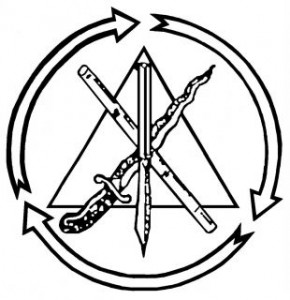
Lameco SOG - Kapisanang Mandirigma The Los Angeles – Historic Filipinotown Chapter of Lameco SOG - Kapisanang Mandirigma includes Guros Joel Adriatico, Hospecio "Bud" Balani Jr., Mar Elepaño, Choy Flores, Dino Flores, Arnold A. Noche, Gary Quan and Hans Anton Tan . It is also this core group that came up with the term “SOG” with the guidance and approval of the two highest-ranking Lameco Eskrima International members, Master Christopher N. Ricketts (RIP) and Master Reynaldo S. Galang. We are still in touch with the other Lameco SOG members (who are also very busy heading their own organizations) with whom we occasionally get together with to collaborate or socialize. The majority of us who banded together after our teacher's death continue to do so since 1997. When Punong Guro passed away, the members unified to keep his teachings and vision alive in ways besides the commercial route. Hence, we began volunteering / teaching a youth program in the Los Angeles Historic Filipinotown area. The program, which started in 1999, teaches Lameco Eskrima, Filipino Martial Arts, Philippine Culture and History as a diversion for ‘at risk youths’ from the temptations of gangs and drugs. Historic Filipinotown , located in Los Angeles' Rampart District, is notorious for being among the highest in gang, murder and drug activity in the country since the 1960's. In as much so, that Hollywood has portrayed it in television shows such as “Adam-12” and most recently in “The Shield” , as well as in feature films like “Training Day". Even the video game, "Grand Theft Auto: San Andreas", contains a story-line reminiscent of the Rampart Police Scandal of the 1990's. It's notoriety is also mentioned in the acclaimed literary works such as Charles Bukowskis' “Ham on Rye” and Carlos Bulosan’s “America is in the Heart”. The initial youth program has expanded into several other nonprofit agencies to include children, adults and seniors.* We even picked up a few awards along the way. Since then we have been involved in many aspects of the Filipino volunteer / cultural community that included being one of only two cultural groups to usher in the First Official "Filipinotown" in America– televised inside the iconic Los Angeles City Hall. Other activities include lecturing at the Filipino American National Historical Society (FANHS) Conferences and a number of prestigious universities as well and doing various newspaper, radio and television interviews in the U.S. and Philippines. To avoid typical martial arts politics, Lameco SOG members teach these Lameco Eskrima-based programs under different organizations. This has allowed us to focus on one of Punong Guro’s visions – to promote the Arts with honor and integrity. Punong Guro was passionate about his culture as a whole. Since Punong Guro Sulite's passing the group has continued to train together and have trained a second generation of students in the Lameco SOG method. Given the nature of our neighborhood, a number of these students have used their lessons for self-preservation with actual knife, stick and even gun situations. We have been teaching these students since they were teens. They are now adults and are now assisting us in teaching the next generation. … [Read more...]
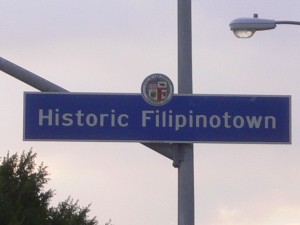
Kali Klub Kali Klub, an award-winning project of Kapisanang Mandirigma, initially started as a positive diversion against drugs and gangs for youths in the Temple-Beverly corridor, now known as Historic Filipinotown. It is; a collaboration with several non- profit agencies in the area such as FilAm Arts, SIPA and PWC. Now entering their 9th year, they have expanded to teaching Children (ages 5-12), Youths (ages 13-17), Adults (ages 18 & over) and Elders (ages 40 & Over) the Warrior Arts of the Philippines in a non-commercial, non-political environment where art, culture and heritage are integrated into their curriculum. Presentations include the dedication of Historic Filipinotown at the Los Angeles City Hall and a lecture/demo at the Filipino Historical Society Conference at Loyola University. Kali Klub sa FilAm ARTS - www.filamarts.org The Association for the Advancement of Filipino American Arts & Culture ("FilAm ARTS") was founded in 1999 but has consistently delivered the annual presentation of the Festival of Philippine Arts & Culture (FPAC) since their early beginnings in 1992 and has now added two other programs: the California-statewide Pilipino Artists Network (PAN) and the Eskuwela Kultura Neighborhood Cultural School. Kali Klub sa FilAm ARTS, established in 2004, is a joint project between Kapisanang Mandirigma and the Association for the Advancement of Filipino American Arts & Culture (FilAm ARTS) under their community-based nonprofit 501(c)(3) status. Kali Klub sa SIPA - www.esipa.org Founded in 1972, Search to Involve Pilipino Americans ("SIPA") has long established itself as a key service provider among the low-income and underserved multi- ethnic youth and families in the Temple Beverly corridor and the Pilipino American community of Los Angeles County. Their mission is to enhance the quality of life of the Pilipino American community by: Supporting youth development and leadership; Providing family programs, health and human services and affordable housing; Facilitation of collaborative actions within multi-ethnic communities. Kali Klub sa SIPA, established in 1999, is a joint project between Kapisanang Mandirigma and Search to Involve Pilipino Americans (SIPA) under their community- based nonprofit 501(c)(3) status. Kali Klub sa PWC - www.pwcsc.org The Pilipino Workers' Center ("PWC") was founded in 1997 on the idea that all workers have a right to safe working conditions, living wages, a decent standard of living and quality of life. Their mission is to organize Filipino Workers to collectively address our needs and issues both in the work place and in the community. Kali Klub sa PWC, established in 2003, is a joint project between Kapisanang Mandirigma and Pilipino Workers' Center (PWC) under their community-based nonprofit 501(c)(3) status. … [Read more...]

Mandirigma Research Organization/Mandirigma.org, a project of Kapisanang Mandirigma, is a research organization dedicated to cultural research. Their focus includes preserving and promoting the Warrior Arts of the Philippines commonly known as Kali, Eskrima and Arnis. The Warrior Arts is one of the most important aspects of any society because its very nature is to defend and preserve the culture it originated from. Thus, mandirigma.org is also involved in researching culture in issues from ancient to current. The primary objective of mandirigma.org is to do its part in keeping alive ancient knowledge and give honor to the sacrifices made by previous generations. Using both traditional and modern methods in its work, mandirigma.org has organized, collaborated with and participated in classes, conferences, demonstrations, festivals, lectures, seminars and workshops with prominent college and community organizations. Aside from their hands-on approach, mandirigma.org utilizes multimedia technologies such as audio, desktop, video and web to reach people across the globe. Researching since the 1970's, mandirigma.org believes in being actively involved in giving back to the community. They have collaborated with and volunteered in various non-profit agencies. They have also arranged fundraisers in order to assist causes for indigenous tribal groups and organizations dedicated to cultural preservation in the Philippines. Mandirigma.org believes that this expansive pursuit is at its best a collaborative effort. This has allowed mandirigma.org to meet and work with many fine individuals and organizations throughout the Philippines, the United States and the world. mandirigma.org welcomes all with an open and positive mind to participate and join them on this never-ending cultural adventure. This humble site is dedicated to honoring the sacrifices of Filipino Warriors throughout the many generations that have come before us. Maraming Salamat! … [Read more...]
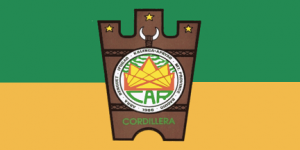
Cordillera Administrative Region The Cordillera Administrative Region (CAR) of the Philippines is a land-locked region consists of the provinces of Abra, Benguet, Ifugao, Kalinga, Mountain Province and Apayao. Baguio City is the regional center. The Cordillera region encompasses most of the areas within the Cordillera Central mountain range of Luzon, the largest range in the country. This region is home to numerous indigenous tribes collectively called the Igorot. The Cordillera Administrative Region is the only landlocked region in the country. Source: wikipilipinas.org Cordillera Administrative Region Flag Cordillera Administrative Region Map Cordillera Administrative Provinces/Seals … [Read more...]
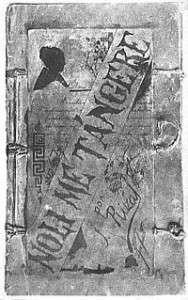
Noli Me Tangere is a novel by Filipino polymath José Rizal and first published in 1887 in Berlin, Germany. Early English translations used titles like An Eagle Flight and The Social Cancer, but more recent translations have been published using the original Latin title. Though originally written in Spanish, it is more commonly published and read in the Philippines in either English or Filipino. Together with its sequel (El Filibusterismo), the reading of Noli is obligatory for high school students all throughout the archipelago. References for the novel Jose Rizal, a Filipino nationalist and medical doctor, conceived the idea of writing a novel that would expose the ills of Philippine society after reading Harriet Beecher Stowe's Uncle Tom's Cabin. He preferred that the prospective novel express the way Filipino culture was backward, anti-progress, anti-intellectual, and not conducive to the ideas of the Age of Enlightenment. He was then a student of medicine in the Universidad Central de Madrid. In a reunion of Filipinos at the house of his friend Pedro A. Paterno in Madrid on 2 January 1884, Rizal proposed the writing of a novel about the Philippines written by a group of Filipinos. His proposal was unanimously approved by the Filipinos present at the party, among whom were Pedro, Maximino and Antonio Paterno, Graciano López Jaena, Evaristo Aguirre, Eduardo de Lete, Julio Llorente and Valentin Ventura. However, this project did not materialize. The people who agreed to help Rizal with the novel did not write anything. Initially, the novel was planned to cover and describe all phases of Filipino life, but almost everybody wanted to write about women. Rizal even saw his companions spend more time gambling and flirting with Spanish women. Because of this, he pulled out of the plan of co-writing with others and decided to draft the novel alone. Plot Having completed his studies in Europe, young Juan Crisóstomo Ibarra y Magsalin came back to the Philippines after a 7-year absence. In his honor, Don Santiago de los Santos, a family friend commonly known as Captain Tiago, threw a get-together party, which was attended by friars and other prominent figures. One of the guests, former San Diego curate Fray Dámaso Vardolagas belittled and slandered Ibarra. Ibarra brushed off the insults and took no offense; he instead politely excused himself and left the party because of an allegedly important task. The next day, Ibarra visits María Clara, his betrothed, the beautiful daughter of Captain Tiago and affluent resident of Binondo. Their long-standing love was clearly manifested in this meeting, and María Clara cannot help but reread the letters her sweetheart had written her before he went to Europe. Before Ibarra left for San Diego, Lieutenant Guevara, a Civil Guard, reveals to him the incidents preceding the death of his father, Don Rafael Ibarra, a rich hacendero of the town. According to Guevara, Don Rafael was unjustly accused of being a heretic, in addition to being a subservient — an allegation brought forth by Dámaso because of Don Rafael's non-participation in the Sacraments, such as Confession and Mass. Dámaso's animosity against Ibarra's father is aggravated by another incident when Don Rafael helped out on a fight between a tax collector and a child fighting, and the former's death was blamed on him, although it was not deliberate. Suddenly, all of those who thought ill of him surfaced with additional complaints. He was imprisoned, and just when the matter was almost settled, he died of sickness in jail. Still not content with what he had done, Dámaso arranged for Don Rafael's corpse to be dug up from the Catholic church and brought to a Chinese cemetery, because he thought it inappropriate to allow a heretic a Catholic burial ground. Unfortunately, it was raining and because of the bothersome weight of the body, the undertakers decide to throw the corpse into a nearby lake. Revenge was not in Ibarra's plans, instead he carried through his father's plan of putting up a school, since he believed that education would pave the way to his country's progress (all over the novel the author refers to both Spain and the Philippines as two different countries, which form part of a same nation or family, being Spain the mother and the Philippines the daughter). During the inauguration of the school, Ibarra would have been killed in a sabotage had Elías — a mysterious man who had warned Ibarra earlier of a plot to assassinate him — not saved him. Instead the hired killer met an unfortunate incident and died. The sequence of events proved to be too traumatic for María Clara who got seriously ill but was luckily cured by the medicine Ibarra sent. After the inauguration, Ibarra hosted a luncheon during which Dámaso, gate-crashing the luncheon, again insulted him. Ibarra ignored the priest's insolence, but when the latter slandered the memory of his dead father, he was no longer … [Read more...]
The Butuan Silver Strip by Hector Santos © 1996 by Hector Santos All rights reserved. http://www.bibingka.com/dahon/mystery/silver.htm The Butuan area has been a rich source of material from ancient Philippines for both treasure hunters and trained archaeologists. So it was in the mid-seventies when a team from the National Museum of the Philippines excavating a site was told that a strip of metal with some kind of writing had been found by a treasure hunter. Fortunately, the artifact was already in the hands of Proceso Gonzales, the city engineer of Butuan. He understood the importance of the find and took possession of it. Butuan Silver Strip The metal strip was found inside a wooden coffin by treasure hunters who were looking for ceramic and gold objects that could be sold for high prices to private collectors. According to Dr. Jesus Peralta, similar burials in wooden coffins in the vicinity of Butuan had previously been found to contain human remains with skulls that have been artificially deformed. This practice was apparently limited to Southern Philippines, the beauty standard for such head shapes never finding its way to Luzon. Ceramics and ornaments were usually placed in the coffins, the ceramic pieces dating from the 14th and 15th centuries. If the metal strip was found within a typical coffin, it would have logically come from the same era. While the metal piece could have come from foreign shores, the safest and most conservative position one can take is that an artifact belongs in the place where it was found unless it can be proven otherwise. The letters were cut into the piece of metal with a knife. The difficulty of making curved lines on metal with a knife is apparent in the clumsy shapes of the letters. The strip measures 17.8 x 1.3 cm. Peralta reports that the late Dr. Boechari of Indonesia identified the script as "similar to a Javanese script that had been in use from the 12th to the 15th century" (late Kavi?). At this time, the writing has not been convincingly deciphered nor have the letters in the strip been identified. A successful transliteration would not guarantee a decipherment because of the brevity of the sample, though. A companion piece with similar writing was also reportedly found in the same coffin. However, the owner refused to part with it because he believed it held the key to the location of a treasure hoard. How he hoped to use that piece to locate the treasure without translating the message is not known. Neither do we know why it is that piece and not the one he gave up that holds the secret. That second piece will play an important role in solving the mystery of the Butuan silver strip. Additional Reading 1. Peralta, Jesus T. "The Butuan palaeograph: ethnographic implications of an ancient script," in Archipelago 6:A-55 (1979): 31-33. 2. Santos, Hector. "Artifacts with writing revisited" in Sulat sa Tansô, 2:5 (June 1995), 1. 3. -----. "Other pre-Hispanic writing artifacts" in Sulat sa Tansô, 2:2 (February 1995), 1. 4. -----. "The Butuan Silver Strip" in Sulat sa Tansô, 2:2 (February 1995), 3. Butuan Silver Strip Deciphered? by Hector Santos © 1996 by Hector Santos All rights reserved. "Butuan paleograph deciphered using Eskaya script" by Jes Tirol (in UB Update) attempts to show that a "translation" of the Butuan silver strip had been done by using the Eskaya script. A clipping of this article was provided by Antoon Postma of Mindoro, who in turn obtained it from the late William Henry Scott of Mountain Province. This proves that "real" scholars do share information. Eskaya is a secret organization based on the island of Bohol. Its members claim that their ancestors arrived on the island in 677 A.D. from Sumatra. Tirol writes: One of the books of the Eskaya of Bohol is entitled Unang Katawhan Sa Bohol (First People of Bohol). According to the book, Dangko and his 12 children of 11 boys and one girl and his men arrived in Bohol in 677 A.D. They started from Sumatra-Manselis which is the western side of Sumatra, Indonesia on board a "Lutsa." (See: "Lorcha," Webster Int'l Dictionary, Unabridged.) The only daughter of Dangko got married to a chieftain of Butuan. From that time on until the present, the inner psyche of an Eskaya is geared towards Butuan. Since the center of Eskaya culture is now at Biyabas, Guindulman, Bohol, the migrant Eskaya in Butuan maintain close contact with the Eskaya of Bohol. Further on, Tirol continues: The Butuan Kingdom is no more. Its literature and writings are gone, except for the Butuan paleograph. But the Eskaya of Bohol is still existing with their system of writing. It is logographic system not alphabetic, and therefore older than the Malayan-Bisayan recorded by the Spanish writers. The Eskaya scrupulously transmitted their system of writing and literature by conducting classes. At present, classes are conducted every Saturday and Sunday. The Eskaya were … [Read more...]
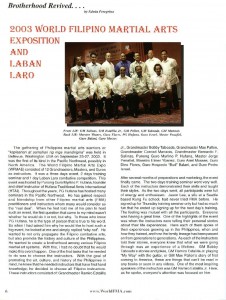
World Filipino Martial Arts Expo 2003, Bellevue, Washington … [Read more...]
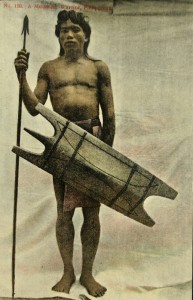
Inhabiting the rugged terrain of the Cordillera Region of Northern Philippines are six ethno-linguistic tribes known as the Ibaloy, Kankana-ey, Ifugao, Kalinga, Apayao/Isneg, and the Bontoc. They are referred to by a generic term, Igorot, a word coined from the root word, "golot" meaning mountain. Unlike most of the Philippines, which were ruled by Spaniards for about four hundred years, the Cordillera region was generally unfazed by Spanish colonization. The Igorot tribes are held together by their common socio-cultural traits as well as their geographic proximity to each other. During pre-Christian Cordillera (and to some extent, the present), the six different tribes shared similar religious beliefs, generally nature-related, and they make proprietary offerings to "anitos" (spirits) as well as to household gods. Cordillera ethnic groups The Igorots are grouped into six ethno-linguistic groups, the Bontoc, Ibaloi, Isneg (or Apayao), Kalinga, and the Kankanaey. Below are brief descriptions of the Igorot ethnic groups The Bontoc A Bontoc warrior (c. 1908) The Bontocs (alternatively spelled Bontok) live on the banks of the Chico River in the Central Mountain Province. They speak the Bontoc language. They formerly practiced head-hunting and had distinctive body tatoos. The Bontoc describe three types of tattoos: The chak-lag′, the tattooed chest of the head taker; pong′-o, the tattooed arms of men and women; and fa′-tĕk, for all other tattoos of both sexes. Women were tattooed on the arms only. In the past, the Bontoc engaged in none of the usual pastimes or games of chance practiced in other areas of the country, but did perform a circular rhythmic dance acting out certain aspects of the hunt, always accompanied by the gang′-sa or bronze gong. There was no singing or talking during the dance drama, but the women took part, usually outside the circumference. It was a serious but pleasurable event for all concerned, including the children.[4] Present-day Bontocs are a peaceful agricultural people who have, by choice, retained most of their traditional culture despite frequent contacts with other groups. The pre-Christian Bontoc belief system centers on a hierarchy of spirits, the highest being a supreme deity called Lumawig. Lumawig personifies the forces of nature and is the legendary creator, friend, and teacher of the Bontoc. A hereditary class of priests hold various monthly ceremonies for this deity for their crops, the weather, and for healing. The Bontoc also believe in the "anito"—spirits of the dead who must be consulted before anything important is done. Ancestral anitos are invited to family feasts when a death occurs to ensure the well-being of the deceased's soul.This is by offering some small amount of food to show that they are invited and not forgotten. The Bontoc social structure used to be centered around village wards ("ato") containing about 14 to 50 homes. Traditionally, young men and women lived in dormitories and ate meals with their families. This gradually changed with the advent of Christianity. In general, however, it can be said that all Bontocs are very aware of their own way of life and are not overly eager to change. The Ibaloi The Ibaloi (also Ibaloy and Nabaloi) are one of the indigenous peoples of the Philippines who live mostly in the southern part of Benguet, located in the Cordillera of northern Luzon. The Ibaloi people were traditionally an agrarian society. Many of the Ibaloi people continue with their agriculture and rice cultivation. The Ibaloi language belongs to the Malayo-Polynesian branch of the Austronesian languages family. The Ibaloi language is closely related to the Pangasinan language, primarily spoken in the province of Pangasinan, located southwest of Benguet. Baguio City, the major city of the Cordillera, dubbed the "Summer Capital of the Philippines," is located in southern Benguet. The Ibaloi' major feast is the Pesshet, a public feast mainly sponsored by people of prestige and wealth. The Pesshet feast can last for weeks and involves the butchering and sacrifice of dozens of animals. One of the more popular dances of the Ibaloi is the Bendiyan Dance, participated in by hundreds of male and female dancers. The Itneg The Isneg (or Apayao) inhabit the banks of the Apayao River and its tributaries in Northern Luzon. Like most erstwhile headhunters, they are slash-and-burn farmers who have recently, under the influence of their neighbors, begun to practice wet-rice agriculture. As a dry rice farmer, the male head of a household annually clears a fresh section of tropical forest where his wife will plant and harvest their rice. Itneg women also cook the meals, gather wild vegetables and weave bamboo mats and baskets, while the men cut timber, build houses and take extended hunting and fishing trips. Often when a wild pig or deer is killed, its meat is skewered on bamboo and distributed to neighbors and … [Read more...]
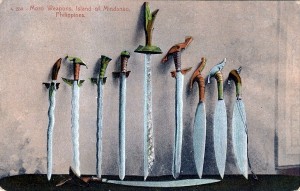
The Moro Kris The kris is the most famous Moro weapon. Variations are found in every Moro tribe and it was a key symbol of a man’s status and rank in society as well as being a powerful talisman. Kris blades are wide at the base, double-edged, and can be waved, half-waved half-straight, or straight (straight blades were more practical in combat). Older kris had fewer waves and the waves were deeper and wider. Over time the waves became shallower, tighter, and more numerous and therefore required greater skill to prevent the blade bouncing off or being stuck in an enemy’s body. The higher number of waves meant the more potent the kris was in talismanic power. Sometimes engravings (often filled in with brass or silver inlay) are found on the blade in plant motifs (vines, foliage, etc.) or Arabic script. Many kris blades are forged with fullers. Moro kris are cutting and slashing swords versus the stabbing keris of the Malay and Indonesians. Kris range from 45 to 65 centimeters (18 to 26 inches) in length. Older kris before the 19th century tended to be smaller in size. Laminated steel patterns are sometimes evident. Opposite the hook like fretwork on the guard of the blade is a cavity in the form of an elephant, eagle, or mouth of a naga (a mythical snake). Hilts of krises are either straight or slightly curved. Commonly the pommel is in the form of a horse hoof, or a stylized cockatoo head with beak and crest. Usually the pommel is made of hardwood burl with the handle being wrapped in lacquered fiber. Upper-class kris pommels are often made of ivory, silver, brass, or other exotic materials with handles wrapped in chased bands of silver or swassa (copper-gold alloy) or braided wire. Large extravagant cockatoo pommels appeared toward the end of the 19th century and are called junggayan. Pommels before the 19th century were very small. Moro kris scabbards were made of wide grain native hardwoods like mahogany, teak, and narra, lashed together with rattan or metal strips. Sometimes the crosspiece is separate from the bottom, but more often they are carved together. Around the mid-20th century mother-of-pearl was introduced to scabbard work and kris pommels. Scabbards of the nobility are bound with bands of plain or chased silver, brass, or swassa instead of rattan bindings. Some nobility scabbards even have crosspieces made of ivory or horn. ----- There are two types of kris used by the Moros of the Philippines. Kalis is the name used by the Tausugs, Samals and Yakans. In the Mindanao it is called Sundang and is used by the Maranaos, Maguindanos and others. The Moro kris belongs to larger family of kris found in South East Asia: Indonesia, Borneo, Malaysia and part of Thailand. Its origin is mostly likely East Java near Yogya and Solo. The Moro kris has the most varied design and style amongst the bladed weapons found in the Philippines. The Moro Kris evolved from use in combat. The double edge blade is an advantage where there are numerous opponents, the blade can be used to cut in an upward stroke. A single edge blade in contrast , needs to be turned in the opposite direction to do the same cut. The Moro kris is highly regarded by the people of Mindanao and Sulu. It is used as a symbol of authority and prestige. Kris From Wikipedia The kris or keris is an asymmetrical dagger indigenous to Indonesia, Malaysia, Singapore, Thailand and Brunei. It is known as kalis in the southern Philippines. The kris is famous for its distinctive wavy blade, but many have straight blades as well. Both a weapon and spiritual object, kris are often considered to have an essence or presence, with some blades possessing good luck and others possessing bad. In 2005, UNESCO gave the title Masterpiece of the Oral and Intangible Heritage of Humanity to the kris of Indonesia. In return, UNESCO urged Indonesia to preserve their heritage Etymology The origin of the word kris derived from the old Javanese term ngiris which means to stab, wedge or sliver. "Kris" is the more frequently-used spelling in the West, but "keris" is more popular in the dagger's native lands,[2] as exemplified by the late Bambang Harsrinuksmo's popular book entitled Ensiklopedi Keris (Keris Encyclopedia). Two notable exceptions are the Philippines, where it is usually called kalis or kris, and Thailand where it is always spelled and pronounced as kris. Other spellings used by European colonists include "cryse", "crise", "criss", "kriss" and "creese". Origins Kris depicted on Borobudur bas-relief. Kris display Kris history is generally traced through the study of carvings and bas-relief panels found in Southeast Asia. It is widely believed by archaeologists that the earliest kris prototype can be traced to Dong Son in Vietnam circa 300 BC. From there, the design would have been brought into present-day Malaysia by Cham migrants who made their way into the Malay Peninsula twenty centuries ago. Another theory is that the … [Read more...]
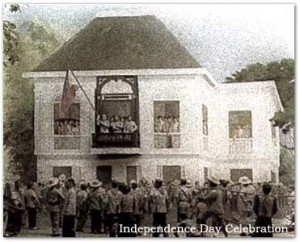
June 12 as Independence Day by Diosdado Macapagal Former President of the Philippines "A nation is born into freedom on the day when such a people, moulded into a nation by a process of cultural evolution and sense of oneness born of common struggle and suffering, announces to the world that it asserts its natural right to liberty and is ready to defend it with blood, life, and honor." The promotion of a healthy nationalism is part of the responsibility of the leaders of newly independent nations. After they lay the foundation for economic development, they promote nationalism and spur the search for national identity. This we can do by honoring our distinguished forebears and notable periods in our history. A step we took in this direction was to change the date for the commemoration of Philippine Independence day. When I was a congressman, I formed the opinion that July 4 was not the proper independence day for Filipinos and should be changed to June 12-- the date General Emilio Aguinaldo proclaimed the independence of the Filipinos in Kawit, Cavite, in 1898. Having served in the foreign service, I noted that the celebration of a common independence day with the United States on July 4 caused considerable inconvenience. The American celebration dwarfed that of the Philippines. As if to compound the irony, July 4 seemed tantamount to the celebration of Philippine subjection to and dependence on the United States which served to perpetuate unpleasant memories. I felt, too, that July 4 was not inspiring enough for the Filipino youth since it recalled mostly the peaceful independence missions to the United States. The celebration of independence day on June 12, on the other hand, would be a greater inspiration to the youth who would consequently recall the heroes of the revolution against Spain and their acts of sublime heroism and martyrdom. These acts compare favorably with those of the heroes of other nations. In checking the reaction to my plan to shift independence day to June 12, I found that there was virtual unanimity on the desirability of transferring the celebration from July 4. Likewise, there was a preponderant view for choosing June 12 as the proper day. A few suggested January 21, the opening day of the Malolos Congress in 1899, or January 23, when the Malolos Congress, ratifying the independence proclamation of June 12, established a republican system of government. The reason for this view was that the government temporarily by Aguinaldo when he proclaimed independence on June 12 was a dictatorship. There was no difficulty in adhering to June 12, however, because although Aguinaldo Government was a dictatorship in view of the military operations he was then leading, he led in converting it into a republican Government in the Malolos Congress. Moreover, the celebration of independence refers to its proclamation rather than to the final establishment of the government. In the case of America, when independence was proclaimed on July 4, the American Government was still a confederation and it was much later when it finally became a federal government. The historical fact was that the Filipinos proclaimed their independence from foreign rule on June 12. Even the national anthem and the Filipino flag which are essential features in the birth of a nation were played and displayed respectively at the independence proclamation in Kawit. When I became President, I knew that this was the opportunity to take action on what had been in my mind since entering public life. The specific question was when to make the change. The opportunity came when the US House of Representatives rejected the $73 million additional war payment bill on May 9, 1962. There was indignation among the Filipinos. There was a loss of American good will in the Philippines, although this was restored later by the reconsideration of the action of the US lower chamber. At this time, a state visit in the United States had been scheduled for Mrs. Macapagal and me on the initiative and invitation of President John F. Kennedy. Unable to resist the pressure of public opinion, I was constrained to obtain the agreement of Kennedy to defer the state visit for another time. To postpone the state visit, I wrote a letter on May 14, 1962, to Kennedy, which read in part as follows: The feeling of resentment among our people and the attitude of the US Congress negate the atmosphere of good will upon which my state visit to your country was predicated. Our people would never understand how, in the circumstances now obtaining, I could go to the United States and in all honesty affirm that I bear their message of good will. It is with deep regret theredore that I am constrained to ask you to agree to the postponement of my visit to a more auspicious time. On May 28, 1962, Kennedy wrote me explaining the situation on the war damage bill. His letter stated: In the meantime, I must respect your decision that … [Read more...]
This post is password protected. To view it please enter your password below: Password: … [Read more...]

This post is password protected. To view it please enter your password below: Password: … [Read more...]
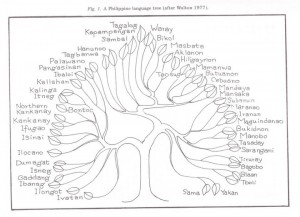
"PHILIPPINE LANGUAGE TREE", William Henry Scott (1984) … [Read more...]
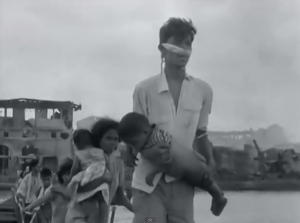
http://youtu.be/RYlEC94XgGU The Battle of Manila - Starts with discussion from 2 Vets memories of the WW2 Japanese invasion and internment of civilians to the military incursion to rescue the civilian prisoners at Santo Tomas and Battle of Corregidor. Battle scenes in Philippines, views of rescued US civilians, street fighting in Manila at Intramuros, bridges destroyed. Destruction of buildings from cannon fire. Japanese were told 'hold Manila or burn it' so it burned. They won by taking Intramuros. The surviving Filipinos from Intramuros did a mass exodus across the river. MacArthur then returned to Manila. … [Read more...]

Sticks of Death (Arnis: The Sticks of Death) This Filipino Martial Arts action film features Roland Dantes. Dantes plays Johnny Guerrero, a man who masters the ancient art of arnis with the help of his grandfather to get revenge on a group of crooks who attempted to beat him to death. Using two deadly sticks, slingshots, poisonous darts and more, Johnny also seeks to bring down an international drug ring and fights at a renowned arnis tournament alongside an Interpol agent. Director: Ave C. Caparas Release Date: 1984 Cast: Roland Dantes, Rosemarie Gil, Veronica Jones, Anita Linda, Mario Montenegro, Rusty Santos … [Read more...]
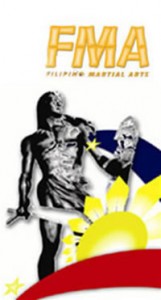
Kapisanang Mandirigma founders Guro Ariel Flores Mosses, Guro Arnold Noche, Guro Bud Balani and Guro Dino Flores mentioned in the Virtual Filipino Martial Arts Museum's "Top 200 Living Guro's" List Exerpt from: http://www.filipinomartialartsmuseum.com/index.htm Welcome to the Filipino Martial Arts Museum, the virtual museum and repository of knowledge of Filipino Martial Arts (FMA) systems, styles, masters, history, literature and virtual artifacts. The writing ranges from incisive to light-hearted to even controversial, and the literary and virtual exhibits encompass all aspects of Filipino martial arts systems and disciplines including arnis, kali, eskrima, dumog, buno, hilot and other indigenous arts of the Philippines. Authors are well-known experts in their fields as well as volunteer writers. Article submissions are encouraged. The authors of these articles have consented to have their articles reprinted and republished in whole or in part, as long as the author’s name, website reference address and this website are acknowledged. I would like this site to become the most comprehensive online reader-written encyclopedia on FMA. It is meant to be a contemporary or living as well as an archival museum. Send your submissions for The Top 200 Living Masters, The Top 100 FMA Schools and other FMA Museum Who’s Who series, and then see your submissions published online. We also accept original articles and online book publications. http://www.filipinomartialartsmuseum.com/index.htm http://www.filipinomartialartsmuseum.com/FMA_masters-systems-schools/FMAguros-living-list.html 1 Dino Flores Lameco Los Angeles, CA, USA 2 Hospecio Balani Lameco Los Angeles, CA, USA 3 David Gould Lameco 4 Leonard Trigg Lameco 5 Arnold Noche Lameco Los Angeles, CA, USA 6 John Jacobo Bakbakan Maryland, USA 7 Roger Agbulos Lameco North Hills, CA, USA 8 Marc Denny Dog Brothers CA, USA 9 Eric Knauss Dog Brothers CA, USA 10 Tim Hartman Modern Arnis USA 11 Kelly Worden Modern Arnis WA, USA 12 Myrlino Hufana Modern Arnis WA, USA 13 Jeffrey Delaney Modern Arnis Canada 14 Randi Schea Modern Arnis 15 Jay de Leon Modern Arnis, Los Angeles, CA, USA 16 Alvis Solis Seneres Arnis TX, USA 17 Ron Balicki Inosanto Kali Los Angeles, CA, USA 18 Diana Balicki Inosanto Kali Los Angeles, CA, USA 19 Ramon Rubia San Miguel Eskrima CA, USA 20 Mel Lopez Villabrille-Largusa 21 Greg Alland Dekiti-Tirsia-Siradas 22 Mary Ann Presas Modern Arnis San Pablo, CA, USA 23 Demetrio Presas Modern Arnis San Pablo, CA, USA 24 Remy Presas, Jr. Modern Arnis San Pablo, CA, USA 25 Tom Bolden Modern Arnis NY, USA 26 Jerome Barber Modern Arnis NY, USA 27 Percival "Val" Pableo Doce Pares 28 Graciella Casillas CA, USA 29 Raffy Pambuan Pambuan Tulisan Arnis FL, USA 30 Steven Dowd Arnis Balite Fallon, NV, USA 31 Hock Hochheim Modern Arnis, Kombatan TX, USA 32 Jorge Penafiel Balintawak Cincinatti, OH, USA 33 Larry Alcuizar Doce Pares Los Angeles, CA, USA 34 Felix Valencia Lameco Santa Barbara, CA, USA 35 Anthony Davis Cabales Serrada CA, USA 36 Sultan Uddin Cabales Serrada CA, USA 37 Darren Tibbon Cabales Serrada CA, USA 38 Jason Inay Inayan Eskrima San Jose, CA, USA 39 Jena Inay Inayan Eskrima San Jose, CA, USA 40 Ray Dionaldo Sayoc Kali FL, USA 41 Edwin Mosqueda Doce Pares 42 Nate Defensor Doce Pares Chicago, IL, USA 43 Conrado Manaois Manaois Eskrima Los Angeles, CA, USA 44 Dan Anderson Modern Arnis WA, USA 45 Rocky Pasiwk Modern Arnis 46 Ron Harris Original Filipino Tapado New Orleans, LA, USA 47 Tim Waid Pekiti-Tirsia TX, USA 48 Leslie Buck Pekiti-Tirsia TX, USA 49 Erwin Ballarta Pekiti-Tirsia TX, USA 50 Gaudencia Ruby Comjuka TX, USA 51 Phil Rapagna Lameco, Inosanto Kali Los Angeles, CA, USA 52 Victor Gendrano Inosanto Kali Los Angeles, CA, USA 53 Stephen Aron Inosanto Kali Glendora, CA, USA 54 Menandro "Anding" de Leon Arnis de Leon Garland, TX, USA 55 Jaime Abregana Hawaii, USA 56 Vincent Cabales Cabales Serrada CA, USA 57 Vincent Cabales, Jr. Cabales Serrada CA, USA 58 Carlito Bonjoc Mata sa Bagyo CA, USA 59 Mark Wiley Cabales Serrada 60 Tom Bisio San Miguel Eskrima 61 Rafael Kayanan Sayoc Kali 62 Tom Kier Sayoc Kali 63 Jeff Chung Sayoc Kali 64 Paul Vunak Inosanto Kali CA, USA 65 Burton Richardon Inosanto Kali HI, USA 66 Steve Grody Lameco 67 Steve Tarani 68 Blaise Loong 69 Cass Magda CA, USA 70 Rick Tucci Inosanto Kali Princeton, NJ 71 James A. Keating Comtech Walla Walla, WA, USA 72 Ed Goco Galang Las Vegas, NV, USA 73 Michael Replogle Modern Arnis USA 74 Felix Roiles Doce Pares Los Angeles, CA, USA 75 Spencer Gee Pananandata NY, USA 76 Bruce Ricketts Kali Ilustrisimo San Diego, CA, USA 77 Maurice Gatdula CA, USA 78 Mar de Leon Tumba-tumba Arnis San Diego, CA, USA 79 Chris Siangco Pedoy Derobio Eskrima San Diego, CA, USA 80 Ernie Reyes, Jr. San Jose, CA, USA 81 Alex France Kombatan CA, USA 82 Alex Ercia Kombatan CA, USA 83 Arthur Gonzalez De Cuerdas … [Read more...]
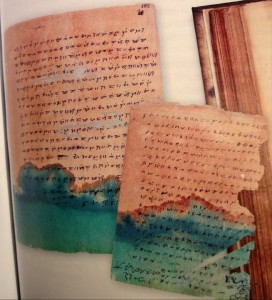
Baybayin Baybayin is a pre-Spanish Philippine writing system. It is a member of the Brahmic family and is recorded as being in use in the 16th century. It continued to be used during the Spanish colonization of the Philippines up until the late 19th Century. The term Baybay literally means "to spell" in Tagalog. Baybayin was extensively documented by the Spanish. Some have attributed it the name Alibata, but this name is incorrect. (The term "Alibata" was coined by Paul Rodriguez Verzosa after the arrangement of letters of the Arabic alphabet alif, ba, ta (alibata), “f” having been eliminated for euphony's sake." ) Versoza's reasoning for creating this word was unfounded because no evidence of the baybayin was ever found in that part of the Philippines and it has absolutely no relationship to the Arabic language. Furthermore, no ancient script native to Southeast Asia followed the Arabic arrangement of letters, and regardless of Versoza's connection to the word alibata, its absence from all historical records indicates that it is a totally modern creation. The present author does not use this word in reference to any ancient Philippine script. Modern scripts in the Philippines, descended from Baybayin, are Hanunó'o, Buhid, Tagbanwa, the Kapampangan script and the Bisaya script. Baybayin is one of a dozen or so individual writing systems used in Southeast Asia, nearly all of which are abugidas where any consonant is pronounced with the inherent vowel a following it— diacritical marks being used to express other vowels (this vowel occurs with greatest frequency in Sanskrit, and also probably in all Philippine languages). The term Baybay literally means "to spell" in Tagalog. Baybayin was extensively documented by the Spanish. Some have attributed it the name Alibata, but this name is incorrect. (The term "Alibata" was coined by Paul Rodriguez Verzosa after the arrangement of letters of the Arabic alphabet alif, ba, ta (alibata), “f” having been eliminated for euphony's sake." ) Versoza's reasoning for creating this word was unfounded because no evidence of the baybayin was ever found in that part of the Philippines and it has absolutely no relationship to the Arabic language. Furthermore, no ancient script native to Southeast Asia followed the Arabic arrangement of letters, and regardless of Versoza's connection to the word alibata, its absence from all historical records indicates that it is a totally modern creation. The present author does not use this word in reference to any ancient Philippine script. Modern scripts in the Philippines, descended from Baybayin, are Hanunó'o, Buhid, Tagbanwa, the Kapampangan script and the Bisaya script. Baybayin is one of a dozen or so individual writing systems used in Southeast Asia, nearly all of which are abugidas where any consonant is pronounced with the inherent vowel a following it— diacritical marks being used to express other vowels (this vowel occurs with greatest frequency in Sanskrit, and also probably in all Philippine languages). Origins Baybayin was noted by the Spanish priest Pedro Chirino in 1604 and Antonio de Morga in 1609 to be known by most, and was generally used for personal writings, poetry, etc. According to William Henry Scott, there were some datus from the 1590s who could not sign affidavits or oaths, and witnesses who could not sign land deeds in the 1620s. There is no data on when this level of literacy was first achieved, and no history of the writing system itself. There are at least six theories about the origins of Baybayin. Kawi Kawi originated in Java, and was used across much of Maritime Southeast Asia. Laguna Copperplate Inscription. The Laguna Copperplate Inscription is the earliest known written document found in the Philippines. Butuan Ivory Seal It is a legal document, and has inscribed on it a date of Saka era 822, corresponding to April 21, 900 AD Laguna Copperplate Inscription#cite note-bibingka-1. It was written in the Kawi script in a variety of Old Malay containing numerous loanwords from Sanskrit and a few non-Malay vocabulary elements whose origin is ambiguous between Old Javanese and Old Tagalog. One hypothesis therefore reasons that, since Kawi is the earliest attestation of writing on the Philippines, then Baybayin may be descended from Kawi. A second example of Kawi script can be seen on the Butuan Ivory Seal, though it has not been dated. An earthenware burial jar, called the "Calatagan Pot," found in Batangas is inscribed with characters strikingly similar to Baybayin, and is claimed to have been inscribed ca. 1300 AD. However, its authenticity has not yet been proven. Old Sumatran "Malay" scripts Another hypothesis states that a script or script used to write one of the Malay languages was adopted and became Baybayin. In particular, the Pallava script from Sumatra is attested to the 7th century. Sulawesi The Liboginese and/or Makassarese scripts of Sulawesi … [Read more...]
Mandirigma.org - Online Since 1998 Mandirigma Research Organization also known as mandirigma.org is a project of Kapisanang Mandirigma. Their focus includes preserving and promoting the Warrior Arts commonly known as Kali, Eskrima and Arnis. The Warrior Arts is one of the most important aspects of any society because its very nature is to defend and preserve the culture. Thus, mandirigma.org is also involved in researching issues from ancient to current. The primary objective of mandirigma.org is to do its part in keeping alive ancient knowledge and give honor to the sacrifices made by previous generations.Using both traditional and modern methods in its work, mandirigma.org has organized, collaborated with and participated in classes, conferences, demonstrations, festivals, lectures, seminars and workshops with prominent college and community organizations. Aside from their hands-on approach, mandirigma.org utilizes multimedia technologies such as audio, desktop, video and web to reach people across the globe. Researching since the 1970′s and online since 1998, mandirigma.org believes in being actively involved in giving back to the community. They have collaborated with and volunteered in various non-profit agencies. They have also arranged fundraisers in order to assist causes for indigenous tribal groups and organizations dedicated to cultural preservation in the Philippines. mandirigma.org believes that this expansive pursuit is at its best a collaborative effort. This has allowed mandirigma.org to meet and work with many fine individuals and organizations throughout the Philippines, the United States and the world. mandirigma.org welcomes all with an open and positive mind to participate and join them on this never-ending cultural adventure. This humble site is dedicated to honoring the sacrifices of Warriors throughout the many generations that have come before us. Maraming Salamat! Copyright 2012 The Mandirigma.org Logo is the property of D. Flores. It was designed by D. Flores in 1994. … [Read more...]
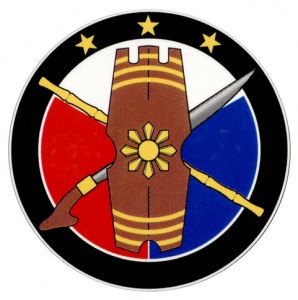
Kapisanang Mandirigma - A federation of warriors from different disciplines of the Warrior Arts of the Philippines. It is not a style, nor a representation of any singular style, but rather a federation of practitioners with similar goals to provide a vehicle for growth and personal discovery through continued training. Founded in 1998 by Guros Joel Adriatico, Hospecio "Bud" Balani Jr., Mar Elepaño, Choy Flores, Dino Flores, Arnold Noche, Gary Quan, Hans Anton Tan and Pantaleon “Mang Leo” Revilles, Jr. (RIP) from Lameco SOG (Sulite Orihinal Group), this unique federation has an ever-growing but extremely selective membership representing numerous progressive fighting styles. The ideas that interchange between the diverse styles and dedicated members create a dynamic foundation for continuously keeping the Warrior Arts of the Philippines alive with integrity for future generations. … [Read more...]
This post is password protected. To view it please enter your password below: Password: … [Read more...]
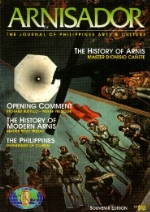
This article was reprinted with the author's permission from the Souvenir Edition of Arnisador Magazine published by Goodwill Publications Limited. More information about the magazine can be obtained by calling Peter Morgan in London at +44 (0) 171-895 0800. Saturday, June 1st, 1996 LAMECO: Legacy of Steel By Steve Tarani Swollen knuckles, bleeding forearms and battered shins - two warriors face off in a clearing. Sharp strikes of clashing rattan mix with the drawl of heavy breathing and shuffling feet. Intensely focused and alert, both combatants melt into the sweltering humidity. Glistening beads of sweat roll down to fingers wrought with open blisters. Ignoring the searing pain, each man continues fighting. Skillfully, cautiously - each life hinges upon immediate reaction to a deadly salvo of crushing blows. Such is the way of life of an Arnisador - a path chosen by Punong Guro Edgar G. Sulite. Since and before the days of Magellan, the Filipino martial arts have proven themselves highly effective standing in defiance of determined warring tribes, rabid Conquistadors and greedy foreign hordes. The LAMECO system, systematically structured and easily assimilatable according to modern training methods, is the stainless steel link in an unbroken chain of training succession. Great-grandfather to grandfather to father to son, a continual succession of knowledge and commitment breathes life into the ancient art from those very early days of foreign aggression to the current days of domestic violence. The heritage of combat-ready warriors runs deeply through the bloodline of the Sulite family tree. Born on September 25, 1957 in a rural province on the Visayan Island of Leyte, Tacloban City, Punong Guro Edgar G. Sulite was raised by a family of martial arts devotees in a rugged barrio neighborhood where deadly brawls and Bolo knife skirmishes were commonplace. In other martial arts, the attainment of a certain level automatically designates the title Master or Grandmaster. In the Philippines, there are certain norms to be satisfied before one can be called and accepted as a Master or Grandmaster. After expressing great interest in the Filipino fighting arts at a very early age, young Edgar was introduced to the rigorous training by his own father - Grandmaster Helacrio Sulite Sr. Grandmaster Helacrio first studied with his father Grandmaster Timoteo Sulite in the 1930s. Grandmaster Helacrio went on to further enhance his skills under the tutelage of several other Arnis masters of varied styles (such as the late Grandmaster Melicio Ilustrisimo and Master Almario of Cebu among others.) Grandmaster Timoteo Sulite's instructors were active in the mid-19th century and their grandfathers recalled stories of their grandfathers which included the defeat of several infamous Spanish conquistadors using the very same styles of Arnis that have been meticulously passed down to Punong Guro Edgar G. Sulite who, in turn, continues the solemn tradition to this very day. While simultaneously training under his father and coming to master the family system known as Sulite Rapelon, Punong Guro Edgar G. Sulite continually expanded his skills and combat technology by training intently with several other masters and Grandmasters all across the Philippine Islands. Punong Guro devoted his entire life to the study of the ancient systems and masters who transformed him from young eager aspirant to the refined physical embodiment of technical perfection that he has become today. Among the long list of such distinguished curators of the ancient ways is Grandmaster Antonio Ilustrisimo of Bag-on Bantayan - founder of Kali Ilustrisimo, Grandmaster Jose D. Caballero of Ozamis City, Western Mindanao - founder of De Campo 1-2-3 Orihenal and Grandmaster Leo T. Gaje Jr. of Negros Occidental - founder of Pekiti Tirsia (a close quarters combat system that specializes in knife and Espada y Daga.) Punong Guro sheds further light on the methods of his masters in a series of educational books and video tapes available to the general public. Especially in his third book, MASTERS OF ARNIS, KALI & ESKRIMA, Punong Guro provides a rare glimpse into the arcane and mystical world of the traditional Filipino warrior class. Punong Guro is also the author of ADVANCED BALISONG: FILIPINO BUTTERFLY KNIFE and THE SECRETS OF ARNIS and has produced a total of ten instructional video tapes. Punong Guro Sulite believes that the ancient tradition of keeping the sacred art only in the family is a double-edged sword. On the one hand the art is kept pure and in accordance with tradition. On the other hand, as modern times erode the interests of today's youth, (who would much rather play video games rather than listen to grandpa tell old war stories,) the passing of the torch becomes more and more limited to only a select few. Unfortunately, when such masters pass away, so goes with them, forever, the art which they … [Read more...]

February 28, 1997 By MO1
This article was reprinted with the author’s permission from the Souvenir Edition of Arnisador Magazine published by Goodwill Publications Limited. More information about the magazine can be obtained by calling Peter Morgan in London at +44 (0) 171-895 0800. Saturday, June 1st, 1996 LAMECO: Legacy of Steel By Steve Tarani Swollen knuckles, bleeding forearms and […]
April 10, 1997 By MO1
There is no excerpt because this is a protected post.

January 10, 1998 By MO1
Kapisanang Mandirigma – A federation of warriors from different disciplines of the Warrior Arts of the Philippines. It is not a style, nor a representation of any singular style, but rather a federation of practitioners with similar goals to provide a vehicle for growth and personal discovery through continued training. Founded in 1998 by Guros […]
May 24, 1998 By MO1
Mandirigma.org - Online Since 1998 Mandirigma Research Organization also known as mandirigma.org is a project of Kapisanang Mandirigma. Their focus includes preserving and promoting the Warrior Arts commonly known as Kali, Eskrima and Arnis. The Warrior Arts is one of the most important aspects of any society because its very nature is to defend and preserve […]

February 21, 1999 By MO1
Baybayin Baybayin is a pre-Spanish Philippine writing system. It is a member of the Brahmic family and is recorded as being in use in the 16th century. It continued to be used during the Spanish colonization of the Philippines up until the late 19th Century. The term Baybay literally means “to spell” in Tagalog. Baybayin […]

May 18, 1999 By MO1
Kapisanang Mandirigma founders Guro Ariel Flores Mosses, Guro Arnold Noche, Guro Bud Balani and Guro Dino Flores mentioned in the Virtual Filipino Martial Arts Museum’s “Top 200 Living Guro’s” List Exerpt from: http://www.filipinomartialartsmuseum.com/index.htm Welcome to the Filipino Martial Arts Museum, the virtual museum and repository of knowledge of Filipino Martial Arts (FMA) systems, styles, […]

February 13, 2000 By MO1
Sticks of Death (Arnis: The Sticks of Death) This Filipino Martial Arts action film features Roland Dantes. Dantes plays Johnny Guerrero, a man who masters the ancient art of arnis with the help of his grandfather to get revenge on a group of crooks who attempted to beat him to death. Using two deadly sticks, […]

July 1, 2000 By MO1
The Battle of Manila – Starts with discussion from 2 Vets memories of the WW2 Japanese invasion and internment of civilians to the military incursion to rescue the civilian prisoners at Santo Tomas and Battle of Corregidor. Battle scenes in Philippines, views of rescued US civilians, street fighting in Manila at Intramuros, bridges destroyed. […]

July 17, 2000 By MO1
“PHILIPPINE LANGUAGE TREE”, William Henry Scott (1984)

June 10, 2001 By MO1
June 12 as Independence Day by Diosdado Macapagal Former President of the Philippines “A nation is born into freedom on the day when such a people, moulded into a nation by a process of cultural evolution and sense of oneness born of common struggle and suffering, announces to the world that it asserts its natural […]

January 29, 2002 By MO1
The Moro Kris The kris is the most famous Moro weapon. Variations are found in every Moro tribe and it was a key symbol of a man’s status and rank in society as well as being a powerful talisman. Kris blades are wide at the base, double-edged, and can be waved, half-waved half-straight, or straight […]

January 26, 2003 By MO1
Inhabiting the rugged terrain of the Cordillera Region of Northern Philippines are six ethno-linguistic tribes known as the Ibaloy, Kankana-ey, Ifugao, Kalinga, Apayao/Isneg, and the Bontoc. They are referred to by a generic term, Igorot, a word coined from the root word, “golot” meaning mountain. Unlike most of the Philippines, which were ruled by Spaniards […]

May 23, 2003 By MO1
World Filipino Martial Arts Expo 2003, Bellevue, Washington

January 28, 2005 By MO1
The Butuan Silver Strip by Hector Santos © 1996 by Hector Santos All rights reserved. http://www.bibingka.com/dahon/mystery/silver.htm The Butuan area has been a rich source of material from ancient Philippines for both treasure hunters and trained archaeologists. So it was in the mid-seventies when a team from the National Museum of the Philippines excavating a site […]

May 23, 2006 By MO1
Noli Me Tangere is a novel by Filipino polymath José Rizal and first published in 1887 in Berlin, Germany. Early English translations used titles like An Eagle Flight and The Social Cancer, but more recent translations have been published using the original Latin title. Though originally written in Spanish, it is more commonly published […]

June 21, 2007 By MO1
Cordillera Administrative Region The Cordillera Administrative Region (CAR) of the Philippines is a land-locked region consists of the provinces of Abra, Benguet, Ifugao, Kalinga, Mountain Province and Apayao. Baguio City is the regional center. The Cordillera region encompasses most of the areas within the Cordillera Central mountain range of Luzon, the largest range in the […]

January 10, 2011 By MO1
Mandirigma Research Organization/Mandirigma.org, a project of Kapisanang Mandirigma, is a research organization dedicated to cultural research. Their focus includes preserving and promoting the Warrior Arts of the Philippines commonly known as Kali, Eskrima and Arnis. The Warrior Arts is one of the most important aspects of any society because its very nature is to defend […]
Copyright © 2025 · Lifestyle Theme on Genesis Framework · WordPress · Log in